




Since 1976, sports fans have been enjoying great eats, drinks, and company at The Greene Turtle. Starting this summer, the legacy brand is taking their gameday experience to the next level by including sportsbooks at two new locations under construction in Canton and Towson, Maryland.
On Feb. 15, Maryland-based Finest Flag Gaming, was awarded two retail licenses by the Sports Wagering Application Review Commission (SWARC) to operate sportsbooks in The Greene Turtle’s Canton and Towson locations, which will be
supported by betPARX.
Both locations are currently under construction and are expected to feature a modern, innovative design for an optimal sports betting and sports viewing experience. This will include state of the art audio and visual technology featuring tickers that will allow bettors and sports fans to stay informed, while experiencing the uninterrupted excitement of the sports world. The sportsbooks are expected to be ready at these locations ahead of the 2023 football season.
“We’re super excited to partner with Finest Flag Gaming and bet -
PARX, to take our guest experience to the next level” said CEO of The Greene Turtle Geo Concepcion. “We’ve been watching the incredible developments in gaming for a while, and we couldn’t be more pumped to offer a sportsbook experience that we know will resonate
with our guests.”
Restaurants are an ideal venue for sports book operations. Many bars and taverns show live sporting events on TV and will often plan their promotional schedules, parcontinued on page 117

“We’ve been watching the incredible developments in gaming for a while, and we couldn’t be more pumped to offer a sportsbook experience that we know will resonate with our guests.” — Geo Concepcion
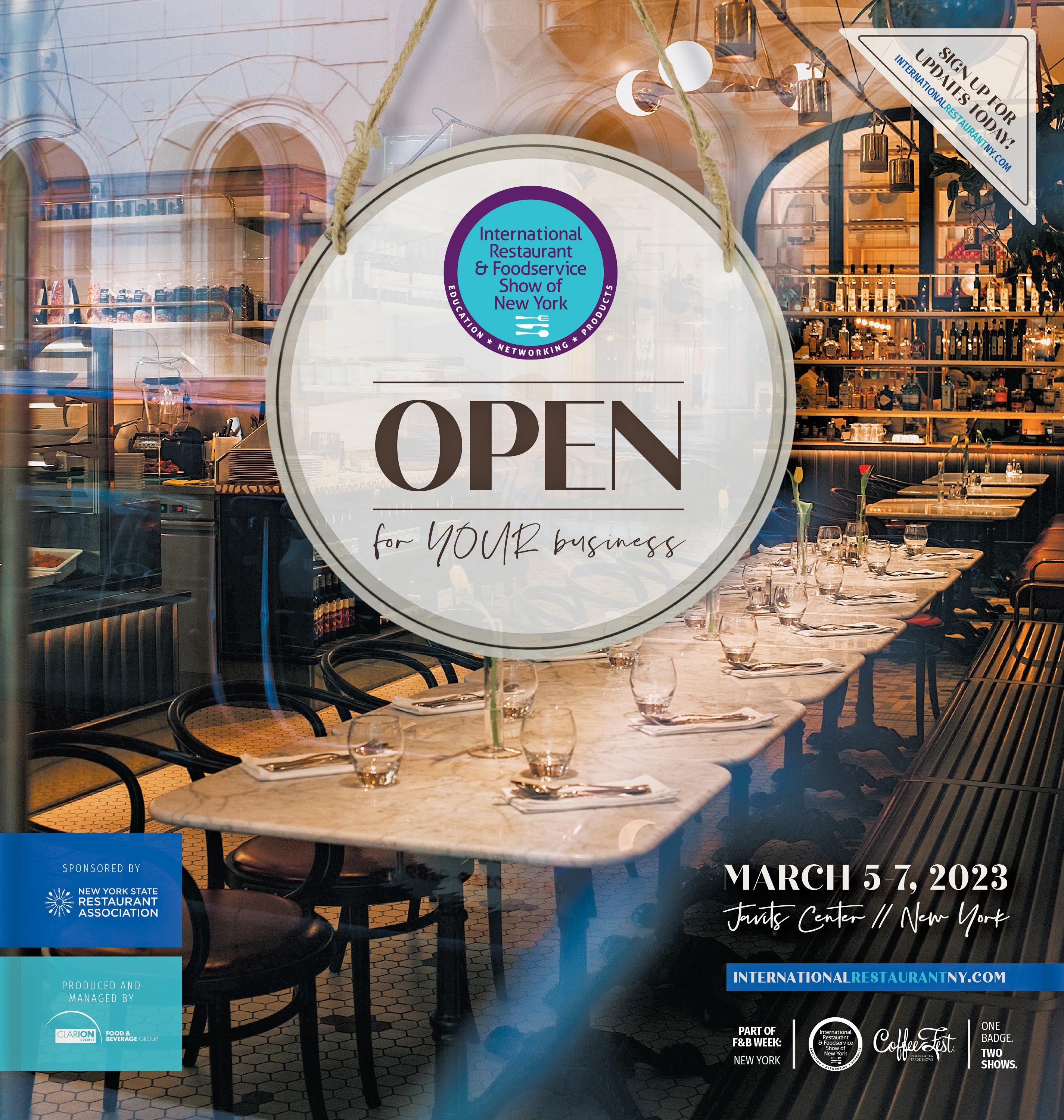
Time. There never seems to be enough of it. And when you find yourself stressed, worried or avoidant about tasks that take up your valuable time, that may be a sign it’s time to evaluate. Is there a better way? Most people don’t start a restaurant to focus on back office tasks, but some of those tasks are essential – or even legally required. So how do you focus your time and energy on doing what you love, but also make sure your business is running efficiently?
How much is your time worth: the basics
Start by thinking about your time as an hourly rate. In its simplest format, you can determine your hourly rate by dividing your salary or personal income by 2000 hours. There are several online tools available to get even more specific about your circumstance. But as a baseline, 2000 hours assumes 2 weeks of paid vacation and a 40 hour work week. Just having a rough estimate of what your hourly rate may be helpful in evaluating how to make the best use of your time.
Your time is far more valuable than a simple math equation.
Although understanding your hourly rate is helpful, time cannot be measured by money alone. Other factors need to be considered when evaluating how you’re spending your time, such as how much you enjoy the activity, long term benefits, and your own skill set.

Running the back office of your business, attracting customers, build-
ing loyalty, managing staff, creating new products and promotions – the list seems endless. For many restaurant owners or managers, back office tasks bubble up to the top of the list of ‘what I don’t enjoy doing.’ The good news? Those tasks may be the perfect opportunity to automate or outsource, saving you time and stress.
Evaluate what you’re spending time on and investigate options to increase your efficiency. For those using cloud based POS systems, backend applications can actually manage or automate about 80% of the business functionality. With back office functions automated, restaurant owners can spend a lot more time focused on customer facing activities.
Getting started can be half the battle. At DAVO Sales Tax, we often hear our customers say they can’t believe they waited so long. While it may seem like an initial investment of time to set up a new integration, especially when you’re in the midst of the stress involved of getting the task done manually because the deadline is upon you, the benefits will quickly outweigh that initial investment of time.
Sales tax is the perfect example of a stressful back office task that requires a lot of attention and attention to detail and deadlines – in other words, time. Sales tax is also the perfect example of a process that can be entirely automated by an app connected to most cloud based POS systems.
Sales tax automation apps, like
DAVO Sales Tax, can eliminate the entire complicated, manual process and tasks associated with reporting, filing and paying sales tax. With an automated process, you’re guaranteed to pay sales tax on time and in full. No more headaches and stress about deadlines and paperwork. Integration with the app takes just a few minutes. From there, you’ve gained hours back from the time spent filing paperwork and calculating the amount owed. And let’s not forget the energy stressing about having enough cash on hand or worrying about deadlines. Depending on how often you’re required to file sales tax, you’re saving hours each month or quarter.
DAVO Sales Tax can help you gain back valuable time to focus on the priorities that will help the business grow. With just a few minutes of set up, your sales tax process, filing and payments are on autopilot. Give it a try and see how much time and hassle you can save. We know how hard tax season can be so we’re offering an incentive this month!
Sign up by March 31, 2023, and get a $100 Amazon gift card at https://tinyurl.com/yckz5b9h
As a former restaurant owner, David Joseph is no stranger to the struggles of restaurant sales tax. A self-proclaimed sales tax evangelist, David co-founded DAVO by Avalara, a sales tax automation platform that integrates directly with the point of sale.
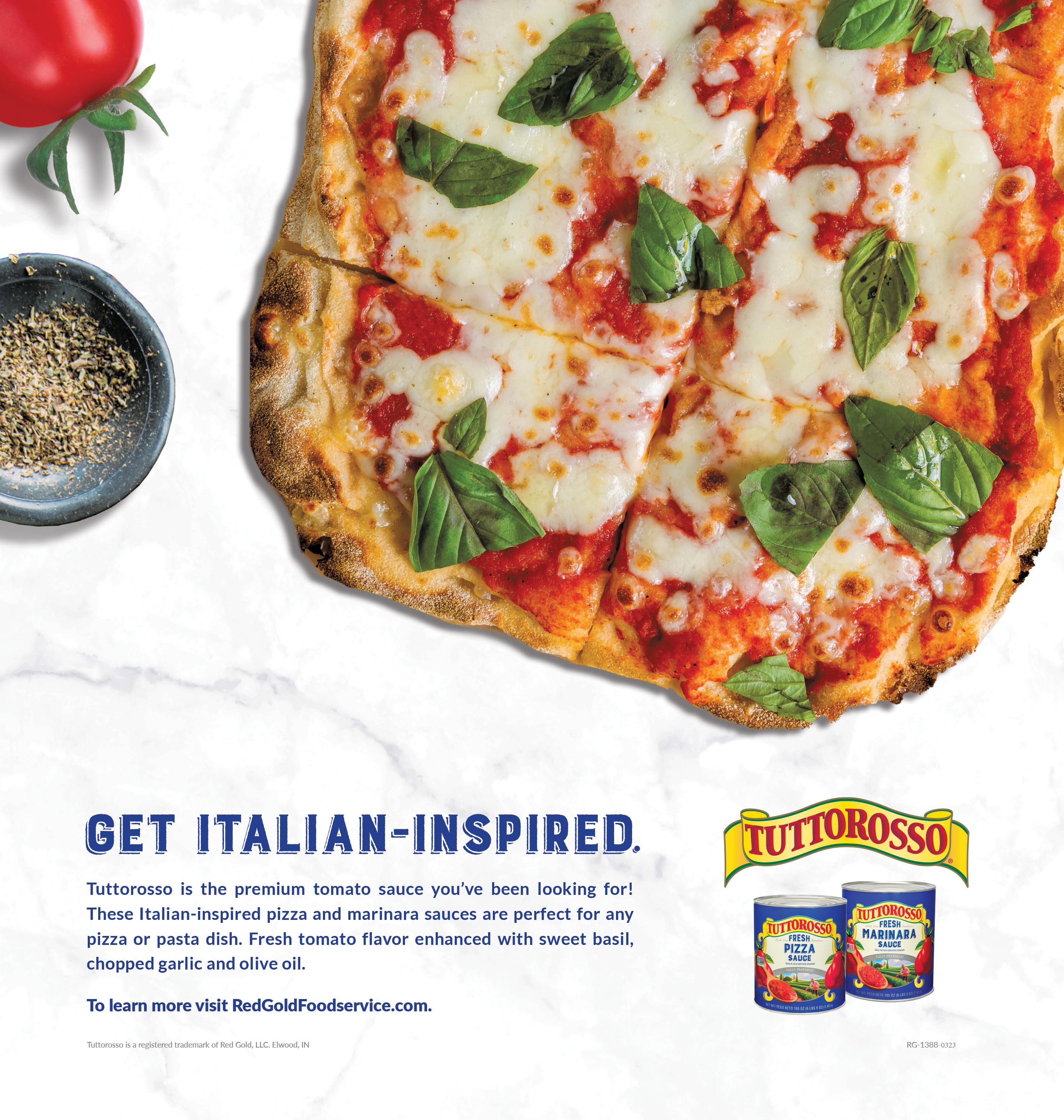
Among the unsung heroes that emerged during the Pandemic were many of the leaders of State and City Restaurant Associations. Andrew Rigie with the New York City Hospitality Alliance, Amanda Cohen and Tom Colicchio of the IRC, and in Connecticut, one Scott Dolch.
Dolch’s work as Connecticut Restaurant Association president during the Pandemic proved to be visionary. His work lobbying on behalf of the industry to both Governor Ned Lamont’s team and the Connecticut General Assembly battled to keep the State’s restaurants open during the most dire of times.
Once again, Dolch and his team are leading the charge to pass legislation that would help to ensure the future of the restaurant industry in the Nutmeg State. The Connecticut Restaurant Association wants to take an existing state tax and create a hospitality fund. The state’s 1% meal and beverage tax generated about $90 million last year. That money currently goes to the general fund.
Dolch sees the tax as a solution to the industry’s issues. “Let’s use dollars that we are actually generating and reinvest it back in our industry,” Dolch said. “This is a long-term investment into hospitality, and it can hopefully have lasting effects.” The Connecticut Hospitality Fund would distribute
50% to municipalities, 30% to the annual tourism fund and the remaining 20% towards workforce development.
About half of the funding would be distributed to cities and towns based on revenue through the meals tax. The rest would be split between the state Office of Tourism and for workforce development in the hospitality industry.
The restaurant industry currently supports 138,000 jobs in Connecticut, which is down 20,000 pre-pandemic. Tre Scalini in New Haven knows the problem all too well. The restaurant’s owner said money towards workforce development would make a huge impact.
“It’s extremely tough to find people these days,” Joe Maiorano, who owns Tre Scalini, said. “The workforce dollars are going to go towards training people, so sounds like it’s a good idea to try and grab some of those dollars. I think it will only help in the long run.”
But the issue runs past staffing shortages. “It’s the rising costs in customer’s food and drinks, the staff who serve them and even the power to run grills and dishwashers. With a year
plus of inflation, the price of everything is up somewhere between 50 to 100%,” Maiorano said.

A thousand restaurants in Connecticut have shut down since the pandemic started, but the Connecticut Restaurant Association said more closings will come in the next few months. “It’s still very difficult for restaurants in Connecticut to survive,” Dolch said. “You’re seeing closures over the last couple months of landmark locations.”
He said the Connecticut Hospitality Fund will help, but has a few obstacles to pass at the state level. Governor Lamont’s initial response was: “Our administration is committed to continuing to support the industry. We will review this proposal as it makes its way through the legislative process.”
“This is a commonsense plan to support state tourism, local economies, small businesses and our hospitality workforce,” Dolch concluded. “It would aid an industry in need, supporting small business owners and their employees, while simultaneously stimulating local economies throughout our state.”
Main Office
Publishers
Leslie & Fred Klashman
Vice President of Sales and Marketing
Michael Scinto
Art & Web Director
Mark Sahm
SCOOP News Editor and Senior Contributing Writer
Joyce Appelman
Contributing Writers
Cherry Dumaual
Francine Cohen
Editorial Interns
Claudia Giunta
Jackson Hart
Karen Jones
Keesha Joseph
Zachary Kitay
Sophia Maggio
Parker Shatkin
Phone: 203.661.9090
Email: tfs@totalfood.com
Web: www.totalfood.com
continued on page 102
“Let’s use dollars that we are actually generating and reinvest it back in our industry.” — Scott Dolch

If a busy calendar is an indication of a return to normal life, then the foodservice industry has clearly rediscovered its groove. The industry calendar is packed with the return of a full slate of food distributor shows. The local gem in the middle of the calendar is the annual International Restaurant & Foodservice Show of New York. For years, the show has brought the latest in new trends and products to New York City’s Javits Center.
With an eye on what to expect at the upcoming event, Total Food Service visited with the show’s visionary leader Rita Ugianskis-Fishman to get her read on what attendees can expect to find that they can put to work when they return to their establishments.
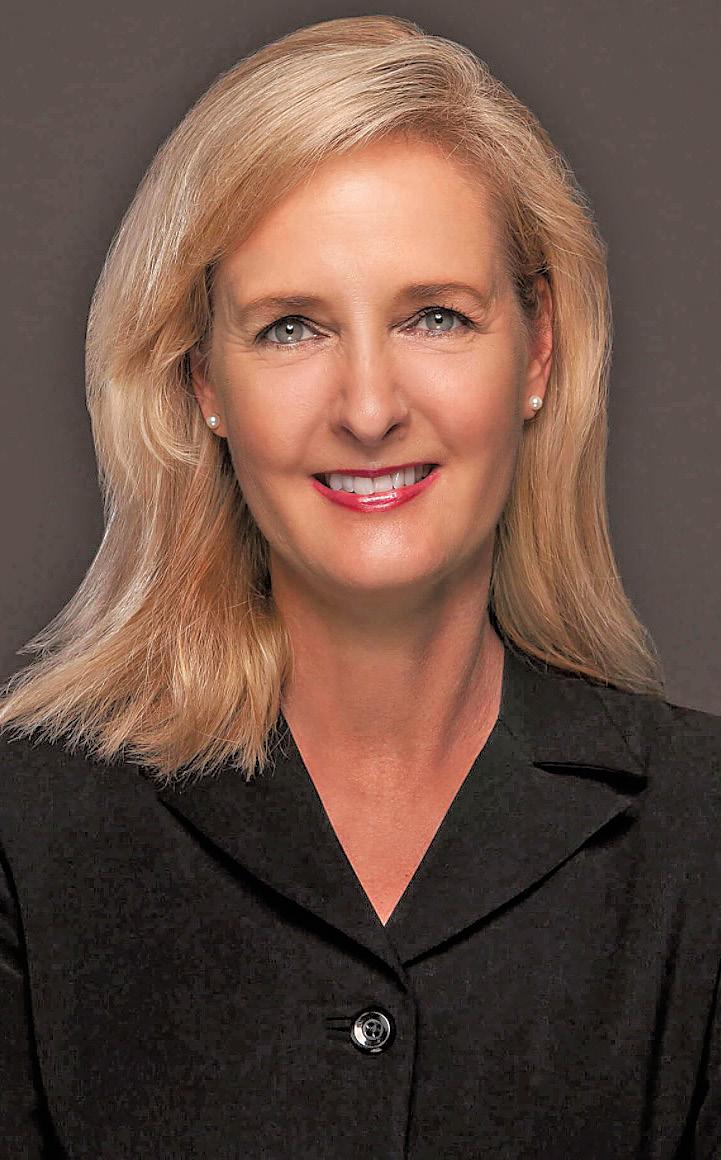
For those who don’t know the show, can you please share a brief history of the event?
The International Restaurant & Foodservice Show of New York is run by Clarion Events Food & Beverage Group and sponsored by the New York State Restaurant Association. For the last 30 years, this trade show and conference has been the leading event for the restaurant and foodservice industry in New York.
The trade show is co-located with CoffeeFest, and together these two events will bring together hundreds of exhibiting companies for an exciting and inspiring three-day conference and trade show. Foodservice industry professionals including chefs, restaurant owners and operators, and members of the front of the house and back of the house staff will gather for culinary demonstrations, education sessions, and access to food products, technology, and equipment.
When did your company take over the management of the show?
Clarion Events purchased Urban Expositions in 2017 and has been running the event since. The Clarion Events Food & Beverage Group also includes Coffee Fest, The NGA Show, Florida Restaurant & Lodging Show and the Western Foodservice & Hospitality Expo. Clarion Events operates over 180 events in 50 countries from 15 offices in the UK, the US, South Africa, Brazil, Germany, Singapore, UAE, Indonesia, Hong Kong, and the Netherlands.
What attracted your company to the opportunity in New York?
New York is the epicenter of the in-
ternational restaurant scene, and we are thrilled to bring the industry together each March. By working with the New York State Restaurant Association, Taste New York, New York State Academy of Nutrition and Dietetics, NYC Department of Environmental Protection and other partners allows us to understand the needs of the market which we can address on the show floor, throughout special events and our education program.
What is the opportunity that the New York show offers to exhibitors?
We bring thousands of buyers to the Javits Center looking for new products, services, technology, equipment and more. Over the last two years, there have been hundreds of new restaurants and foodservice establishments that have opened in NY, NJ, CT and PA, which is where a majority of our attendees come from, and this is a wonderful opportunity for them to connect with existing vendors and meet new ones.
Talk about the quality of the attendee to create that value for the exhibitor.
Buyer pre-registration is tracking 58% ahead of last year, which is a terrific sign for our exhibitors who will benefit from meeting with a larger qualified audience. Research shows that our attendees come with purchasing needs, and desire to see new products from current suppliers and uncover new vendors. In fact, nearly 40% of our registered attendees, including independent owners,
quick-serve restaurant operators, chefs, caterers, bakers, bar or nightclub operators, hospitals, hotels, and commercial foodservice personnels, never attended the event before giving our exhibitors a chance to meet with new customers.
Why is the New York show a must for the restaurant and foodservice professional to attend?
The 2023 International Restaurant & Foodservice Show of New York will provide thousands of restaurant, foodservice, and catering professionals with access to the hottest menu trends, state of the art design and decor, the best in business education, and hundreds of the leading vendors and purveyors dedicated to serving the restaurant & foodservice community — right in their backyard. The trade show floor will be filled with hundreds of exhibitors who are ready to do business with area restaurants and food service outlets. Operators will have the ability to learn, source, get inspired, taste new food and beverage products and learn about new technology and equipment. The newly designed, streamlined, education program provides unprecedented access to the full scope of hospitality-based edu-
continued on page 110
“Operators are looking for a range of products from technology to take out containers to serve their customers in the food to go space, and the show provides opportunities to discover those products.”

Nicholas A. Mercogliano, Corporate Executive Chef at Pecinka Ferri Associates, a manufacturers’ agent representing internationally recognized brands of quality foodservice equipment, was recently promoted to Partner.

“Chef Nick” Mercogliano earned his associates degree in Culinary Arts from The Culinary Institute of America. He received his bachelor’s degree in culinary management from Le Cordon Bleu.
Chef Nick is designated a World Certified Master Chef (WCMC) by The
World Association of Chefs’ Societies. Additionally, he is recognized as a Certified Executive Chef (CEC) and Certified Pastry Culinarian (CPC) by The American Culinary Federation. He was named “Chef of the Year” twice by the ACF’s Jersey Shore Chef’s Association and recognized among the 2014 “Under 30” emerging leaders in the foodservice industry by Food Service Director magazine. Chef Nick currently serves as the President of the American Culinary Federation’s (ACF) Jersey Shore Chef’s Association Chapter and as a Board member for the Association for Healthcare Foodservice (AHF), New Jersey chapter.
Most recently, Mercogliano became a Certified Professional Manufacturers’ Representative (CPMR). This is a comprehensive program that includes education on topics such as business ethics, coaching and leadership, line and portfolio profitability, and technology solutions.
Chairman and COO, Joe Ferri, Sr., CPMR, CFSP, recently praised Chef Nick and his critical role at Pecinka Ferri Associates. “Chef Nick has been with Pecinka Ferri for eight years,” said Ferri. “We are fortunate to have someone with Nick’s culinary abilities, work ethic, and business acumen now in a more senior position within the company.”
President and CEO, Ed Pecinka, CPMR, CFSP added, “I am so pleased to make Nick a partner in our company. He has earned this opportunity with his unique knowledge and work ethic. He is more importantly a fine young man.”
A Metro New York leader in foodservice equipment solutions, Pecinka Ferri’s goal is to combine smart food-
service solutions with extensive industry knowledge and experience to ensure their customers get the right product for the right application. Celebrating their 50th anniversary, they represent over 50 internationally recognized manufacturers and house a Culinary Center, with a test kitchen and bar and beverage center, to provide a hands-on experience with equipment for front and back of the house professionals.
To learn more about Pecinka Ferri Associates, visit pecinkaferri.com. See more of Chef Nick’s bio at chefmercogliano.com.
“We are fortunate to have someone with Chef Nick’s culinary abilities, work ethic, and business acumen now in a more senior position within the company.”
— Joe Ferri, Sr.
“[Chef Nick] has earned this opportunity with his unique knowledge and work ethic.”
— Ed Pecinka
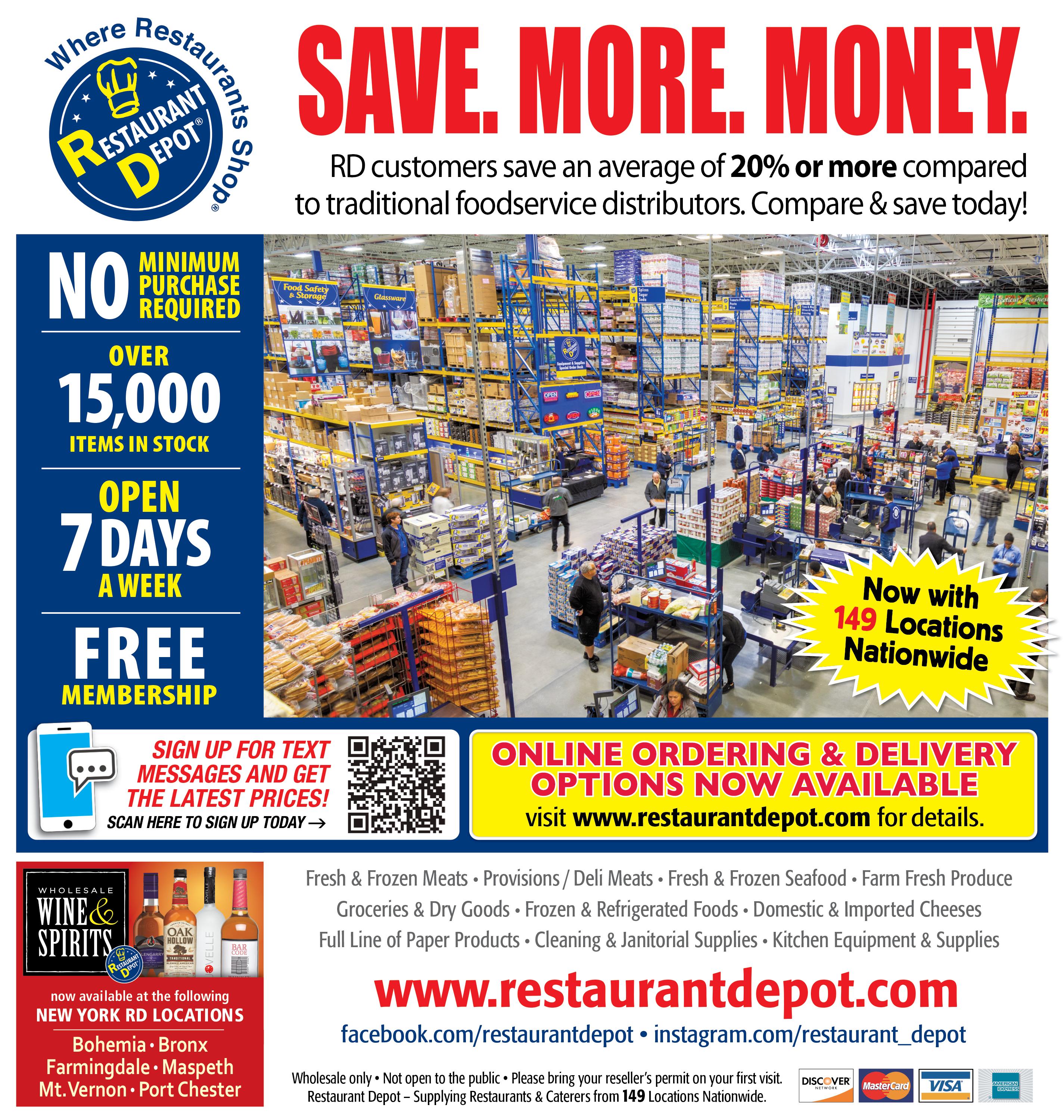

Not all ice is created equal. Every restaurant and bar will rely on standard ice types, like Hoshizaki’s crescent or Manitowoc’s regular cube, for most of their drinks. This is the ice everybody recognizes and expects. But there’s a world of specialty ice beyond those common cubes, and it just might be the key to setting your business apart from the competition.
Specialty ice adds flair to your beverage menu in one, simple step. Want to create eye-catching cocktails? Just add a sphere cube or a giant ice square. Want every single drink poured at your bar to deliver an upscale experience? Serve expensive bourbons, scotches, whiskeys, tequilas, and other fine spirits over per-
fect square ice. Specialty cubes will upgrade the aesthetic of your drinks and give your customers the sense they’ve landed somewhere special. Not every restaurant or bar has this kind of ice. If yours does, you’ll stand out and leave a lasting impression.
• Hoshizaki’s sphere, 2x2 square, classic square, and cubelet
• Manitowoc’s dice, half dice, and gourmet cubes
• Scotsman’s big cube, gourmet cube, and nugget ice
• Kold-Draft’s big cube and cocktail cube
• Ice-O-Matic’s gourmet, grande, and pearl ice
Carrying specialty ice isn’t all about looks. Thanks to their density, square cubes and sphere cubes are the slowest melting on the market. Fans of expensive liquors will appreciate the opportunity to sip as slowly as they like without the ice watering the liquor down. Meanwhile, you and your bartenders won’t have to worry about overpouring.
Another point to keep in mind: if you want to serve frozen margaritas or
other slushie-inspired drinks, you’re going to need soft ice. The cubes you typically use for water, soda, and liquor on the rocks are too hard for most blenders to crush daily without meeting an early death. Whether you choose flake or cubelet ice, one of these soft, specialty ice types will make it easier to create frozen cocktails and prolong the life of your blenders.
Adding another ice machine to your business operations means taking on the new machine’s maintenance costs. All commercial ice machines require professional cleaning and inspection at least every six months, and in some environments, more frequent visits from your trusted service technician will be necessary. An average ice machine maintenance visit usually costs $400-$500, and while it may be tempting to skip it altogether to save money, that’s a risky mistake to make with a specialty ice machine.
Consistent, high-quality
maintenance is critically important for specialty ice machines, as these units are more delicate and prone to breakdowns than standard models. Professional cleaning and inspection help prevent mechanical failure, underproduction, and costly repairs. Proper maintenance is also the only way to keep the ice clean. Mold, slime, dirt, and biofilm are more noticeable in a large cube like the sphere or 2x2 square than in standard cubes. The last thing you need is a customer posting a bad review, complete with cringeworthy picture, because of dirty ice!
Specialty ice machines are often more expensive than standard ice machines, despite the fact they make less ice per day. Restaurant and bar owners shopping for their first specialty ice machine are probably in for some sticker shock. Hoshizaki’s unique sphere ice machine, along with their extra-large 2x2 square cuber, sells for $6,000 on average through most food service equipment dealers. While ice machines that make standard size square cubes and nugget ice may be
continued on page 108
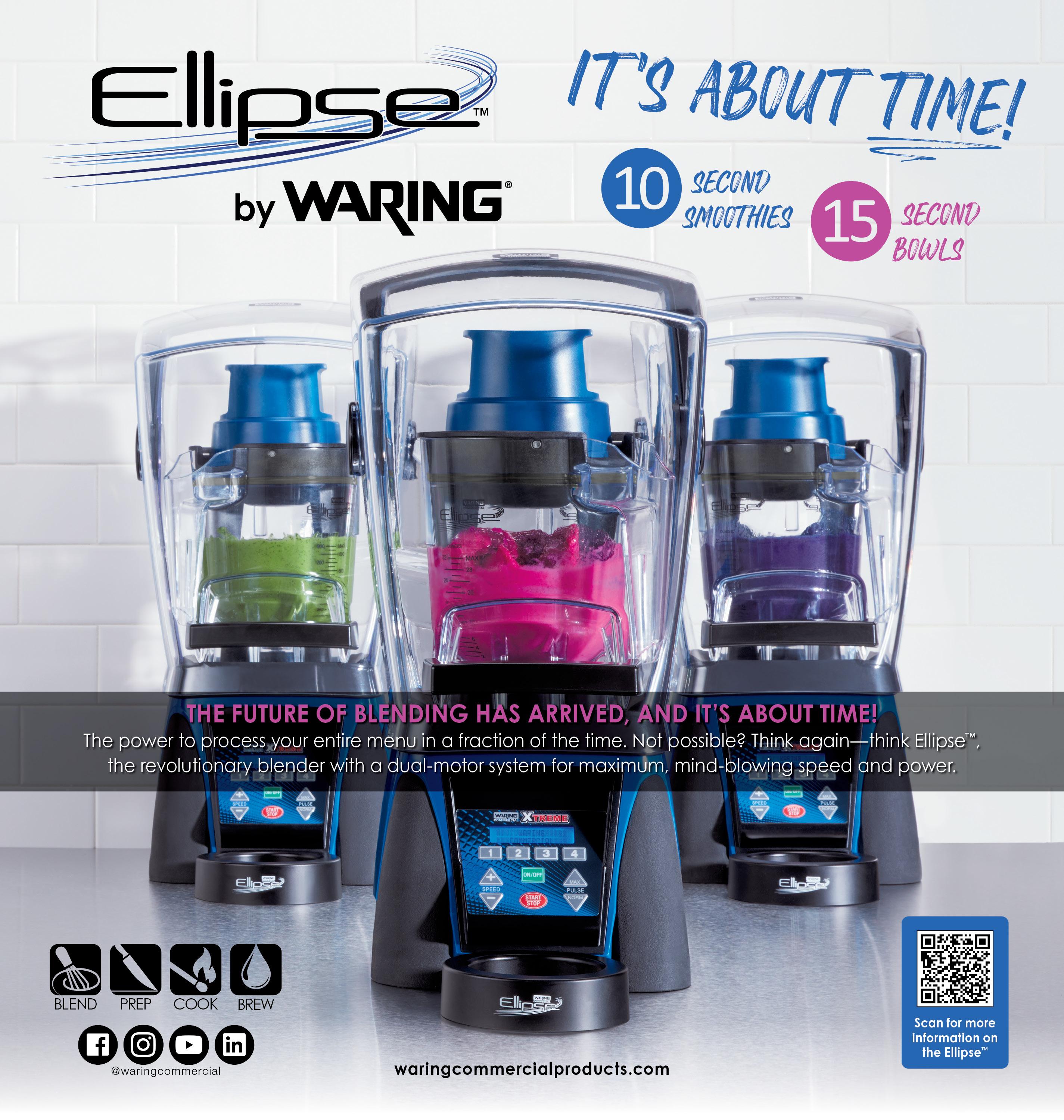


Between the lasting effects of the pandemic, catastrophic losses from hurricanes, hailstorms, and wildfires to the mix and you’ve got a pile of costly claims that are impacting the cost of insurance and making a focus on organizational resilience more important than ever. In addition, surging inflation, supply chain delays and the rising cost of goods have increased the cost of doing business nationwide. These challenges, coupled with rampant inflation,1 have insurers raising premiums and reducing limits to cope with the rising cost of claims.
The current state of the insurance market requires businesses to have present themselves in the best possible light to enable their brokers to present the best-case scenario to insurers.
This means that in partnership with your insurance advisor, demonstrate to the marketplace why they should want your business (i.e., a good loss history and corrective measures taken to prevent similar losses from reoccurring, proactive risk management/ transfer practices, proper safety protocols, and property upgrades.)
The following are 5 ways to reduce risk in a volatile insurance marketplace:
As the global economy grapples with a potential recession, organizations need to prepare for potential premium hikes and take steps to make their businesses a more
attractive risk. Organizations should:
1. Improve their properties’ risk profile. With shrinking capacity in many property insurance markets around the country; hospitality businesses need to stand out as “best in class” risks. Incorporate mitigation tools, such as installing water leakage alarms, improving security monitor-
ing, and scheduling regular maintenance of higher-risk equipment, such as HVAC systems and fire sprinkler systems.
2. Prioritize exposures. In these economic conditions, organizations will likely need to take on more risk. Reassess and evaluate deductibles, limits, and insurance program structures to identify areas where the
company can maximize its bang for the buck. This may include raising deductibles or self-insured retentions or decreasing limits to reduce premiums.
3. Reevaluate the valuation of assets. With repairs and replacement costs up significantly over the past few years, reassessing the value of your business assets is crucial. Make sure policy limits reflect anticipated replacement and labor costs.
4. Embed risk reduction in company culture. Making safety and wellness key tenets of the workplace can reduce workers compensation claims and also improve worker satisfaction by showing employees the organization cares about their well-being.
5. Be creative. Don’t be afraid to look beyond the primary market for coverage in these volatile times. Retain an expert to help identify the biggest exposures and develop an insurance strategy to best protect against those risks.
It’s important to work with an experience insurance advisor on navigating inflation insurance pricing in challenging market conditions.
1 Insurance Journal, “Home, Commercial Rate Hikes Not Enough to Offset Construction Costs: Moody’s,” May 19, 2022.
2 Pew Research Center: “In the U.S. and around the world, inflation is high and getting higher,” June 15, 2022.

Soft and delicate, with a slightly sweet, milky flavor, BelGioioso Burrata is made with hand-crafted Fresh Mozzarella filled with Stracciatella, a mix of soft mozzarella shreds and cream.
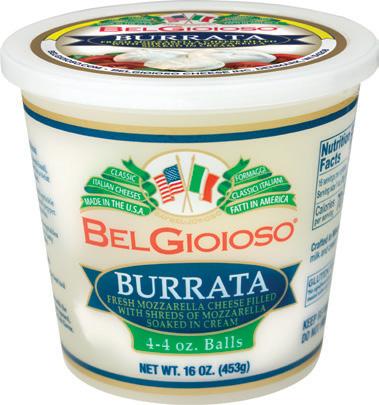
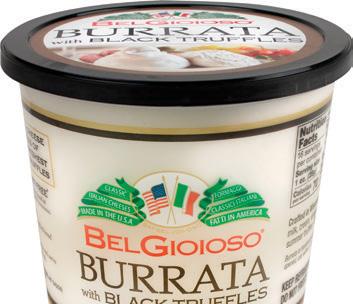
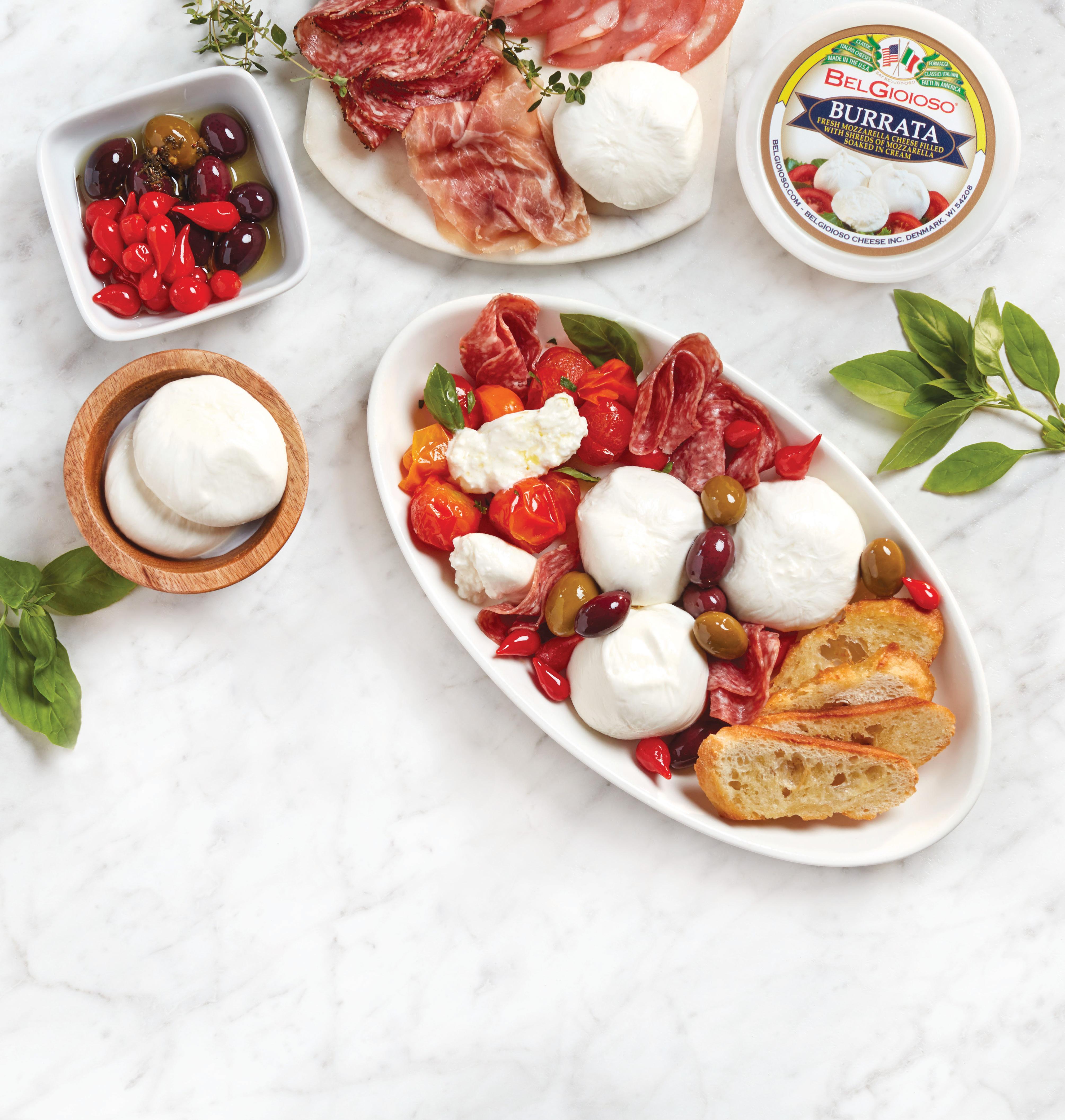
Enhance your menu by creating a deluxe Caprese salad with spooned sections of Burrata beside ripe tomatoes and fresh basil, drizzled with extra virgin olive oil. Or enrich your pizza or pasta by topping with a garnish of this fresh, creamy cheese just before serving.
Available in 2 oz., 4 oz. and 8 oz. Burrata balls, 4 oz. balls with Black Truffles, and 8 oz. and 1 lb. Stracciatella.





For more info and samples, please contact: foodservice@belgioioso.com




877-863-2123
belgioioso.com/Foodservice



Once again, the TFS and L.Sashin entry into podcasting brought unique insight into what has created success for one of the industry’s true legends: Liz Neumark, Founder of Great Performances. The Bronx, NY catering executive outlined her mission of raising people up. Neumark shared her vision and how that has evolved into the largest off-premises catering company in New York City. “It’s always been about community,” she commented.
Neumark originally opened Great Performances as a staffing firm to find waitress jobs for out of work actors. Food didn’t come into play until she was asked if she could supply hors d’oeuvres along with the staff to a function and the rest as they say is history.
“When we started in around 1980, there was no real catering business”, Neumark explained. But soon she shifted Great Performances 2.0 from contracting for finished food to opening her own kitchen. And then growth started, spurred by honesty and consistency. “It’s always been about trust… we have to help bring people together,” were cornerstones of what helped Neumark move from those humble beginnings to their current 61,000 sq. ft. space in the South Bronx.
Aside from her business, Neumark has made a huge difference
in her employee’s lives and community, “We’re a family…we look to promote from within…we have 2nd Generation people working with us”. Her contributions to the community through the Sylvia Center and Katchke that work for children’s nutrition and the Bronx Chamber of Commerce have fulfilled her original goals laid out at Barnard where her degree was Urban Studies. She summed it up with, “When I grow up, I want to make the world a better place.”
After a great session with Liz Neumark, whose style of management is both instinctual and freeform, the Virtual Breakfast Sessioon were brought back to the reality that most business owners face. On February 22nd, VBS shifted gears to discuss something that is both basic and grossly over-
looked in many small to medium sized businesses: a written, up to date business plan.
“A business is a living, breathing, ever changing entity. If you don’t have a written plan, you have nothing to guide you,” stated Mike Gansl of Voice of Reason Consulting.
Joseph McLellan, of legal firm Greenspoon Marder, added, “A business plan is like a corporate resume… It speaks to your investors, landlord and future partner to let them know that this is a serious business.”
Diane Giordano of Marcum, LLP pointed out that during the writing of the business plan the type of business entity is chosen. “It can be a sole proprietor, to LLC or any other type of corporation…this can change during reviews as the
business grows,” she said.
Restaurateur Cole Bernard of Brandit Hospitality Group stressed the importance of keeping your plan current. “Things are changing rapidly… prices that you paid in 2019 are much higher now” and if you plan is not updated on a regular basis, it’s basically useless.
Mike Gansl summed it up by stressing, “Monthly checks of your P&L… performing a SWOT twice a year” and updating your business plan will help you “Stay nimble to meet today’s challenges”.
The next VBS will take place on March 8th at 9:00 am. The topic is “Catering and Event Menu ChoiceIt’s No Longer Just Beef, Chicken or Fish”. “There’s a built in ‘twist’ to this one, so don’t miss it,” noted VBS host Larry Sashin.
The bi-monthly VBS-Virtual Breakfast Sessions are a production of L.Sashin and TFS. The programming is entering its second year with a goal of creating unique perspectives and solutions for the restaurant and foodservice professional.

Info on upcoming sessions that are held on Wednesdays can be found at: https://bit.ly/3xWUc0V
All past VBS’s can be seen on YouTube or at https://totalfood. com/vbs/


The future of blending has arrived, and it’s about time. Experience the power of top-down blending that propels you beyond limits. The brandnew Waring® Commercial Ellipse™ Blending System has been designed to change the way you think of blending with shorter blend cycles, greater output, and more consistent results. The Ellipse™ blender revolutionizes blending with a dual-motor system that maximizes speed and power to let you serve more customers in less time. Blend beyond boundaries without the restrictions of limiting equipment. You’re now free to go beyond traditional blending! No longer let ingredients, time, or manpower limit you!
The Ellipse™ blender allows you to maximize your blending output with a powerful and versatile all-inone blending solution. Designed to take on every blending task with optimal efficiency and blend any recipe

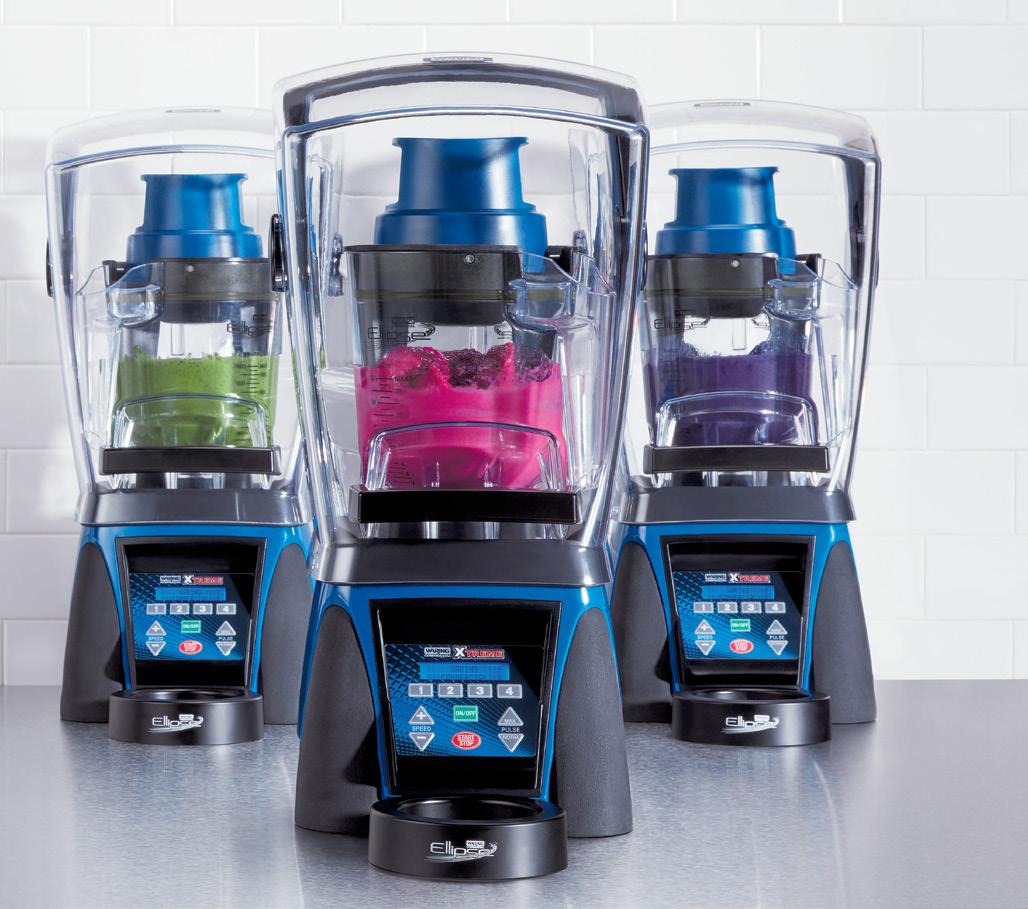
in record time, this next-level blending breakthrough is sure to increase sales at your foodservice operation. Quicker-blended smoothies mean increased efficiency in your operations, allowing you to serve more customers in a shorter amount of time. This extraordinary speed gets your customer in and out the door in a timelier manner, leaving them satisfied and eager to come back.
Limitless menu development. Nutritious and consistent results. Increased revenue and throughput. Less waste and more profits. It’s all easily achievable now, thanks to the Ellipse™ Blending System.
“We’ve been working on this breakthrough in blending technology for a while,” said Waring Commercial General Manager Dan DeBari. “Now that we’ve perfected it, we decided to unveil the Ellipse™ to the world and let chefs and operators see for themselves what a game changer it is.”
So what makes this blender such an amazing innovation? The Ellipse™ blending system features a rechargeable motordriven dasher that cuts blending times and boosts productivity. The unique dasher technology significantly reduces bridging by automatically rotating within the jar to scrape ingredients from the walls. The motion pushes ingredients back into the blade, breaking up air pockets and eliminating the need for a tamper or any manual manipulation. The result: quick work and less manual operation of heavy-duty blending jobs for smooth, consistent output.
The newly designed sound enclosure automatically activates the motor-driven dasher system when closed, ensuring quiet operation and reducing vibration for commercial power without commercial noise. The removable coupling system makes the unit easy to maintain, with less downtime. The Ellipse™ uses the strongest and most powerful blender base in the Waring Commercial line, the MX1500, providing you with unmatched power: 3.5 horsepower and a 30K RPM motor!
Just how quick is the Ellipse™ blender? This superbly engineered blending system is so powerful and efficient it produces perfect smoothies in 10 seconds and mouthwatering, multi-ingredient smoothie bowls in 15 seconds. The high-torque motor and lithiumion battery pack can power the Ellipse™ Drive to produce over 1,000 smoothies and smoothie bowls on a single charge. The space-saving Docking Station at the base holds the Drive for easy access between
continued on page 120

The relationship between marketplace apps and restaurant operators can be best described as lovehate.
On the one hand, marketplace apps have revolutionized the food delivery industry by bringing exposure and increasing customer acquisition opportunities for restaurant brands.
On the other hand, they charge high commission fees (anywhere from 15-30% on each order) and offer limited control over the delivery process. This makes it difficult for restaurants to generate profits and build relationships with their customers when it comes to delivery orders.
According to BusinessofApps, Doordash had 25 million active users and 390,000 merchant partners as of 2021. With restaurant delivery growth in double digits, marketplace apps will only grow their share of a restaurant’s business.
Therefore, restaurant operators should start optimizing their relationships with marketplace apps instead of avoiding them.
In order to make the relationship more sustainable, operators must find a solution that reduces delivery fees, helps them to take back ownership of customer engagement, and improve service levels.
reach $231bn by 2023. If restaurants don’t find a better solution, their dependence on marketplace apps will increase while their margins continue to dwindle.
In order to address the high-cost fees and visibility issues associated with marketplace fleet delivery, many restaurants are turning to delivery management software.
The right software solution can help restaurant brands to drive down their delivery fees, automate their dispatch efforts, and dramatically improve their end-customer experience.

order volume makes sense for restaurant brands. However, paying an additional 15% for delivery means sacrificing most of the remaining margin to be made.
Luckily, however, delivery management partners can help you to achieve more favorable rates for your marketplace delivery. This is the most sustainable solution for restaurants that wish to continue using marketplace fleets without compromising their revenue.
for restaurants.
When a delivery driver from a marketplace fleet fulfills an order, the restaurant has no control over the service level the end customer will receive.
In light of this, having delivered an order to your customer, a delivery driver could have also fulfilled multiple orders along the way. This often results in late delivery times, cold food, and negative reviews for operators who are ultimately blind to the issues at hand.
Using a delivery software solution can help to provide the restaurant with detailed data and analytics on delivery orders - even the orders fulfilled by third-party fleets, giving operators full visibility over the entire delivery process.
With access to this information, restaurants can identify areas for improvement, make data-driven decisions, and optimize their delivery operations accordingly.
The key is to establish a successful relationship where both parties benefit.
In order to achieve this, there needs to be some flexibility within the ecosystem.
When it comes to marketplace delivery, the economics fail to stack up.
The restaurant food delivery industry in
Paying up to 15% to capture more
By using a delivery management solution with extensive partnerships, restaurants can save up to 24% on delivery fees while continuing to access new customers and revenue from the marketplace platform. Ultimately, turning delivery into a profitable channel
continued on page 122

This Sunday morning, there’s a good chance that there is a Bloody Mary on the breakfast and brunch menus of many restaurants and foodservice operations across the US.
If you’re trying to make a Bloody Mary with body, flavor, and that brilliant red color, you can’t simply pluck the cheapest tomato juice off the shelf. Ideally, you use a customerforward, trusted, and genuinely tasty brand.
With that comes a statement to your patrons and staff that only the highest quality Bloody Mary can be part of your menu.
For years, Bloody Mary connoisseurs have placed their trust in Sacramento® tomato juice, a product of

Red Gold Foodservice. Established in 1942, Red Gold is a premier tomato company with a range of tomatobased juices, sauces, and condiments; according to their website, they produce “the freshest, best-tasting tomato products in the world.”
In 2001, Red Gold bought the tomato brands and assets from Tri-Valley Growers, a California company. Serendipitously, one of their products was Sacramento® tomato juice. Since that acquisition, the 46-ounce canned Sacramento® tomato juice has become one of the top Red Gold products.
This basic tomato juice is a fan-favorite, “but there’s always been small but loyal following for Sacramento® brand blood mary mix – in a can,”
said David Halt, Senior Director of Business Development at Red Gold. “We let that following incubate for quite a while,” said Halt, “but we finally decided to invest in the brand and product.”
For Halt and his tomato-savvy colleagues, their Bloody Mary mix is all about the body of the tomato juice, as well as its packaging. Accordingly, Red Gold invested in a glass, resealable, 32-ounce bottle for their Bloody Mary mix, so it’s ready to support the bar’s operation by eliminating what could be a precarious pour from a 46-ounce can.
The company also performed an “intensive deep-dive” into competing Bloody Mary mixes, Halt explained. To create a Bloody Mary mix that satisfies modern patrons, Red Gold formed a panel of ten different food and beverage experts, sent them samples of their mix, and asked them: “What would you change?”
The final mix is a product of these changes, but it doesn’t stray too far from its foundations: thick, rich tomato juice. The mix retains the integrity of Sacramento® juice but features more Worcestershire sauce, garlic, and horseradish, which is visible in the mix. Halt acknowledged the influence of secret spices; and while he can’t disclose them, he generously shared the basic features of a good Bloody Mary.
Even in the era of Instagram-able,
innovative brunch dishes, the fundamentals of a good Bloody Mary remain basically the same. “In addition to the trademark spices and tomato base, a Bloody Mary mix needs to be well-chilled, said Halt, so it doesn’t become diluted by ice and vodka. A classic sea salt brim sharpens the savory flavors, and a garnish of celery or green olive completes the look.”
While Bloody Marys are widely recognizable, there’s ample room for creativity in the garnish department, as well as the alcohol. Because Red Gold is a U.S. brand, Halt foresees future partnerships with vodka brands in the ‘States, but notes that Bloody Marys aren’t restricted to vodka. Depending on the region, mixologists might pair tomato juice with tequila, gin, and even beer.
Inventive Bloody Marys appeal to brunch-goers as well as patrons at higher-end breakfast restaurants. On new-and-improved breakfast menus, Bloody Marys aren’t just a beverage, said Halt, but an opportunity for customers to eat their drink – and for restaurants to “advance their margins.”
“This advent of adding appetizers turns a $6.95 Bloody Mary into a $9.95 order, or an $11.95 order, simply by upgrading the presentation,” said Halt. If restaurants aren’t sure what to add, Halt recommends parlaying a signature dish into the
continued on page 124
“This advent of adding appetizers turns a $6.95 Bloody Mary into a $9.95 order, or an $11.95 order, simply by upgrading the presentation.”
— David Halt
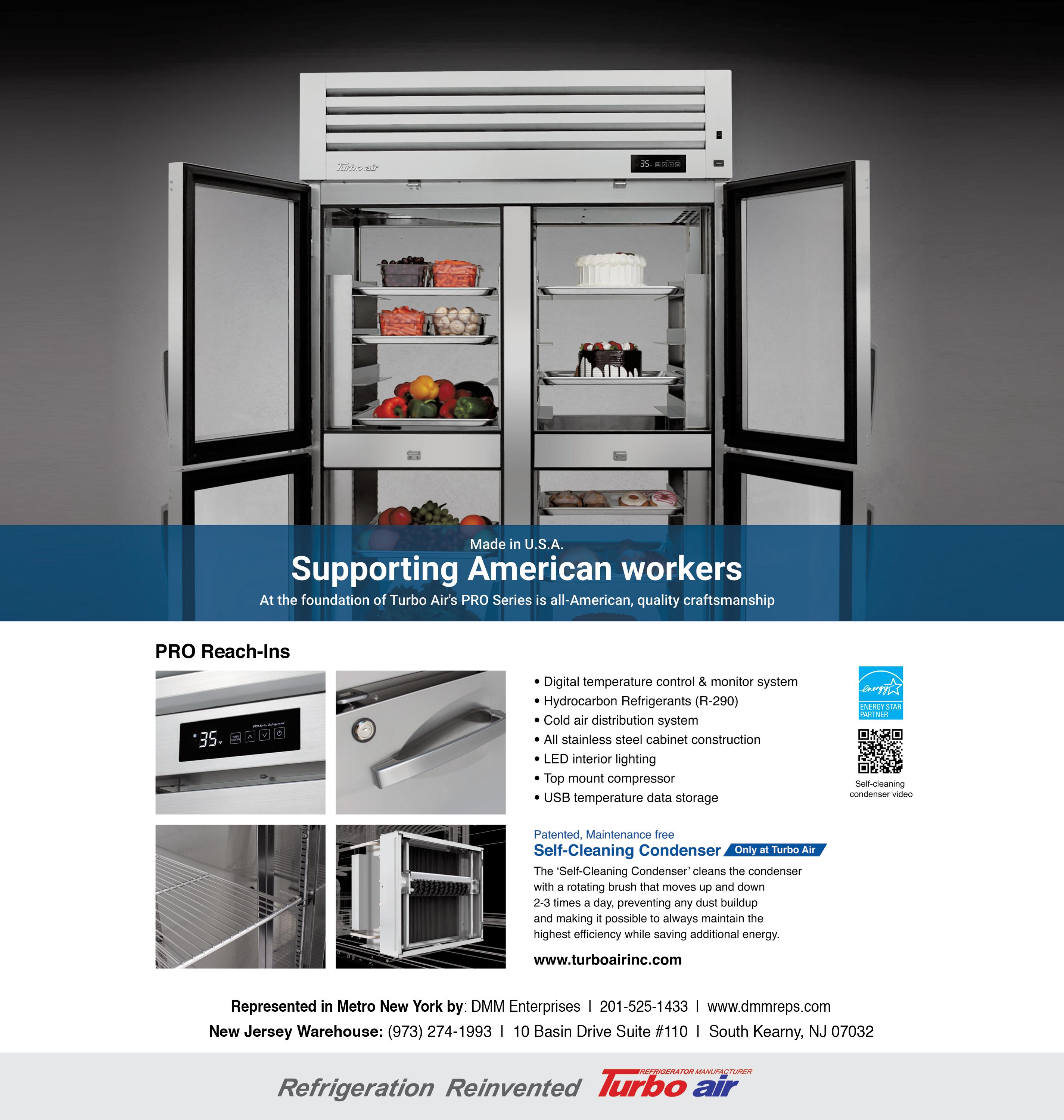

Grace Goudie took a chance during the pandemic in the opening of Scratchboard Kitchen in Arlington Heights, IL, a suburb of Chicago, in 2020 alongside owner Danielle Kuhn. With mentorship from renowned Chef Thomas Keller at Ad Hoc and The French Laundry, Chef
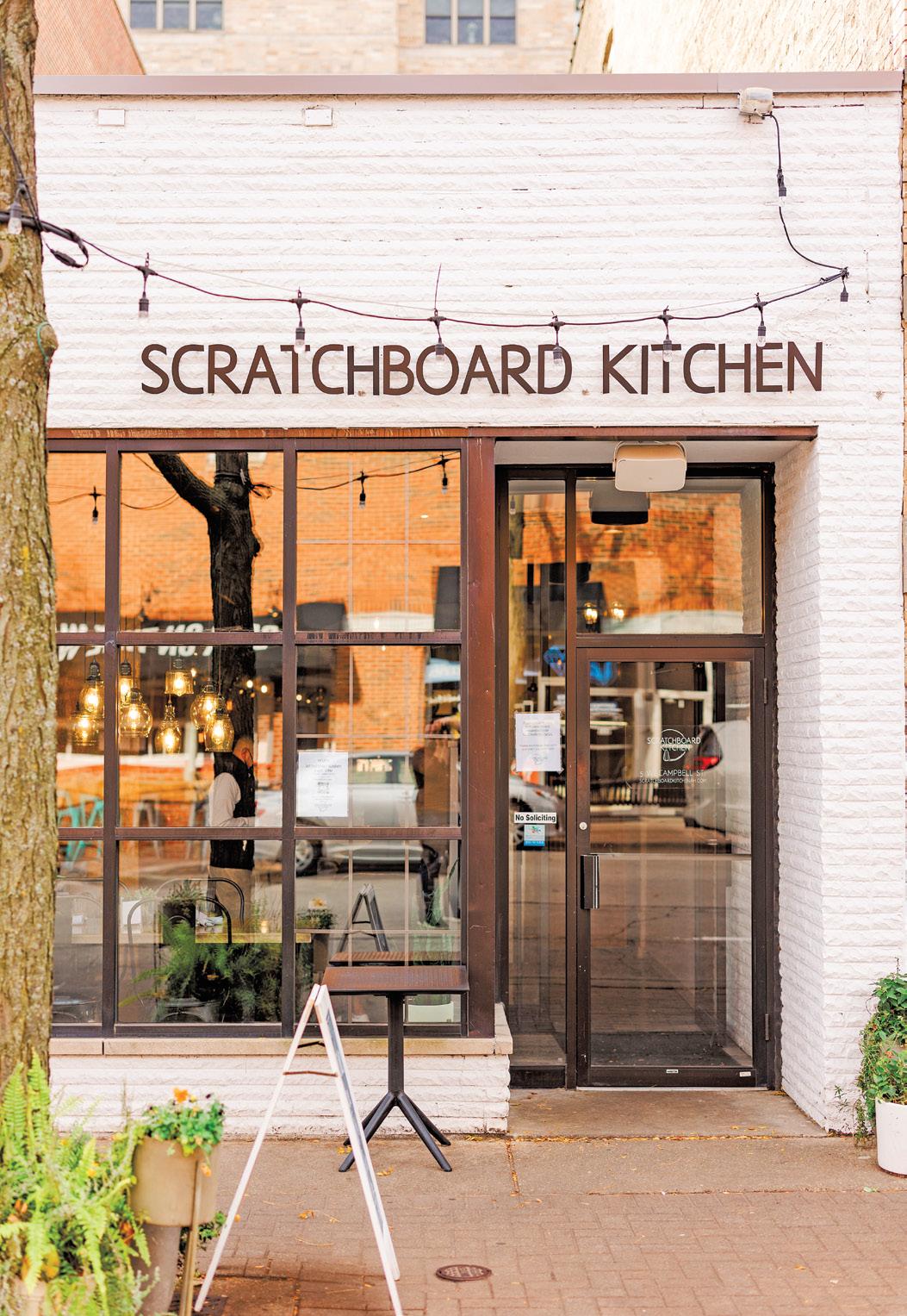

Grace picked up meaningful experience and inspiration which brought her to her position as Scratchboard Kitchen’s executive chef. Today, chef Grace sources from local farms and purveyors for her seasonally driven food from scratch menu. The chef shares her vision for the latest concept and plans for the future.
Can you walk us through your career track and how you found your passion for the culinary field?
My passion for the culinary field came about for a couple of reasons. From a young age, I always watched my Czechoslovakian grandfather in the kitchen. After realizing I had
an interest in cooking, he started to teach me what he knew. Then, in middle school, I took my first home economics food class. This is where I first started to follow recipes and see cooking from a more formalized perspective. After a few months of this class, I declared that I wanted to be a chef when I grew up, and I certainly made that happen!
My career essentially started when I was in high school. I began working as a hostess at a local restaurant. I worked in various restaurants throughout my high school and college years. After earning a degree in communications and hospitality management with a concentration in food and wine, I ventured out to California for culinary school. I always knew I wanted formal culinary training. I attended The Culinary Institute of America in St. Helena, CA. After culinary school, I landed a job with Chef Thomas Keller. This opportunity changed my life and my career trajectory. I learned so many invaluable skills and lessons under Chef Keller, and this time working for him made me the chef that I am today. It allowed me to form foundational skills as well as learning to be a chef
compass. My
me to become
continued on page 106

Late in February a new piano bar lounge soft opened on the Upper West Side in the Wallace Hotel. Known as The Wallace Lounge, and operated by a local restaurateur, Andrea Loscalzo, who owns the nearby restaurant and deli, Salumeria Rosi, this was big news.
Not just because it’s the newest nightlife offering in a neighborhood with a legacy of being a haven for musicians and singers who currently have few places outside of venerated concert halls for them to perform. Not even because it’s a grown-up spot in a sea of neighborhood bars. Rather, what stands out is their wine list. It lists the standard options, sparkling, white, red… and then… kosher.
Kosher wines as a category?! On a wine list that coincidentally previews just days before antisemites around the country buzz on social media about plans to gather for a day of hate targeting Jewish people?! You can’t make up this intersection of the bad news about where this world is going and the good news about the fate of our nation – and a business - if you tried.
Thankfully, good triumphs here where a savvy operator really knows his neighbors and potential customers. But why is a kosher designation
on a wine list such an anomaly?
This is not one of the four questions that Jews everywhere will be asking during their Passover seder on April 5th, but it is definitely a question that bar and restaurant owners should be asking themselves if they are looking for new pipelines for profitability and want to invest in their business’ longevity. Especially in a world that is very aware of, and engaged in, inclusivity.
Passover is next month, and obviously a time for enhanced sales of kosher wine on the retail side. But at the on-premises level the sudden rush for kosher wines isn’t as obvious. Sometimes the availability of kosher wines and spirits isn’t even

known. Bars and restaurants are missing out. And they don’t even know it.
Recently a one-question survey about the availability of kosher wines and spirits used in bars and restaurants was presented to a group of 5,000+ bartenders via Facebook. Accounting for algorithms and the fact that not everyone logs onto social media all the time, the absence of response was astounding. Out of a group of potentially 5,000+ bartenders there were three responses. One from someone who had poured kosher wine and spirits at their restaurant bar in the past and had a few good products to recommend, one from a retailer
Francine Cohen is an awardwinning journalist covering the business of the f&b/hospitality industry, and a proud native Washingtonian (DC). In addition to her work as a journalist she keeps busy fundraising for Citymeals on Wheels, Les Dames d’Escoffier, NY Women’s Culinary Alliance, and the USBG Foundation and serves as chief storyteller and brand steward for clients in the food and beverage sector by providing them with strategic marketing and business growth guidance. She has never met a cheese or beverage she does not like, and lives with her husband in New York; leaving him behind to visit New Orleans every summer. (Except 2020-21. Darn pandemic.) You can reach her at francinecohen@mindspring.com
dedicated to an educational and inclusive wine-buying experience, and one from a bartender building a new cocktail menu and realized that having kosher offerings might be an additional way to build business and loyalty.




They got it. And it is because of these few in-the-know/ahead of the crowd folks that kosher wine sales have doubled every year. The spirits category over the last four years has also seen a shift upward.
Gabriel Geller, Director of Public Relations for Royal Wine, which is the leader in kosher wine and spirits in the United States, notes that growth in the kosher spirits sector is even stronger due to, “the introduction of new and expanded varieties.”
Translated, that means something new to offer customers! And what delights customers more than a new experience? It certainly intrigues them, as Geller points out when speaking directly about kosher wines and shares, “Restaurants are recognizing Israel as a new wine growing region to get quality wines, and recognizing Herzog Wine Cel -
continued on page 104


This reality cooking show is hosted by chef Roy Choi, known for his creative Korean fusion dishes, and filmmaker Jon Favreau. The pair explore food and cooking with celebrity guests and chef friends, including Bill Burr, Seth Rogan and David Chang.
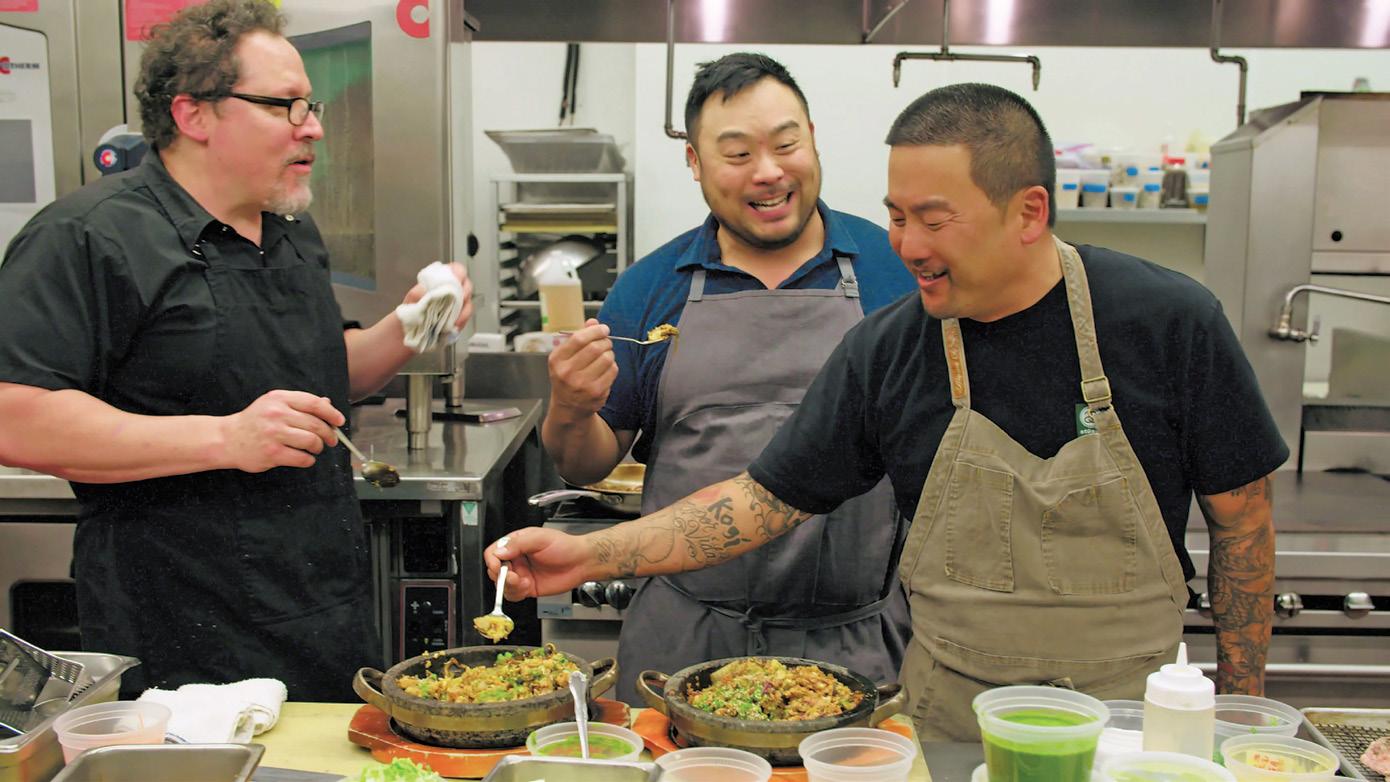


 Joyce Appelman
Joyce Appelman
Phil Rosenthal, the creator of Everybody Loves Raymond hosts this travel documentary series that explores cuisine from around the world. Each episode focuses on the thriving culinary scene in different cities, from Bangkok to Chicago.

Matt Sartwell, Managing Partner, Kitchen Arts & Letters Bookstore in New York City shares his book reviews...

This book benefits Refettorio Paris, an outpost of the effort by Chef Massimo Bottura to reduce food waste and address food inequities.

In it, 37 leading chefs share recipes—very handsomely and imaginatively photographed—that repurpose ingredients that might otherwise be headed for the com -
post bin or which have previously been regarded as uninteresting.
Contributors include many of the brightest names in the French culinary firmament, including:
• Pascal Barbot of Astrance
• Sébastien Bras of Le Suquet
• Mauro Colagreco of Mirazur
• Bertrand Grébaut of Septime
• Cédric Grolet of Cédric Grolet Opéra
• Pierre Hermé of Pierre Hermé
• Olivier Roellinger of Le Coquillage
• Apollonia Poilâne of Poilâne
• Michel and César Troisgros of Le Bois Without Leaves
There’s a playful quality of many of the non-presentation photos that helps set an exuberant mood as the book celebrates a new range of possibilities.
Iliana Regan’s gripping culinary memoir Burn the Place won praise from a wild variety of sources, including literary figures and her professional colleagues.
Now, in this second book, she vividly recounts her effort to build a restaurant centered on foraged foods, a place that, like so many, was just beginning to take off when COVID disrupted everything.

The pandemic was not the only unexpected force Regan and her new wife had to contend with as they settled in to the remote Michigan wilderness. Writing with the same frankness she brought to her
continued on page 118
WHAT WE’RE READING: WHAT WE’RE WATCHING:

As restaurateurs settle into a new year, it might be tempting to skim past the details in pursuit of big-picture goals. But over time, small oversights can snowball into mountains of unnecessary liabilities.
At Meister Seelig & Fein (MSF) PLLC, we work regularly with restaurant and hospitality clients whose legal questions stem from common workplace issues. While nearly universal, these issues are crucial, and they’re deeply human concerns. Within the restaurant industry, we’ll start with one of the greatest pressure points: raising the minimum wage for restaurant workers and sharing pay rates transparently.
With Governor Kathy Hochul’s proposed budget for 2024, the alarm bells need to go off in the restaurant
Wherever they’re located, New York restaurants should develop wage ranges for anticipated new hires and include those ranges in any advertisements or postings for jobs, promotions, and transfers in order to ensure compliance with these new requirements.

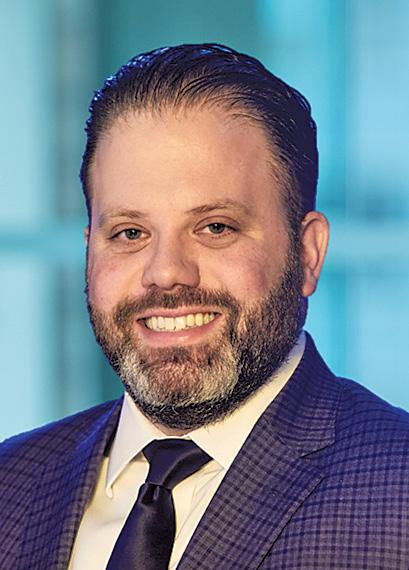
community. Pay close attention in the coming weeks as to how her proposal will be received by New York State’s legislators.
The Fiscal Year 2024 Executive Budget reflects Governor Hochul’s goal to tie minimum wage into inflation in future years. In her January 10th State of the State address, she called for raising New York’s minimum wage, which is $15 in New York City, Long Island and
Westchester, which has been rapidly falling in value as New York and the nation have faced the highest inflation in 40 years. Those inflation rates translate to the following expected minimum wage increases under Governor Hochul’s proposal: a 60 cent raise in 2024, and 35 or 40 cent raises each year for 2025 and 2026, which would leave the minimum wage at $16.40 downstate and $15.55 upstate by 2026.
Recognizing the existence of pay disparity, particularly for women and minorities who have faced a long history of unequal pay practices, pay transparency legislation went into effect in NYC and Westchester toward the end of last year and will go into effect for the rest of New York in September 2023. Wherever they’re located, New York restaurants should develop wage ranges for anticipated new hires and include those ranges in any advertisements or postings for jobs, promotions, and transfers in order to
ensure compliance with these new requirements.
While pay is a longstanding concern, new issues are shaping legal conversations in the restaurant industry. At the federal level, we witnessed the Speak Out Act becoming law in December of 2022. The Speak Out Act prohibits the use of pre-dispute, non-disclosure, non-disparagement agreements for claims of sexual harassment and sexual assault. This legislation piggybacks on the Ending Forced Arbitration of Sexual Assault and Sexual Harassment Act of 2021, a law that invalidates pre-dispute arbitration agreements, which would prevent individuals from bringing sexual assault and sexual harassment claims to court.
To effectuate these historic changes, how should restaurant employers revise their fine print? First, they
continued on page 112




The new year has brought enormous changes in legislation across the country regarding materials used in foodservice packaging. As of Dec. 31, 2022, New York State has banned the sale of paper-based plates, cups, bowls and other food packaging with intentionally added PFAS (perfluoroalkyl and polyfluoroalkyl substances) under the Hazardous Packaging Act. California’s new AB 1200 law bans the use of PFAS in paper, paperboard, and other plant-based food packaging as of Jan. 1, 2023. It also requires manufacturers of such packaging to use “the least toxic alternative” when replacing PFAS.
The nation’s restaurant and foodservice operators will need to understand the changes in the laws and how to build a compliant packaging strategy. With that in mind, Total Food Service sought out Inline Plastics President and CEO Tom Orkisz to get his thoughts on the packaging marketplace and suggested solutions for the future.
Can you please share an overview of Inline Plastics’ history with our readers?
Inline Plastics is the leading manufacturer of innovative, high quality, crystal clear, food packaging. With more than 50-years in the industry, we transformed the marketplace in the early 2000’s with our Safe-T-Fresh® line, a tamper-resistant and tamperevident product. Safe-T-Fresh utilizes our patented tear-strip technology, providing retailers and consumers with greater protection of the contents. With the recent launch of our Safe-T-Chef®, the food service market now has options never before available – a product line of tamper-evident, tamper resistant polypropylene packaging for hot food applications. We continue to design and manufacture packaging solutions that keep food products safe, fresh, and enhance shelf merchandising. We also offer the most complete line of automated equipment to load, close and label our packaging.
What was the niche that Inline saw when the company launched? How has that niche expanded?
We found our niche in the mid1980’s by working to continuously understand the needs of the marketplace, and then combining technology and ingenuity to develop industry-changing solutions. We pride ourselves on maintaining a culture of constant innovation. Our Surelock® packaging was the first product that took the food market by storm. It brought huge success and fast growth in 1985. Our Safe-T-Fresh® line in 2004 revolutionized the marketplace with the first tamper-evident and tamper-resistant packaging. Then in 2022, we launched Safe-T-Chef®, the first polypropylene packaging for hot food applications that includes our patented tamperresistant tear strip. For more than half a century, we have led the way with innovative solutions that meet retailer and consumer needs.
Walk us through the highlights of Inline’s product portfolio?
Tom OrkiszOur product catalog is currently segmented into three brand categories. Safe-T-Fresh® and Safe-T-Chef® are the two families that incorporate our patented tear-strip technology. Essentials® is the third family, which is home to favorites like SureLock®, Crystal Fresh® and Visibly Fresh®. Across all families, we offer a variety of shapes, sizes, compartments, and features, that are available for a wide variety of market and product applications. With hundreds of SKUs, we offer a packaging option for every want and need.

You’ve been an industry innovator in creating tamper-evident/resistant solutions. Why has that been a priority? Tamper-evident technology provides peace of mind. It is an easy-toidentify component of a package that lets the consumer know the contents
continued on page 116



What if I told you that while food prices are certainly having a negative impact on your bottom line, the truth is, most high food cost issues are selfinflicted. It’s true, which is shown in the statistic that most restaurants operate 7–9% above their ideal food cost.
Every time you order too many tomatoes, you throw them away because they go bad. That’s waste, product that left the shelves and money you didn’t get for it. Or when you have a line employee who has a heavy hand with French fries, put -
ting 8 or 9 ounces on a plate when the portion is supposed to be 6 ounces, that’s waste.
Whether you’re over portioning, throwing away product because you butchered it, or you’re not getting the right yields, or you’re throwing away product because it’s spoiled, it doesn’t matter. Product that you’re wasting or that spoils increases your use.
Every restaurant also has theft. This is an important point about company culture. You might feel secure because you have cameras, but they aren’t great for employee theft. They’re great for violence, a
burglary, harassment and things like that. But employee theft has already happened and the product is gone. You can fire someone, but I would argue it’s better to prevent theft in the first place. Systems – like the ones I teach – control or prevent theft. Managers inspecting those systems make sure they’re followed. What about the owner? You the owner taking tax advantage of your business. An example is having a barbecue on the weekend and pulling your truck up and loading it with a keg of beer, a few bottles of vodka and whiskey, ribs and hot dogs, you can do that. You’re the owner. I would, absolutely! But if you don’t put it on a waste sheet and understand that you’re taking that as a benefit of your business, your food cost is going to look high because that product disappears and no money came in for it. Your kitchen manager, your chef isn’t going to watch to take a hit on their food cost for that.
When we were in the pandemic and chicken wings went from $70 a case to a $160 a case, that had a major impact on your bottom line. Now, while that was a freak of nature event, as we know today, our food costs keep going up because there’s always a freak of nature event. Your broadline distributor, all your vendors, they do have an impact on your bottom line. But
again, let’s be very clear, you have a lot you can do to control it.
The right food cost formula is beginning inventory plus purchases minus ending gives you use divided by sales equals your food cost percentage.
If you aren’t taking inventory on a weekly or bi-weekly basis, that’s another issue causing your food cost to spike.
The food cost formula starts with beginning inventory plus purchases. That’s the inventory you took at the end of last period. Hopefully that’s on a weekly basis, or monthly basis at least. Let’s now assume it’s a weekly basis. If you’re a Monday through Sunday work week, you close Sunday night, you take your inventory Sunday night. What’s the value of everything on your shelves, including the components of all your dishes, soups, side dishes, sauces, desserts, plus all the products you purchased from all your vendors? That’s your beginning inventory. Every invoice that comes through the door, whether paid for or not, it’s an expense that day – and only the food portion of those in -
continued on page 122


Who knew that a kid working in the local Portuguese bakery would burst onto the culinary scene with a bam(!), opening a series of successful restaurants, hosting popular TV shows and becoming one of the most recognizable chefs of all time? As a boy, Emeril Lagasse began bread and pastry making at a Portuguese bakery in his Fall River, MA, neighborhood. Turning down a music scholarship to follow his culinary dream, Emeril worked his way through the Johnson and Wales University culinary program to earn a doctorate.
After school, Emeril turned his eye toward the classic cuisine of France. He polished his skills in Paris and Lyons before returning to the U.S., where he worked in several fine restaurants in New York, Boston and Philadelphia. Building a reputation through his use of only the freshest products, he came to the attention of Ella Brennan, the doyenne of New Orleans culinary community. She persuaded 26-year-old Emeril to move to the Big Easy, where for nearly eight years he presided over Ella and Dick Brennan’s legendary restaurant, Commanders Palace.
Emeril opened his own restaurant in 1990. From the day the doors opened, Emeril’s Restaurant and its owner drew ecstatic praise. Follow -
continued on page 38
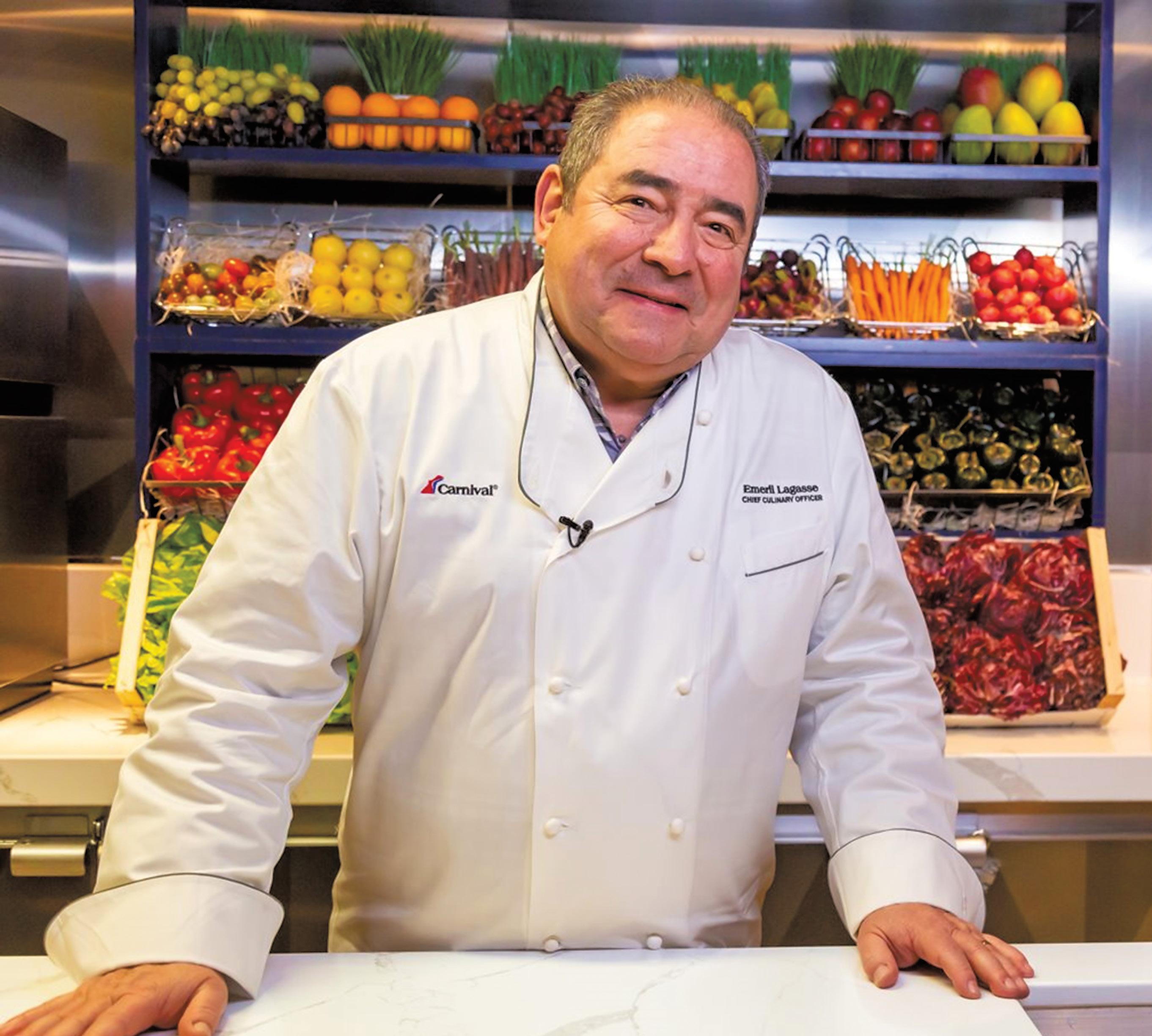

ing the success of Emeril’s Restaurant, he opened multiple establishments. NOLA, which opened in New Orleans French Quarter in 1992, and Emeril’s New Orleans Fish House at the MGM Grand Hotel in Las Vegas, which premiered in 1995, both drew crowds of fans and rave reviews. In 1998, Emeril also reopened the classic Emeril’s Delmonico in New Orleans. Two more restaurants quickly followed in 1999 — Emeril’s Orlando at Universal Studios and Delmonico Steakhouse in Las Vegas. In January 2002, Emeril’s Chop House opened its doors in Orlando. In August 2003,
Emeril’s Atlanta opened its doors, followed by Emeril’s Miami Beach in November. In addition to his restaurants is a series of books including There’s a Chef in My Family and Emeril’s Pot Luck. In 2002, Emeril established the Emeril Lagasse Foundation to support children’s educational programs that inspire and mentor young people through the culinary arts, nutrition, healthy eating and important life skills. To date, the Foundation has given millions to children’s causes in New Orleans, Las Vegas and on the Gulf Coast.
In all, Emeril is the chef/proprietor of restaurants across the country and the best-selling author of 19 cookbooks. Despite his success, Emeril remains devoted as ever to using fresh top-quality ingredients and employs cottage industry ranchers, farmers and fishermen to ensure he always gets the best. He constantly invents new recipes, much to the delight of his regular customers and the fans of his Food Network specials and shows, including Emeril Live and Essence of Emeril.
Most recently, Carnival Cruise
Line announced that Emeril will serve as its Chief Culinary Officer. A restaurant concept created by Lagasse, Emeril’s Bistro, is already popular on two of Carnival’s most innovative ships, Mardi Gras and Carnival Celebration, and now the famous chef’s culinary talents will be utilized fleetwide. In conjunction with this announcement, Carnival also announced that Carnival Jubilee will also feature an Emeril’s Bistro when it arrives next December in Galveston.
continued on page 40
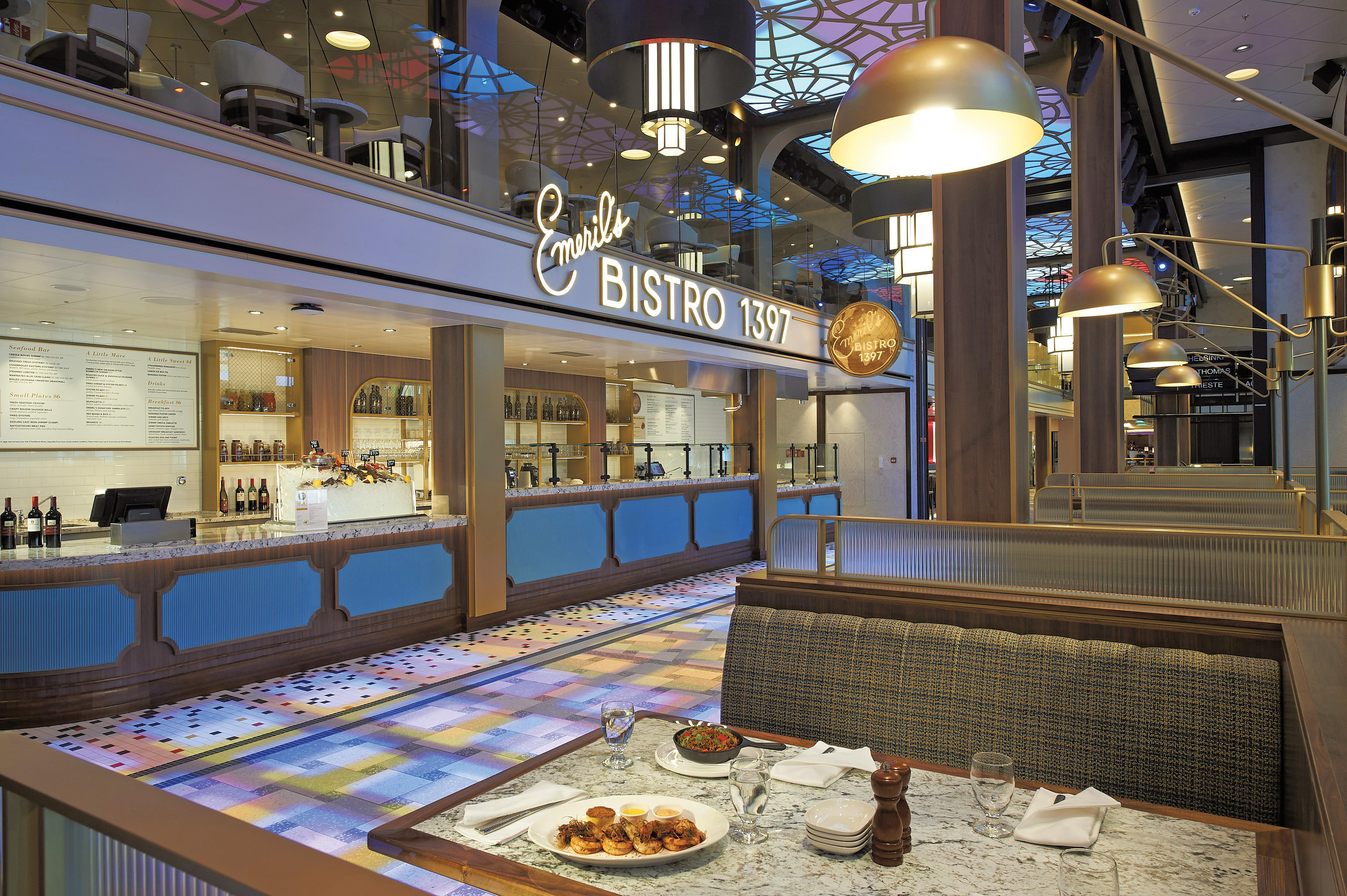

As Chief Culinary Officer, Lagasse will support Carnival’s skilled chefs with guidance on food trends and techniques as well as advise on future menu items and dining concepts. Guests will also see his input on the menus of main dining rooms fleetwide, including entrées designated as Emeril picks.

The annual Sea Trade Cruise Global Show is set for later in the month in Fort Lauderdale, FL. With that in mind, Total Food Service sought out Emeril to get his thoughts on how food and beverage is evolving on the world’s cruise ships and of course his insight into a number of fascinating topics.

Talk a little bit about what drew you to developing recipes for Carnival?








Well, I had never really anticipated working with them. I had been on a cruise ship before as a guest chef, but I never really thought about working with them on a full-time basis. So long story short, I met the president Christine Duffy, who is really an amazing, brilliant lady. And she said, ‘Listen, we’re thinking about maybe seeing if you would like to do a bistro, sort of a longer theme. Not too big, like about 80-90 seats. How would you feel about that?’ So I said, I’m a little bit hesitant because there’s a lot of unknowns especially consistency, would it be considered? She said, ‘Well, here’s the thing, why don’t you meet my team? I have an amazing team.’ So I did, and she was absolutely correct. It’s an amazing, amazing team. A lot of the culinary staff is from around the world. She sent her top team to New Orleans, and we spent a week together at Meril and Emeril’s. Tasting and cooking and then they said, ‘Okay, look, we’re going to go back to the drawing board. And we’ll be in touch.’
When they got back in touch, they said, ‘Okay, we’re ready for you to re -











ally taste things now and see what we can do.’ I went to one of their ships in Miami, and their team executed my food beautifully, it was just amazing. I got to know the team and started working with them and developing a small, fun New Orleans menu for the Emeril Bistro on Mardi Gras, the first ship. I have a second one on the ship called Celebration. The menu has been refined over time, and that’s kind of what happens in the business as you move along. You learn from experiences. But it’s been an incredible experience. They have very talented people, not just the leadership. I’ve worked in the kitchen with these guys. They’re very disciplined, focused and culinary driven. They’re very curious about what they’re doing. And it’s been a great experience since then.
When you refine a menu like that, does it require cutting the menu and/or changing items?





We started with very basic: a gumbo, po boys, boudin balls, and my barbecue shrimp. We have signature items that they are executing to the tee. During my visit a couple of months ago on Celebration to experience the new style at Emeril’s Bistro, I tasted the whole menu. Every single dish was just spot on. The chef is just really doing a great job and leading his team doing a great job. But let me tell you, simplicity goes a long way. I don’t try to overcomplicate things and I’m not trying to do crazy dishes. We’re just trying to do basic, delicious food.
One of the examples is that once we got Mardi Gras going, we realized that there was a niche for breakfast that people were wanting beignets, but we didn’t have them. I formulated a beignet formula with my pastry chefs, and we went to show them. They went back and forth with us, and all of a sudden, they nailed the
continued on page 42
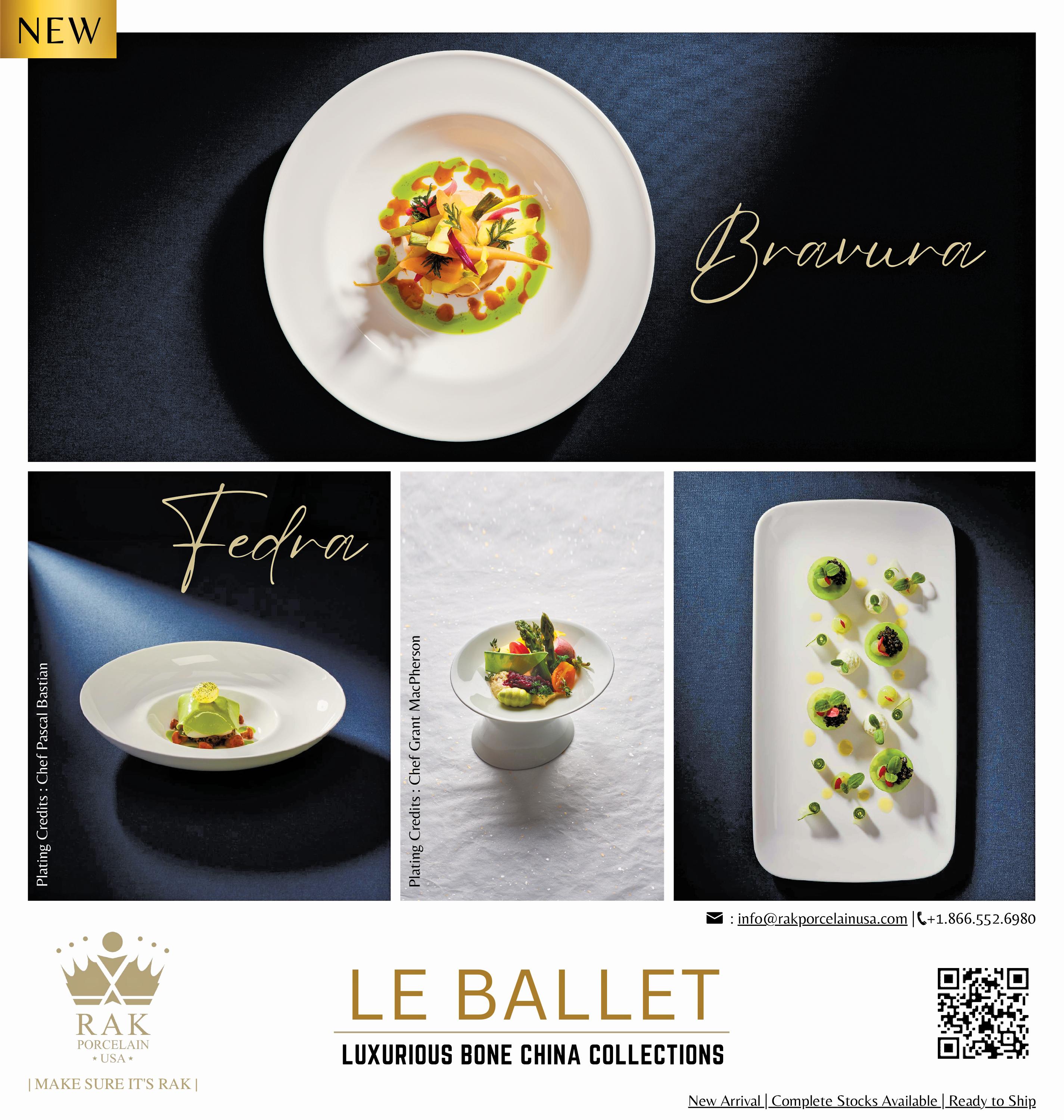
beignets exactly. Now it’s not Cafe Du Monde, I want to be Cafe Du Monde, right? But they nailed it and it’s become so popular. Now they want to put beignets on as a signature food.
When you are dealing with cruise ship dining, does it require a move to techniques like Sous Vide?
No, they’re not really doing a lot of modern techniques. They’ve been trained old school from scratch from the basics. We don’t do a lot of Sous Vide. It’s very much product driven. We’re constantly searching, because I’m a stickler for seafood. I have a small oyster bar as part of this bistro thing, with oysters,
clams, crawfish (when they’re in season). That all has to be fresh. Oysters have a great shelf life if you properly store them. And let me tell you, these guys are trained to the tee when it comes to food safety, sanitation, you could eat off the floors in those kitchens. It’s very impressive. They announced that I’m the chief culinary officer back in January, which means that I’m
just working a little closer with their top people giving them fresh ideas. Not only just with my restaurant but the ship as a whole including a steak restaurant. Okay, so what’s the menu of the steak restaurant? Well, we have this we have that we have this. Well, have you thought about this? Or can we execute this? What about sides? Maybe we should try this. This seems to be very popular
in restaurants, maybe we should try that. But then it doesn’t stop there. Because what happens is then you got to think through. Okay, how do I get from port to port with this stuff being as fresh as it possibly can be, right? And so particularly when it comes to seafood, which we have a lot of, we rely a lot on several ports to reload and get fresh fish.
Given the need to connect with traditional breadline and specialty distributors, what are the key ports to make those connections?
There’s Cape Canaveral, there’s Miami of course. There’s New Orleans and Galveston. Then there is the West Coast, LA and Long Beach. So those ports can really bring it. The other thing is that most of these cruises are four days. There are some week-long ones, but most of them are four days. If you reload one time, when it comes to fish, beef is going to hold, chicken is going to hold, all mostly everything’s going to hold, but it gets a little tricky with fresh fish. What we have found is that the fresher we can buy, and the closer that we can align delivery to when it sails the better product that we’re going to have.
Now that you’ve spent some time on a ship, what do you think of a cruise ship as a place for somebody to build a culinary career?
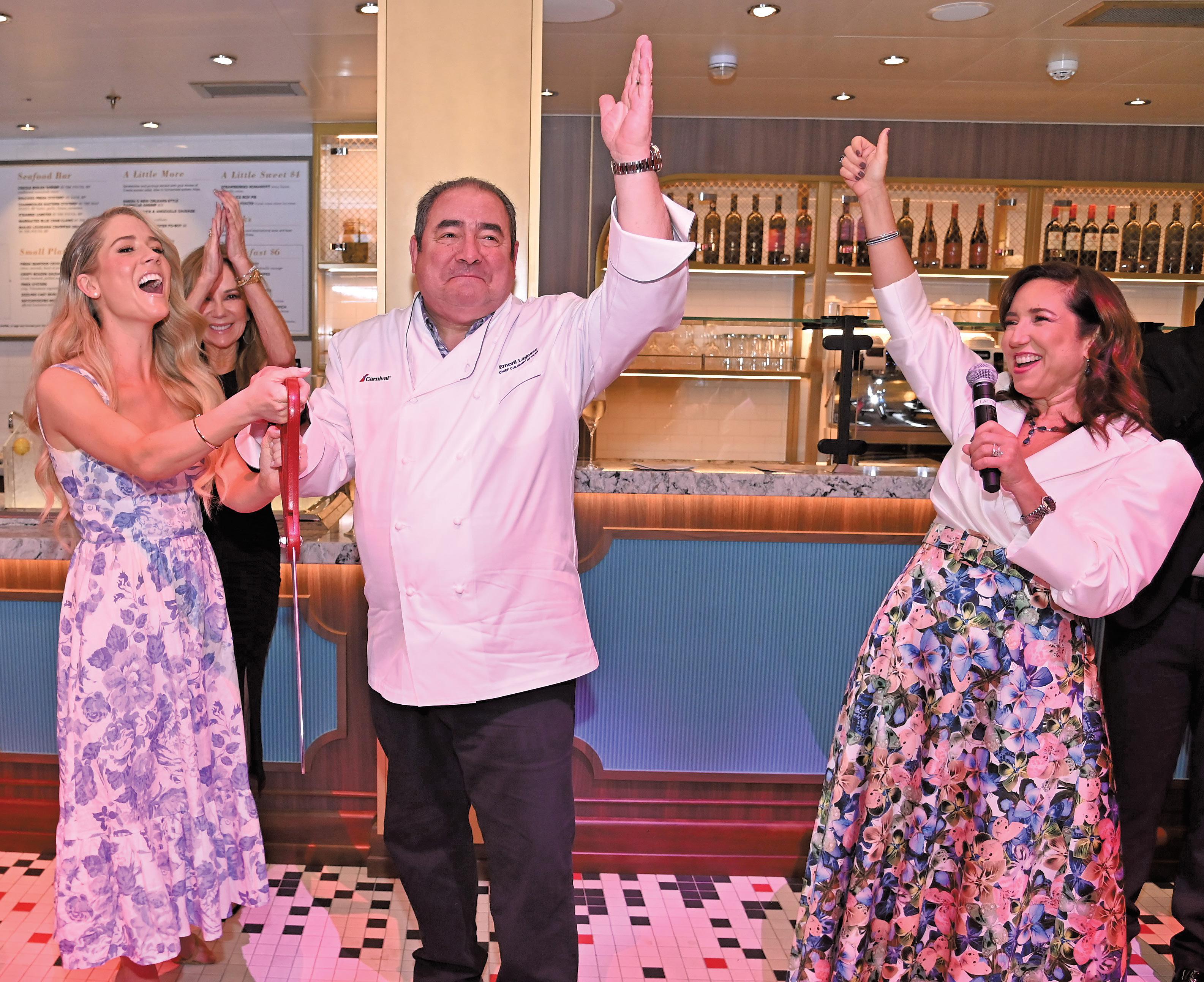
I think it’s a great environment if you are adaptable to that lifestyle. Because it’s a tough lifestyle. These guys are working three months nonstop, and very little breaks. Those people that are doing that are trained and built like that, and then they have a month off. So for me, it doesn’t fit my personal lifestyle.
continued on page 44
“Let me tell you, simplicity goes a long way. I don’t try to overcomplicate things and I’m not trying to do crazy dishes. We’re just trying to do basic, delicious food.”

But for somebody who I just met a couple of days ago, a young lady in a restaurant, that’s what she wants to do. She wants to go work on a cruise ship. And they all have different priorities. Some are financial, some are just like, hey, I got a great job and I’m not going anywhere. And I meet a lot of great people. And obviously, you got to love people. Because if you don’t love people, you’re in the wrong business, right?
Any interests from a culinary standpoint for Carnival’s guests to eat healthier from a legacy of “nine” meals a day?
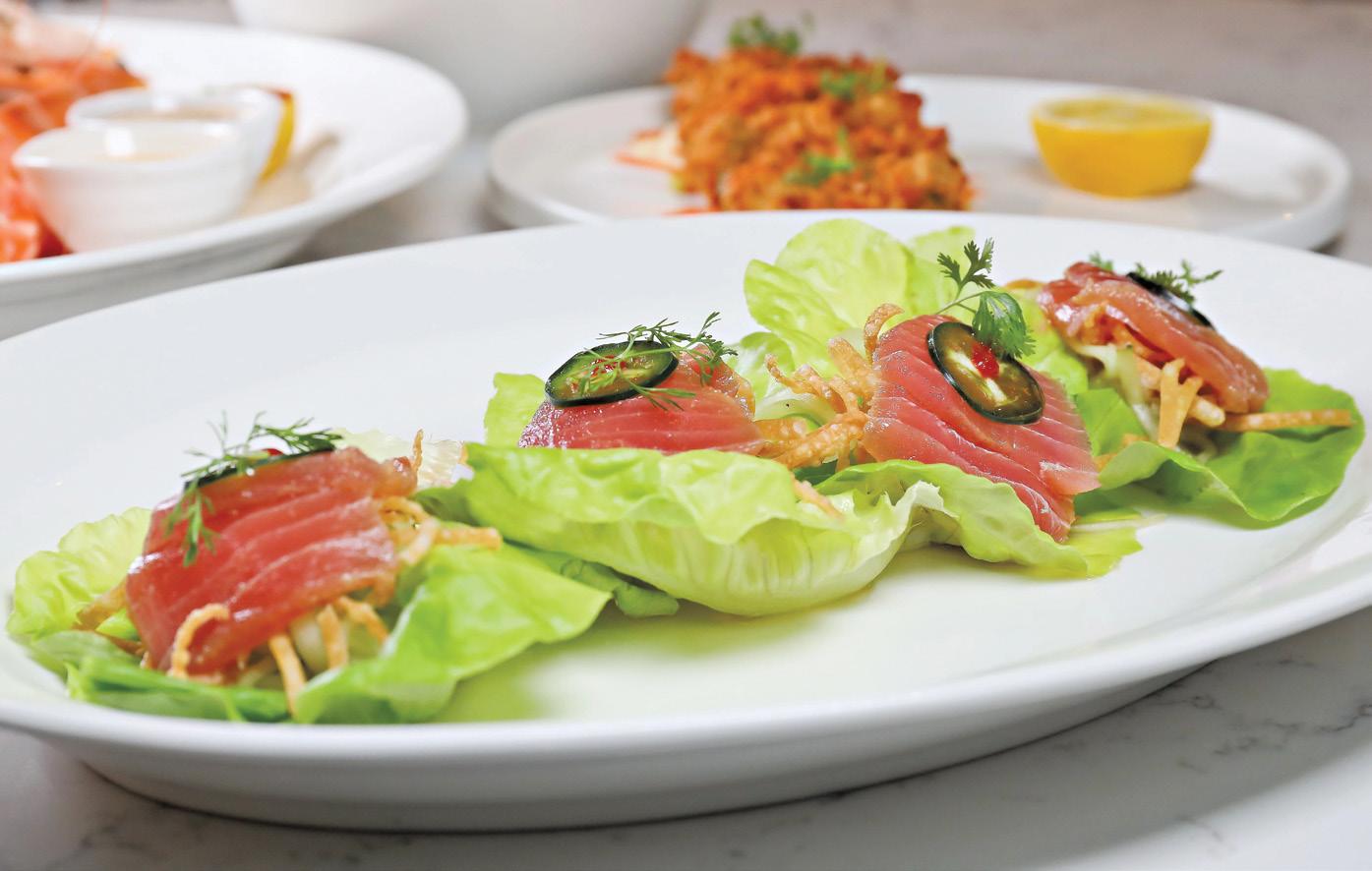

No, I think it’s kind of like you can
almost put it in the same boat as Las Vegas was 15-20 years ago. It’s all the big buffets, bring as big a plate as you can, stack as much as you can on it. That’s not happening so much these days. People are aware of their conscience about what they’re eating. They do want healthier choices. As you know, every possible allergy and whatever known to mankind, you have to deal with these days before it used to be just sodium. Now, it’s gluten, peanuts, all kinds of things. So, they have to be trained for that, and sensitive to be able to adapt to the guests, which they are.
continued on page 46



Q&A
EMERIL LAGASSE , from page 44
But the days of ‘I’m on a ship and I’m going to eat 15 meals a day’, that’s not happening anymore. There are some places that are open, not 24/7. But the Pizza, coffee and donuts places, those kinds of places are open all the time. But the main restaurants now, they pretty much have set hours. Breakfast, lunch and dinner are the set hours, you have the prior plan, there are some upgrades that you can get as a guest. Like if you want to upgrade your package and go to the fancy, I’m just using this as an example, the fancy sushi restaurant, you can upgrade and do that. But for the most part, you have choices. And this is what you what you choose and you sign up for. And that’s basically your reservation.
What’s the long-term vision for Carnival’s dining?
A third Emeril’s Bistro will be part of Carnival Jubilee when that ship
joins the fleet and begins sailing late this year. More details on that to come! But I’m continuing to work on projects for Christine (Duffy), the president. But nothing formally announced yet. Carnival has a new fleet coming on board, and they’re sort of Italian style. So obviously being Italian, you got to have the best Italian food! So we’ll see what happens.
What else is on your plate these days?
My son is slowly taking over the flagship restaurant [Emeril’s] in New Orleans as the chef patron.
He goes by EJ and he’s the fourth, I’m the third. He is the Chef patron right now at the flagship and putting together his team. We have totally changed the format of Emeril’s when we reopened after the pandemic. So we’re not doing tons of volume. The experience is much different. In the main dining room
now, which is only 14 tables. So basically, it’s tasting menu only. You have either the classic tasting menu or the seasonal tasting menu. Or you can do pre fixe, that we did as we’ve made the bar, which is now called the salon. And that filters into the private party rooms. There are no more private party rooms, so it’s the salon. And that’s where you can order a la carte. Still great experiment, great food, just different format. We’re putting together a really great team, really working hard to provide the best dining experience overall, both service, cleanliness, food etc. at the flagship.
What has your approach been toward cultivating your son’s career?
I have EJ on this new food innovation project at Johnson & Wales University that we launched in 2021. There’s another conference coming up. EJ went there, and so did I. Then when he graduated, he went to Eu -
rope and lived in London for six or eight months and worked at Core, then worked in France, Sweden and Lisbon. He’s very well trained, having spent a couple of years preparing. Yeah, he’s really good, super good. He’s doing a phenomenal job.
On the Emeril Inc side, the airways are full of your air fryers and pots and pans, what’s next?
That’s basically under an umbrella. It used to be with Martha Stewart, but then they sold the business, and it’s been resold three times now. But I’m not under contract with them. I do what I want to do. If I want to do air fryers, I’ll be involved with the whole shebang. I’m very into the design and all. I’m not just putting my name on a box.


For many chefs, adapting recipes for a dairy-free audience is a headache. Violife® helps prevent such stress. With a masterfully developed plant-based product line containing a stunningly wide breadth of dairy-free alternatives that both taste great and are effortless to cook with, Violife has quickly become a chef’s best friend.
Violife is no stranger to creating award-winning quality dairy alternatives that taste delicious. The brand, whose name is a portmanteau of the Greek ‘vios,’ meaning life, and its English equivalent, was founded in the ‘90s in Greece by the Karakas family as a solution to the Orthodox Church’s 100day fast in which Greek Orthodox Christians were forbidden from consuming dairy products. During the COVID-19 pandemic, Upfield, a
global leader in plant-based offerings, acquired the Violife brand and brought its portfolio of products to North American consumers.

In promoting its portfolio of products, Violife has focused on working side by side with professional chefs, restaurants, hotels, and other foodservice establishments. In so doing, Violife’s Chef Zack Gochin has been instrumental in educating foodservice professionals about the benefits of cooking with the brand’s portfolio of products, and leans in on his years of culinary and sales experience to steer Violife into new
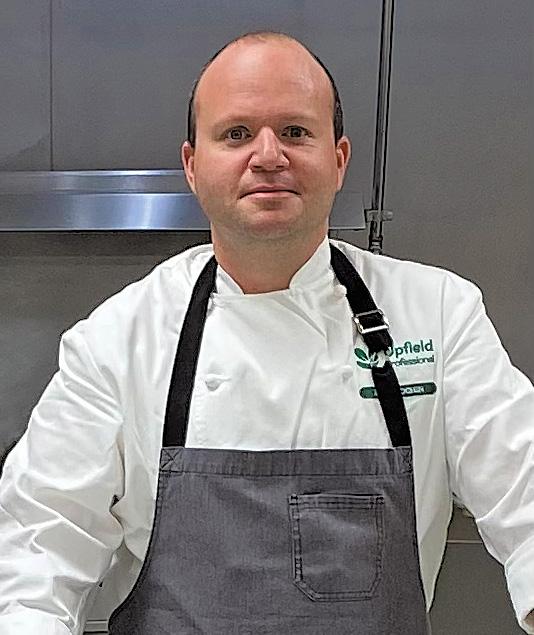
frontiers. Gochin has an extensive background as a chef, including ten years of training in Europe, opening several high-end restaurants in his hometown of Los Angeles, and experience as an R&D chef for a pasta manufacturer, and works as both a Violife sales coordinator for several states and a recipe developer. His passion for plant-based cooking is evident. Gochin says, “I can go in front of customers and cook a wide range of recipes with our line. This enables chefs to taste the products and paints a full picture.” Not only does Gochin help to demonstrate
and sell the products, he also assists in developing numerous delicious recipes that embrace Violife’s plant-based ingredients, including continued on page 126
“The Perfect Pizza cheese, for example, has a higher heat tolerance and great stretchability, which is what customers and chefs are looking for on a pizza.” — Chef Zack Gochin
April 2- 4, 2023
Boston Convention & Exhibition Center Boston, MA
Register online with Promo Code
TFSP23 for a $10 Registration ($20 off)!

(offer expires February 17th)
Anyone involved in the running of restaurants and foodservice establishments such as but not limited to:
• Restaurant Owners
• Executive Chefs
• Purchasing Managers
• F&B Directors
Find
SHOW HIGHLIGHTS:
• 300+ Exhibitors

• New Products/Services
• Keynotes
• Sampling Pavilions
• 12+ Education Sessions
• Live Culinary Demos

In partnership with:
• General Managers
• Bar Managers
• Caterers/Event Planners
• Executive Management
To register and for full details, visit www.NewEnglandFoodShow.com
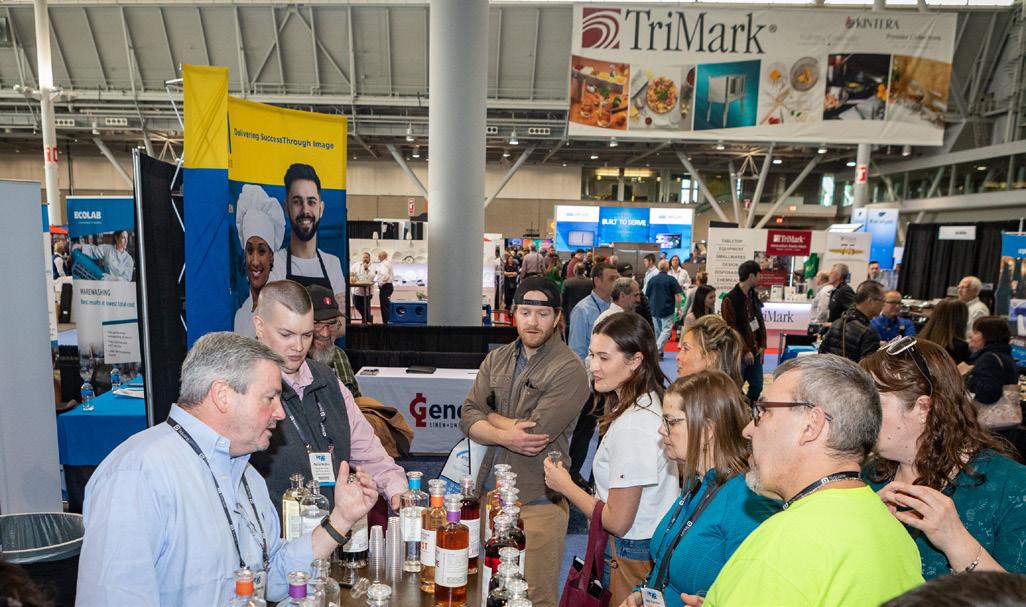
Hoffmaster Group, Inc., a leading U.S. manufacturer of premium disposable tableware, announces today the acquisition of Paterson Pacific Parchment Company (“Paterson” or “Paterson Paper”), a premier producer of foodservice paper and parchment products. Hoffmaster will assume operations for Paterson as part of its family of production facilities.

Specializing in print and converting paper products and located in Sparks, Nevada, Paterson is majority-owned by members of the Buckley family and a committed group of outside shareholders. With 100 years of expertise and under the leadership of Joe Buckley, Paterson has built a strong reputation with its knowledgeable sales force and breadth of premium foodservice and baking industry products.
Paterson’s legacy of quality products will be highly complementary to the Hoffmaster Group portfolio. Together, customers can expect the same exceptional service with an unparalleled offering of products and solutions.
“This is an important acquisition for Hoffmaster as we bring together two leaders in the premium foodservice disposables category,” said Rory Leyden, CEO of Hoffmaster Group, Inc. “We are looking forward to the opportunities that will result from the combined strengths of the two companies. Paterson’s Nevada location increases access to the West, strengthening our national footprint. This partnership enables us to continue our exceptional service with expanded capabilities to our combined customer base.”
“On behalf of the Paterson team, we look forward to joining the Hoffmaster organization,” said Joe Buckley, President of Paterson Paper. “This next chapter will be one of accelerated growth with a continued and dedicated focus on servic -
ing our customers.”
To support the acquisition, Hoffmaster has secured new financing commitments and strategic capital to refinance its capital structure. Gamut Capital Management, L.P. (“Gamut”), a New York-based middle market private equity firm, led an equity investment in Hoffmaster through affiliates of its second institutional fund, Gamut Investment Fund II, L.P. Gamut will partner with existing shareholder, Wellspring Capital Management, L.P. (“Wellspring”), to complete the acquisition and support Hoffmaster in driving further value creation for its stakeholders.
“We appreciate Gamut supporting our strategic initiatives and providing validation of the exciting growth opportunities ahead and look forward to the partnership alongside Wellspring,” adds Leyden.
To learn more about Hoffmaster, visit www.hoffmaster.com. To learn about Paterson, visit www.patersonpaper.com.
“We are looking forward to the opportunities that will result from the combined strengths of the two companies. Paterson’s Nevada location increases access to the West, strengthening our national footprint. This partnership enables us to continue our exceptional service with expanded capabilities to our combined customer base.” — Rory Leyden







PRESENTED BY:

You cannot help but be inspired by Dr. Robert Graham. A native New Yorker of LatinAmerican heritage, Dr. Graham is an integrative primary care doctor with a Masters of Public Health, and a graduate of the Natural Gourmet Institute’s Chef’s Training Program. When not seeing patients, Dr. Graham trades his lab coat for chef whites so he can practice his food-first approach to healthcare.
Dr. Graham believes that food is one of nature’s most potent medicines, and he has been prescribing dietary changes and medically tailored meals as a way to support health and prevent disease for more than 20 years. This includes teaching more than 1,000 healthcare workers, mostly doctors, how to cook whole food plant-based meals. With his healthcare and culinary experience, it’s no wonder that in the fall of 2021, New York City Mayor Eric Adams asked Dr. Graham to join his food transition team to help focus on institutional food service. This doctor/chef also volunteers his time to be a Meatless Monday culinary ambassador.
I recently caught up with Dr. Graham and asked him about his varied
roles and how he continues to advocate for “food as medicine.”
You’re a Harvard-trained physician. What made you pursue a chef’s certification?
Chefs feed people. They have an important role in the health of the people they serve. Chefs have crafted our cultural eating patterns. Given their “rock star” status, people listen to chefs when it comes to food and cooking. I became a chef to cook for people healthy nutritious delicious food

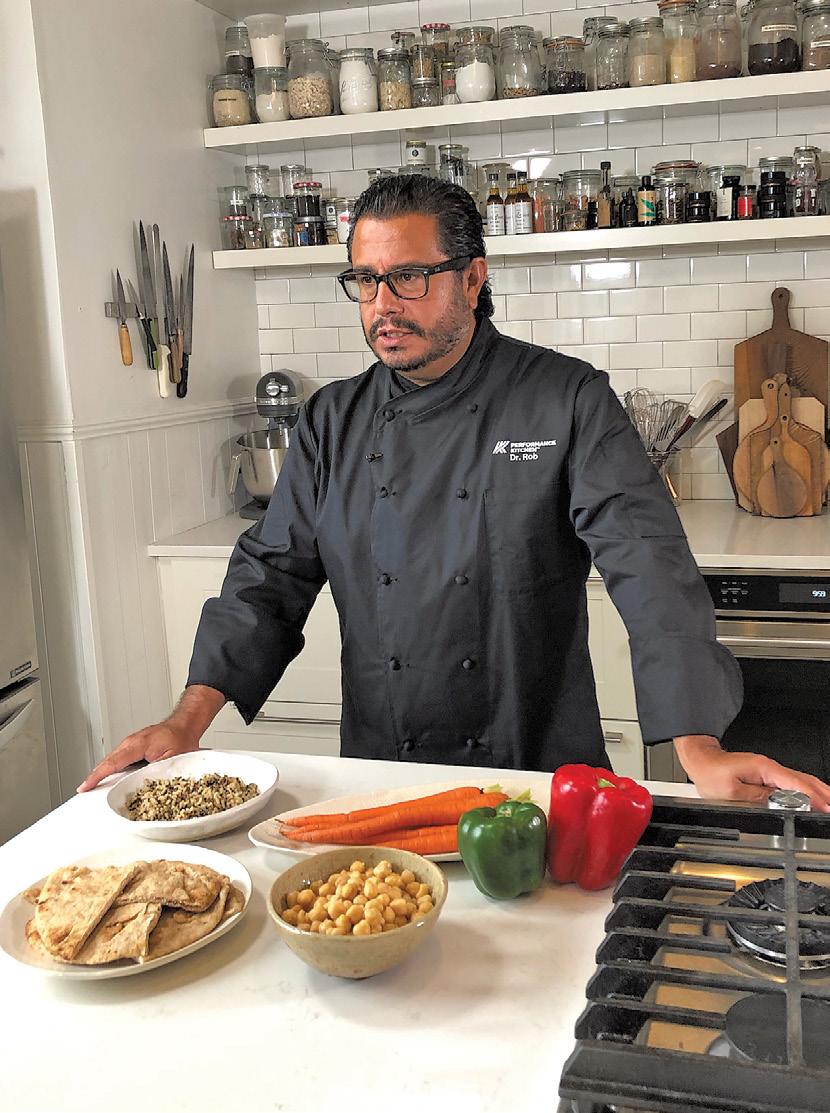
Why should restaurant and foodservice chefs pay attention to the “food as medicine” concept? How
can they effectively apply the concept in their business?

The Meatless Movement, the plant-based movement, the health movement….these have become some of the tastiest and most profitable culinary trends in the past 10 years. People vote with their forks, and they have spoken, they want healthier foods, especially plantbased foods.
Could you tell us how you’re applying your medical and culinary experience as Chief Health Officer of Performance Kitchen (PK).
My role as Chief Health Officer at PK focuses on plates, politics, and policy. Cooking is medicine, but I
Cherry Dumaual is the Partnerships Director, The Monday Campaigns / Meatless Monday. She oversees PR and partnership development for the initiatives of The Monday Campaigns (TMC), including Meatless Monday. She has forged partnerships with leading organizations, such as C-CAP (Careers for Culinary Arts Program), the American Institute of Cancer Research, and New Jersey Healthy Kids Initiative, Prior to joining TMC, Cherry served as svp for leading PR agencies and worked with major food and healthcare clients. Passionate about learning and cooking international cuisines, Cherry has traveled to more than 50 countries where she and her husband explored local food markets and restaurants. She earned her communications degree cum laude at Hunter College, CUNY.
hear from patients and clients that they simply don’t have the time, skill, or money to cook. I wanted to feed people healthy nutritious food, so I started working with PK, a medically tailored meal food company. I helped create and prescribe food as medicine, focusing on patients with chronic diseases like diabetes. Through my role at PK, I work to make sure people know that medically tailored meals are an option for many Medicare beneficiaries. A lot of people are simply unaware that medically tailored meals are included under their health plans.
continued on page 120
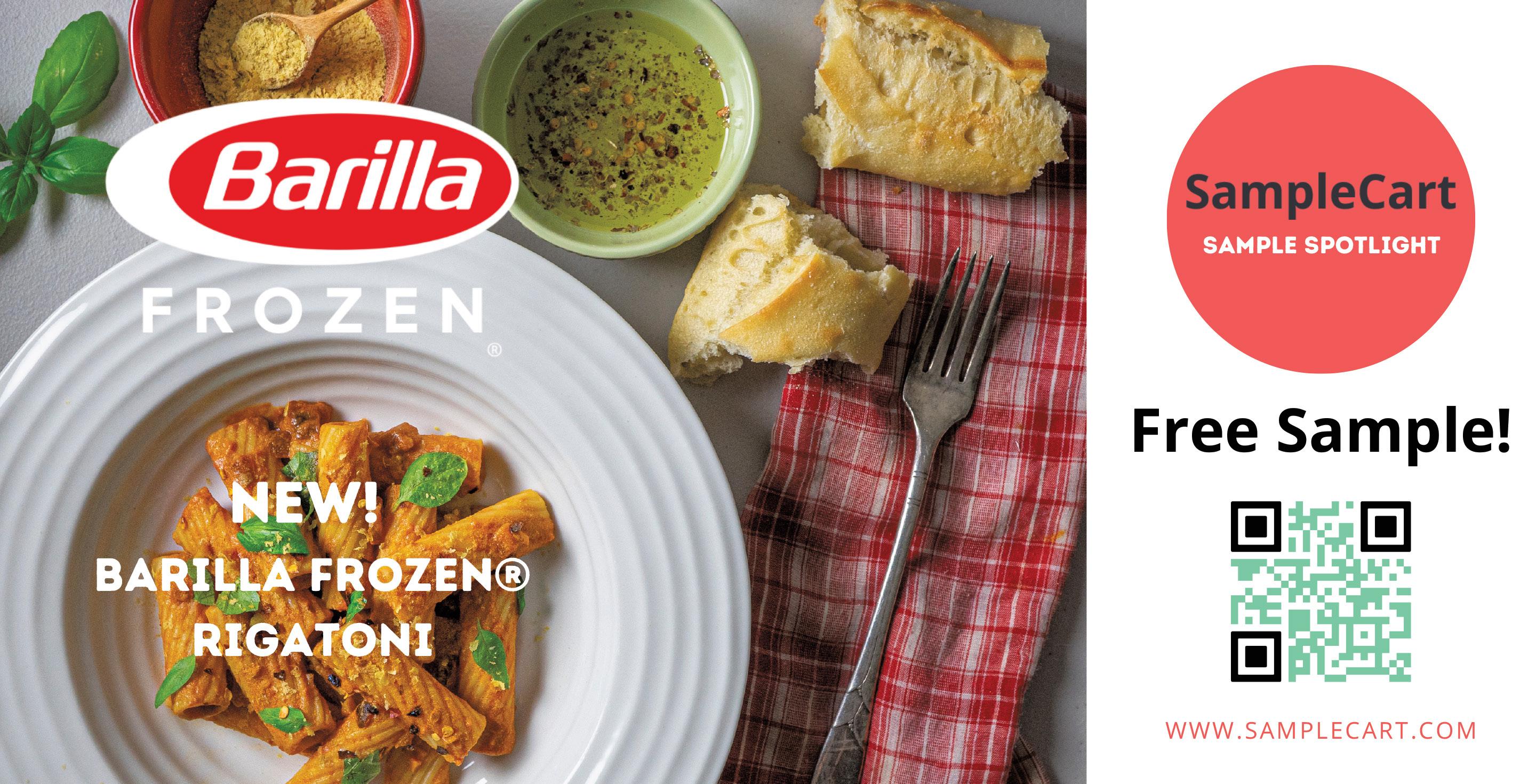

Aglobal pizza chain takes a bite out of the Big Apple with plans to open hundreds of restaurants in the New York metropolitan area over the next several years
Little Caesars, the global familyowned pizza chain with stores in each of the 50 U.S. states and across 27 countries and territories, announced this week the signing of a 10-store restaurant agreement to expand its presence in New York City. Veteran multi-brand franchisees Suhel Ahmed and Saurabh Desai signed the deal and will develop 10 Little Caesars restaurants in the Bronx and upper Manhattan by 2026. The first opening is scheduled for late 2023.
“New York City is an iconic pizza market, and we’re eager to bring more of our high-quality, great-
value products and fast, convenient ordering options to the city,” said Jeremy Vitaro, Little Caesars chief development officer. “Convenience is key in a fast-paced city like New York, and our brand’s digital-first offerings—like our Pizza Portal® pickup, the first heated, self-serve mobile order pick-up station in the quick service restaurant industry— are ideal for residents there. We’re excited to work with Suhel and Saurabh, who have extensive experience developing restaurants in New York City, to help grow our presence

in the market.”
Ahmed and Desai—both New York City natives—have more than 40 years of combined restaurant experience. They also own and operate dozens of franchise locations by other global quick service restaurant chains throughout New York City.
“We know how to own and operate a multi-unit franchise business, and we know what brands work in New York City,” said Ahmed. “We chose to franchise with Little Caesars because it has decades of experience as a global pizza chain and because of its recognized value, quality and convenience that revolutionized the pizza industry.”
In addition to its planned New York City expansion, Little Caesars is looking to grow across the Tri-State area. Little Caesars is seeking accomplished multi-unit franchisees with extensive QSR experience to help grow the brand. There are several multi-unit opportunities available with a three-store minimum agreement throughout Long Island, the Hudson Valley, New Jersey, Connecticut and the five boroughs.
Little Caesars franchising investments range from $378,700 to $1,695,500 million, with incentive programs available for
veterans and first responders. Interested prospects should visit franchise.littlecaesars.com.
Headquartered in Detroit, Michigan, Little Caesars was founded by Mike and Marian Ilitch in 1959 as a single, family-owned restaurant. Today, it is the third-largest pizza chain in the world, with stores in each of the 50 U.S. states and 27 countries and territories.
Known for its HOT-N-READY® pizza and famed Crazy Bread®, Little Caesars uses quality ingredients, like fresh, never frozen, mozzarella and Muenster cheese and sauce made from fresh-packed, vine-ripened California crushed tomatoes. The brand is known for innovation and is home of the exclusive Pizza Portal® pickup, a heated, self-service mobile order pickup station. Little Caesars is also the Official Pizza Sponsor of the National Football League.
An exceptionally high-growth company with over 60 years of experience in the $145 billion worldwide pizza industry, Little Caesars is continually looking for franchisee candidates to join the team in markets around the world. In addition to providing the opportunity for entrepreneurial independence in a franchise system, Little Caesars offers strong brand awareness with one of the most recognized and appealing characters in the country, Little Caesar.
“Convenience is key in a fast-paced city like New York, and our brand’s digital-first offerings—like our Pizza Portal® pickup, the first heated, self-serve mobile order pick-up station in the quick service restaurant industry—are ideal for residents there.” — Jeremy VitaroLittle Caesars’ Pizza Portal


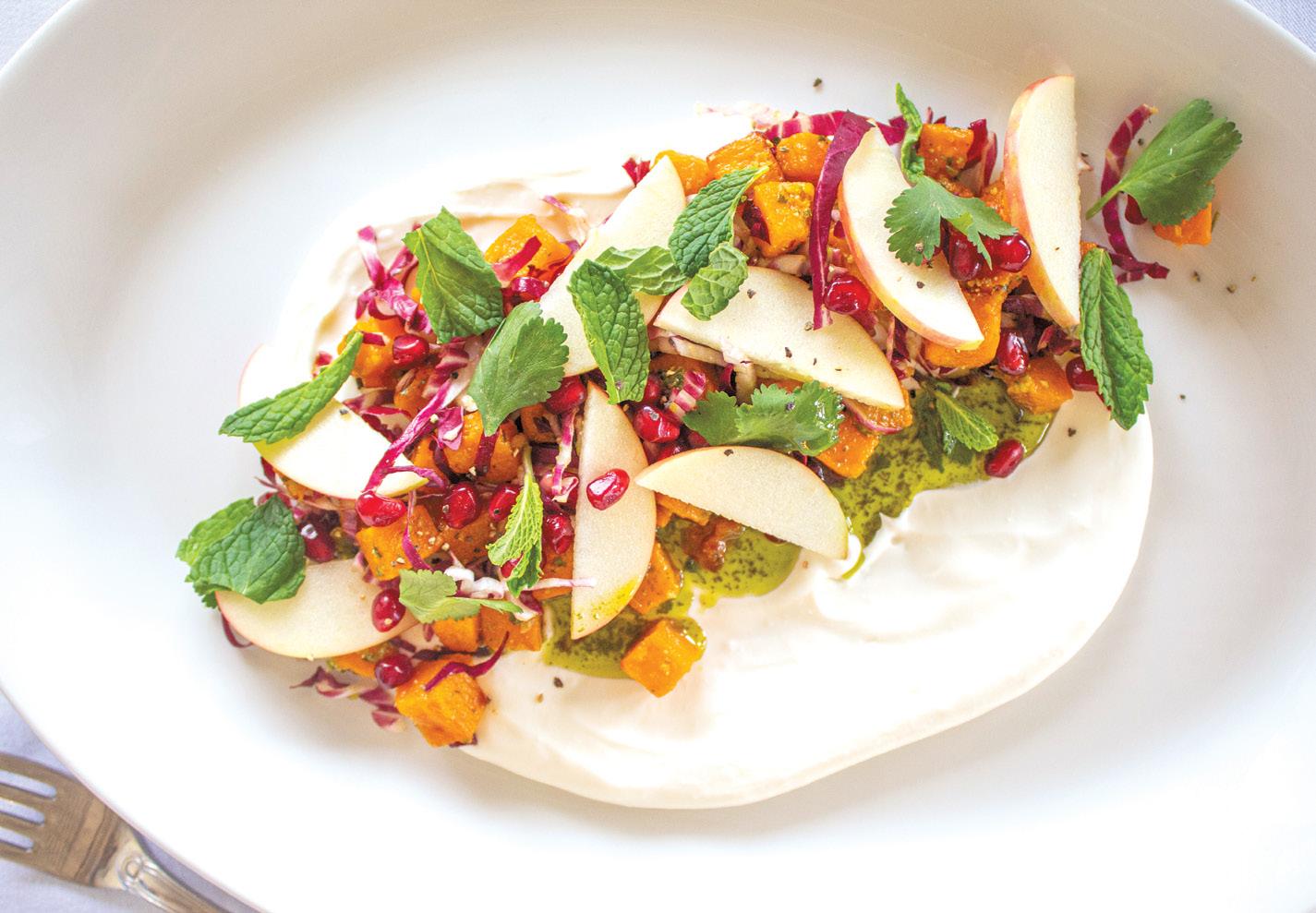
Ihave been a professional food photographer for over 20 years and have had the pleasure to photograph the cuisine of Eric Ripert, Thomas Keller, Charlie Trotter, Joel Robuchon, Jean-Georges Vongerichten, Anthony Bourdain, Alain Ducasse, Lidia Bastianich and many more world-class restaurant chefs. Most of them are now hugely successful entrepreneurs and celebrities. This elite group has always understood the importance of excellent food photography. Why spend all your time creating gorgeous recipes for your menu only to ruin them with less-than-flattering food photographs?
I remember when the first iPhone was released, and the cell phone photography was so unflattering
that some restaurants banned their use! Of course, that has changed now, and thankfully cell phone photographers are getting much better than in the early days. Still, ugly food shots convey the wrong image of your food and are a turn-off to many potential diners.

When I entered the private golf industry, I quickly realized there was a great need for high-quality food photography, whether the golf club, country club, or resort served hamburgers or haute cuisine. Why spend thousands on golf course photography, clubhouse, interiors, and exteriors and skip the kitchen? Food is not and should never be an afterthought.
The website is the first place I visit when I look for a club to feature in

my books or Golf Kitchen Magazine. I can tell if the club values the culinary side as they will highlight and compliment their chef, culinary team, and services, often displaying the menus and excellent food imagery. However, the website is one of many places a club needs highquality food photography; there are many places. Food photography draws attention everywhere, from social media, newsletters, advertising, magazine and news stories, club banners, posters, and more.
Food photography is an art form and challenging to learn; more often, it is an inborn skill. The golf course photographer is likely not a skilled food photographer, and vice versa. I have never been hired to shoot a golf course; while I could
is the President of Golf Kitchen Magazine. She has traveled to 48 countries searching for the finest culinary teams in the Private Golf and Country Club Industry. The Golf Kitchen portfolio includes a 568-page coffee table book, a bi-annual magazine, the Golf Kitchen Culinary Excellence Awards and Invitational at GlenArbor Golf Club, and the new Certification of Culinary Excellence. She resides in Stamford, Connecticut.

take good enough landscapes, I am not a golf course photographer as I do not know the game or what golfers are looking for in a great golf
continued on page 112


Every year, QuickChek announces their Vendor Partner of the Year Award: an opportunity to honor vendors who go above and beyond in their duties. With a large network of quality vendors, choosing just one award recipient might seem daunting – but Jordan Singer, owner of Automatic Ice, made this year’s selection process an easy one.
The New Jersey based convenience store chain, QuickChek works with a variety of vendors that supply ice machines, refrigeration, and other essential equipment for made-to-order fare. Singer has worked with QuickChek since 2004, when the company inquired about Automatic Ice’s equipment. Singer’s family-owned company offers an impressive selection of new ice equipment, various refrigeration products as well as commercial cooking equipment.
But when QuickChek first called, “it was all about ice,” Singer said: “QuickChek expressed interest in selling ice by the bag, which they always were doing – but they got upset with one of their suppliers, who couldn’t keep them supplied in the heat of summer. So they called us and asked about getting their own ice machine in one of their stores.”
That initial request graduated into supplying ice machines and bagging bins to fill up 8- and 10-pound bags.
After Singer’s team fulfilled this request, QuickChek asked them to install large,1300-pound ice machines in their stores’ back rooms. Later, Automatic Ice installed ice machines at QuickChek’s “bev-serve counters,” followed by equipment for their iced coffee program. Today, Automatic Ice also provides QuickChek’s blenders, microwaves, and sandwich-prep
tables, as well as electric convention ovens for their baked goods.
All these graduations required a “pretty significant investment in both inventory money and space,” said Singer. But whatever the challenge, he’s always prepared to meet the demand. For a one-stop shop like QuickChek, Automatic Ice is a one-stop vendor – and when problems arise, Singer and his team show up to solve them.
“QuickChek shows brutal loyalty to the suppliers that have been brutally loyal to them,” said Singer; and Rick Wisler, Director of Engineering at QuickChek, confirmed that the loyalty goes both ways. Throughout their partnership, Singer has consistently gone “above and beyond,” said Wisler.
“He supports QuickChek charity
events, smooths out vendor relations, and never says no.”
But most recently, Singer “seriously stepped up” during QuickChek’s supply chain issues, reflected Wisler.
“We were having a hard getting refrigeration products, but Jordan found other products that we don’t normally buy from him. He secured them for us at a good price and on time, which was huge. We were going to miss openings because the companies we’d normally buy from couldn’t supply their products in time.” During this time, Singer even took deliveries from other companies and held them in his warehouse.
With Singer on their side, “something that would have been a complete pain was suddenly not that big of
a deal,” said Wisler. This ability is one of Singer’s greatest strengths, and it defines his relationships with vendors. With a fiery spirit and total customer dedication, “he just never says no,” affirmed Wisler. “He’ll just look forward, climb over the hills, and around whatever else to get things done. We had a problem with a blender manufacturer that had changed a design and Jordan stepped in to fight and win that battle for us.”
Singer is equally grateful for the relationship with QuickChek, and he’s proud to have maintained their connection for 19 years. “This is an account we get to brag about,” Singer said – but for good reason. Automatic Ice is committed to consistent, quality service, backed by real people who understand companies’ equipment needs.
For companies like QuickChek, bottom-line solutions aren’t always the winners. Instead, when QuickChek selects their partners, “it’s all about what the vendor can do for them,” said Singer. And with Singer leading the company, Automatic Ice does plenty.
Over the years, QuickChek’s fresh food and beverage business has become more sophisticated. In turn, Automatic Ice has expanded its product offerings and logistical planning for the company: always with a focus on real people, fair prices, and authentic customer service.
Singer describes his company as an “old-fashioned dinosaur” of a business – but that doesn’t preclude Automatic Ice from the honor of Vendor of the Year. If anything, Singer’s retro approach and customer-driven philosophy are the criteria for this year’s award. After years of steady partnership with QuickChek, “it’s nice for someone to recognize that dinosaurs can still exist on the earth.”
“We were having a hard getting refrigeration products, but Jordan found other products that we don’t normally buy from him.” — Rick Wisler(L to R) Automatic Ice Maker Co’s Philip Singer and Hamilton Pereira with QuickChek’s Rick Wisler, and Jordan Singer of Automatic Ice Maker Co.


As an employer, providing an effective training program is one of the most important investments you can make. The benefits include improved customer service, better product quality, more efficient processes, a safer work environment, engaged employees, and higher profits.

Training has become more important than ever as restaurant and foodservice operators battle to retain and develop the essential team members that share our passion and commitment to the industry and most importantly to our customers.
The first step is to recognize that in a restaurant there are several categories of employees, and each deserves their own training program. For example, bartenders need responsible alcohol service training, a dishwasher needs instruction on the proper process for warewashing and the safe handling of chemicals. Servers need training on how to describe menu items and even how to deal with difficult customers.
Universal topics include the restaurant’s brand, core values, and culture including what is expected of each person. Another important common core element is workplace safety.
Start with onboarding and training that ensures each employee has the knowledge and skillset necessary to perform their jobs. This includes, but is not limited to, an understanding the restaurant’s food preparation, service, safety standards, and cleaning processes.
All team members need to understand how to prevent the spread of germs and bacteria and maintain the highest standards of hygiene. Cleanliness and food safety protocols need to be part of a restaurant’s culture. One outbreak of a foodborne illness or a health code violation can have serious repercussions.

Once you have your training content developed, the next component is determining how the material is going to be delivered. Digital is the best option. It plays to the strength of today’s tech savvy work force and their preference for consuming content in small bites on a screen. Segments of 10 minutes or less is ideal.
continued on page 108



Chicago-based Caputo® Cheese earned top honors at the biennial U.S. Championship Cheese Contest®. The most recent awards continue the company’s heritage of award-winning fresh mozzarella cheeses.
Caputo’s Fresh Mozzarella Mini Nodini earned 1st Place in the category. The company’s Burratini placed second within the Burrata category and Caputo’s Burrata was among the top finishers within the category overall. “The recognition as either Best of Class or as one of the top finishers in this year’s competition is a great honor,” says Na -
tale Caputo, a second-generation leader of the cheese company. “Our commitment to quality cheeses is apparent in awards we’ve earned since entering U.S. and world cheese competitions over the past five years.”
Since 2018, Caputo Cheese has earned 17 awards in various national and international competitions.
“Our most recent wins at the U.S. Championship Cheese Contest proves that our commitment grows stronger each year,” says Natale. “I want to thank everyone in our industry for their commitment and to the Wisconsin Cheese Makers Association in particular. We look
“The recognition as either Best of Class or as one of the top finishers in this year’s competition is a great honor,” said Natale Caputo, a second-generation leader of the cheese company. “Our commitment to quality cheeses is apparent in awards we’ve earned since entering U.S. and world cheese competitions over the past five years.”
forward to more award-winning entries by our company in 2024.”
Brett Piccioni is General Manager at Caputo Cheese. “Fresh mozzarella and hard Italian cheese are
our passion,” says Brett. “Our entire development and production team is dedicated to finding perfection in the quality of our cheese and in providing our customers with the best service in the business of cheese.”
Caputo Cheese serves the foodservice, food processing, and retail industry with a variety of cheeses from bulk, to portion control packaging formats.
The U.S. Championship Cheese Contest is the nation’s premier technical cheese, butter, and yogurt competition. This year, entries came from 35 states with a total of 2,249 entries. The contest is hosted by the Wisconsin Cheese Makers Association biennially since 1981. Entries are evaluated by a team of skilled technical judges from across the nation.
Since 1978, the Caputo family has crafted some of the world’s finest cheese. Their award-winning products possess the quality, flavor, and consistency that only high standards and family pride can produce. Learn more about Caputo Cheese award-winning quality at CaputoCheese.com.

From autocorrect to facial recognition, artificial intelligence is rapidly growing — touching multiple aspects of individuals’ lives. However, not all are eager to utilize this emerging technology. According to a 2022 study, less than 7% of businesses have adopted AI technology. Whether it’s fear of the unknown, hesitancy to buy into a trend too quickly or concern about how deploying new technology could impact the company; clearly business leaders should consider all aspects of AI before rejecting or accepting an AI-based solution.
AI-driven field service management solutions for food and hospitality appliance maintenance are evolving alongside technology, enhancing processes for the field service industry and, in turn, elevating customer experiences. For field service managers looking to level up processes and customer experiences, these are just a few examples of how an AI can help improve the field service fulfillment process:
One of the biggest draws of AI is its ability to decrease the opportunities for human error to be introduced. In field service management, this can look like predictive and proactive maintenance. By tracking service parameters with IoT triggers, a field service technician can be notified and proactively informed about the neces-
sary repairs or maintenance, reducing the pressure on restaurant and food service managers to describe what indicators flag maintenance. Additionally, AI can scan for redundancies — ensuring that the technician has a clear picture of the job and can make the repair efficiently.
AI scheduling allows field service managers to leverage data to make the best decisions for allocating technicians based on availability, skill set, supply inventory and how long it takes the technician to arrive at the job site. By ensuring the technician is the best possible fit for the job and arrives at the food service site with everything they need, jobs are smoother and faster.
Scheduling changes for appliance repairs are annoying for both technicians and food service managers — costing valuable time and resources
to communicate and coordinate rescheduled appointments. AI scheduling tools remove this headache by simply running a technician search through the algorithm to find the next best technician with the resources to complete the job. With a customer portal, the food service manager will receive real-time updates, with visibility into who their new technician is and when they will arrive.
Food service managers want maximum visibility into when repairs or maintenance will occur. With an intelligent and secure technology solution, technicians can access information about service jobs from anywhere, on any device. With the ability to answer questions from food service managers on the go or provide updates about what to expect upon arrival, progress toward a repair can start before the technician even arrives.
Most importantly, food service managers can provide images of broken appliances for field service managers to review when assigning technicians. With a clear photo of the repair, the technician is empowered to speak directly with the food service manager to resolve the issue without depending on administrative assistance to coordinate communication.
In addition to saving communication time by removing the need for multiple phone calls between administrative assistants and technicians, AI powers route optimization tools for technicians. Instead of wasting time comparing routes, AI uses traffic and weather data to identify the most time-effective way for technicians to arrive at their job site.
Additionally, AI helps technicians keep track of inventory in their vehicles and ensures that the technician assigned to the job has what they need to complete the repair in one visit. By removing the need for multiple visits, both food service managers and field service technicians benefit, reducing costs and saving time for both parties.
Across the board, AI undeniably holds the potential to simplify the appliance repairs process for food service managers — saving valuable time and money. When considering what appliances warranties to purchase or which company to service broken machinery, identifying a maintenance provider that invests in AI technology can pay dividends.


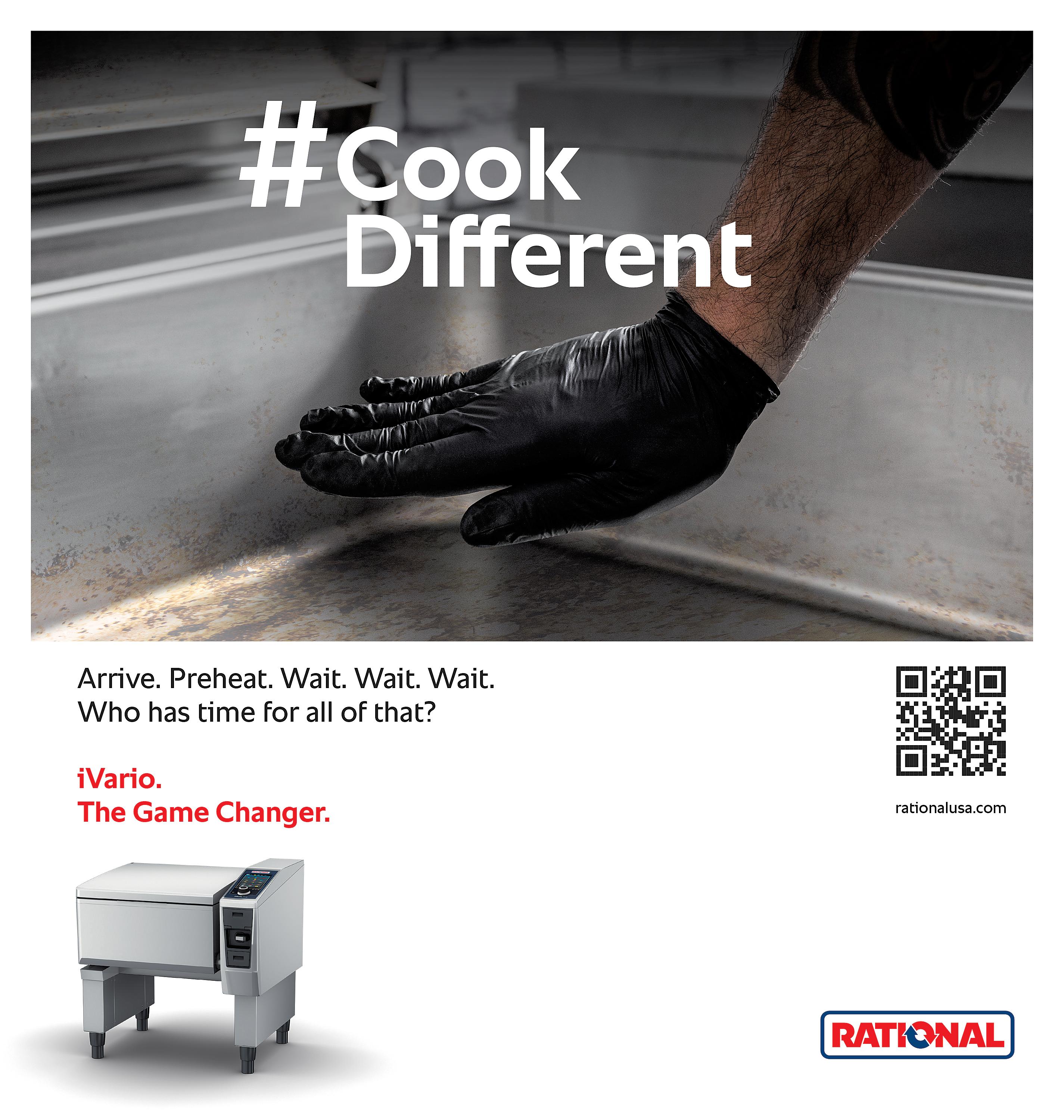


Combine a collective sigh of relief to finally be back together again as an industry and the realization that the nation’s commercial kitchens are on the verge of generational change, and you have what was the recipe for the bi-annual NAFEM (North American Food Equipment Manufacturers) Show 23.
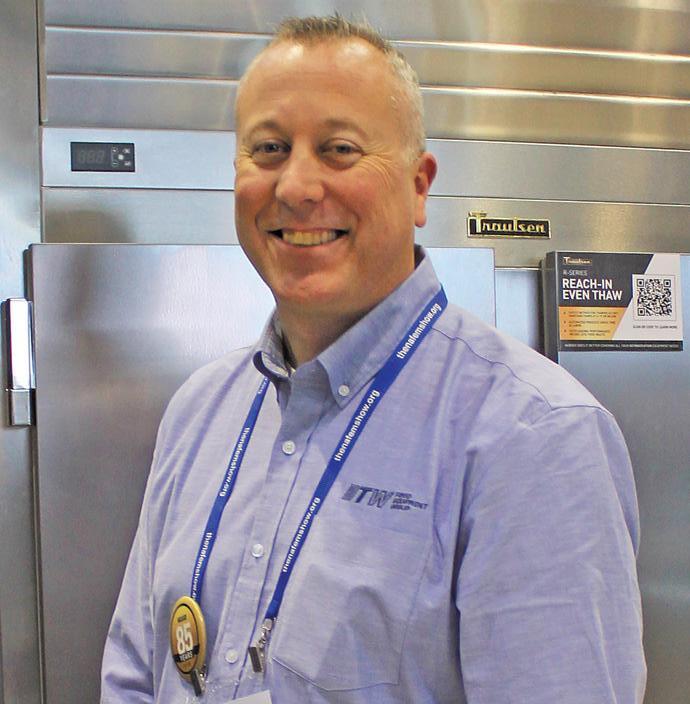



With the backdrop of the Orange County Convention Center in Orlando, FL, thousands of foodservice professionals gathered to see the latest in front of the house and back of the house equipment, supplies, tabletop, and more.

It was ironic that the group One Fair Wage and Restaurant Opportunities Center (ROC) United hosted a press conference in the very same week as the NAFEM Show. The event featured 10 Congress people who support aggressive increases in minimum wages for Fast Food workers. After spending the week touring the NAFEM show floor and seeing the introduction of robotics to take the place or supplement the current labor force, one can’t help but wonder where we are headed. Whether it’s $17 an hour vs. $30 an hour, or what threshold that robotics could replace or force a reconfiguration of the back of the house workforce.
Very interesting to see the impact of significant consolidation on the show floor. The Selim Bassoul era at Middleby was marked by the rollup of literally hundreds on independent brands. Kudos to Tim Fitzgerald and Darcy Bretz who created Middleby’s innovation alley at NAFEM to simplify the process of vetting the company’s latest. Ali Group
continued on page 68
BRINGING
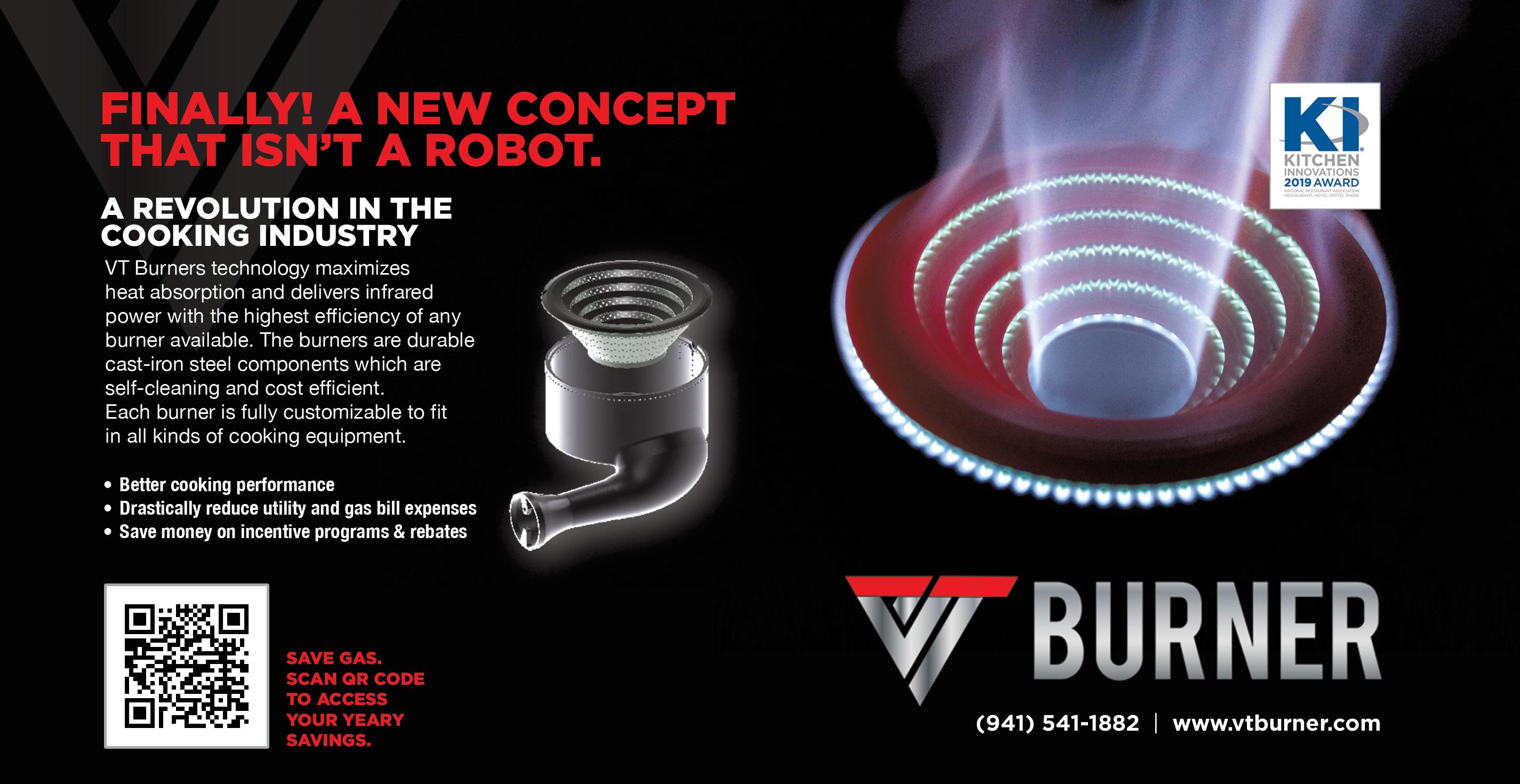

















































































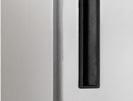






















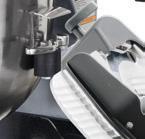





















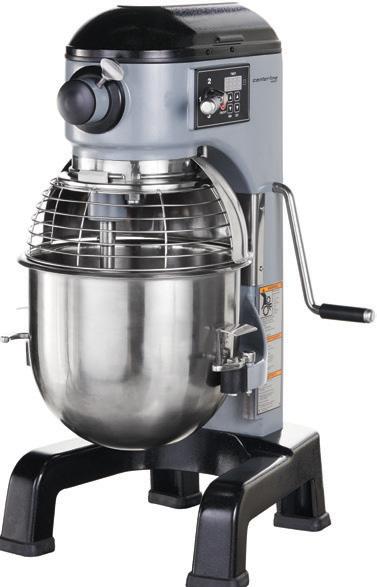



















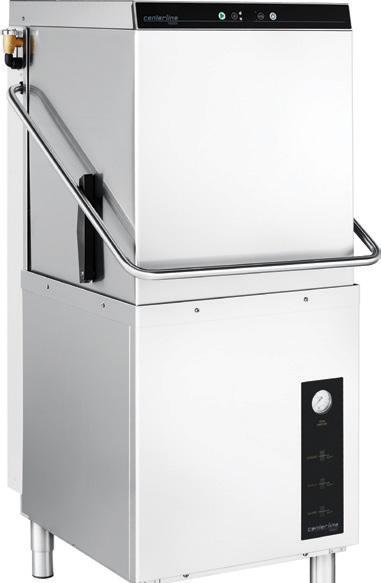




























































from page 66
also brought their diverse portfolio of E&S solutions to the show floor.
The event wasn’t without turmoil as major rep group affiliations took centerstage across the country. The fireworks on the E&S rep front continued as manufacturers look for a single umbrella in each of the nation’s largest markets to represent their portfolios. With that has come a move towards putting pressure on rep firms to move into distribution of product.
The Equipment and Supply industry descended on Orlando following a year of supply chain challenges. “Supply chain issues haven’t necessarily gone away, they are just different,” noted NAFEM’s Deirdre Flynn. “One issue gets resolved and another pops up. It’s easier to say instead of resetting as an industry, we’re continually flexing to meet needs. The good thing that’s come out of this is communication – all partners – from manufacturing through to the operator, communication is improving as everyone is working together to keep the industry open.”
Many in the industry may question the need to attend the NAFEM show, given the amount of consolidation over the past decade. The Selim Bassoul tenure at Middleby led to the rollup of a number of brands. Most recently, the Ali Group added Welbilt to its portfolio. “We have 515 companies participating in the show in 2023, compared to 613 in 2019, so that consolidation hasn’t really affected the show dramatically,” Flynn added. “Once again, all of the companies and brands that the attendees were looking for had a presence here on The NAFEM Show floor.”


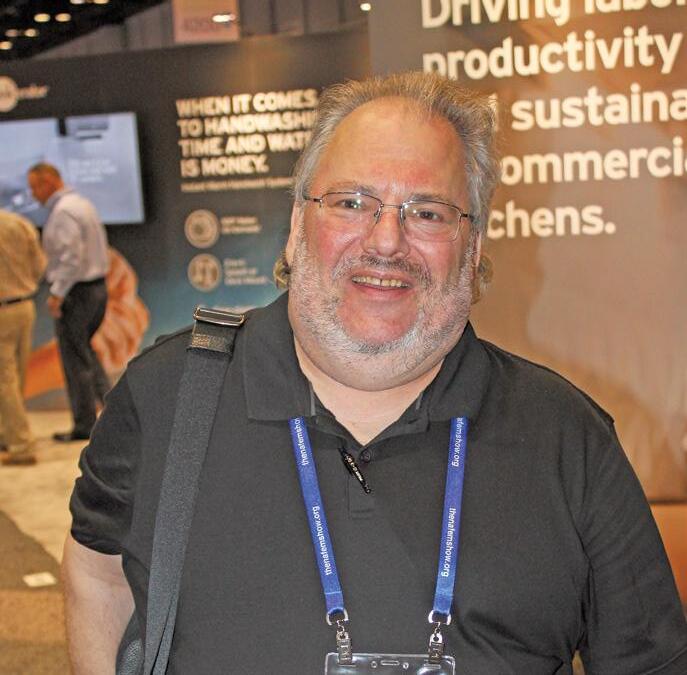


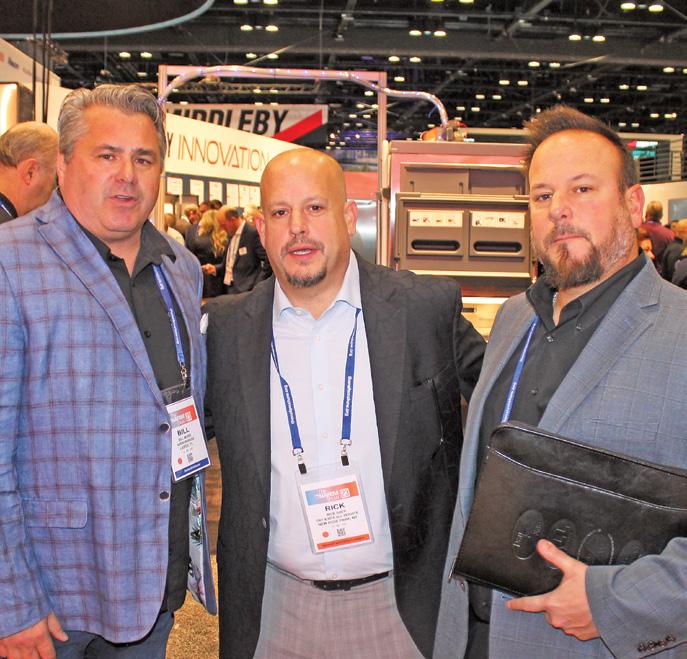

The NAFEM Show under Flynn has always done a brilliant job on staying focused on changes that the E&S marketplace need to respond to. The last three years have seen enormous growth in Takeout & Delivery. “Our guests saw lots of new products – all born out of the cir-



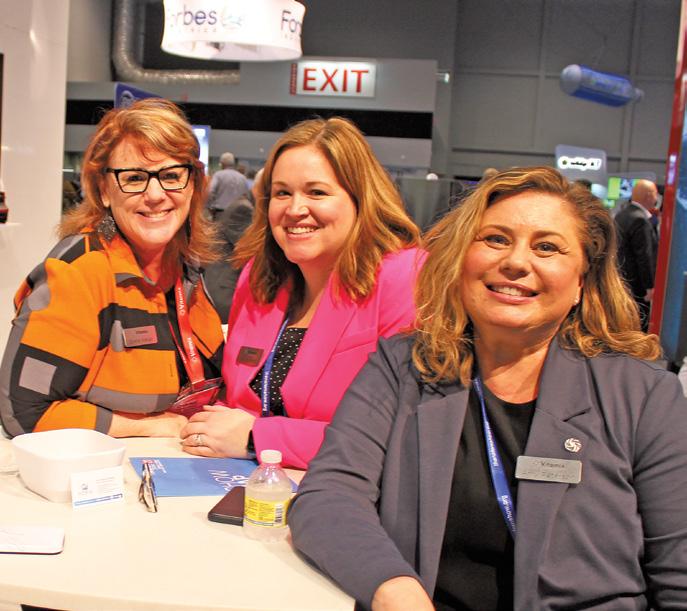
continued on page 70
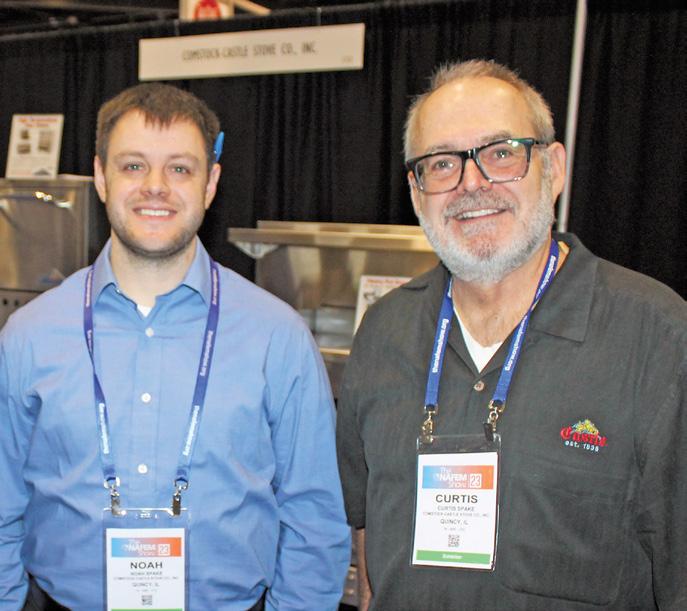





from page 68
cumstances presented by the pandemic – which is exciting,” Flynn said. “While restaurants are back and we all are enjoying the opportunity to dine out again, takeout and delivery is here to stay!”
TFS has always enjoyed the opportunity that NAFEM brings to visit with a vast array of foodservice professionals from both the “buy” and “sell” sides. Top dealer/distributors as well as kitchen and restaurant management consultants shopped the show. Among the well represented categories of attendees were colleges & universities and healthcare foodservice professionals.
Exhibitors at The NAFEM Show had the opportunity to get in front of and connect with the industry including dealers, distributors, operators and consultants. NAFEM also provided exhibitors with a variety of tools, resources and webinars to


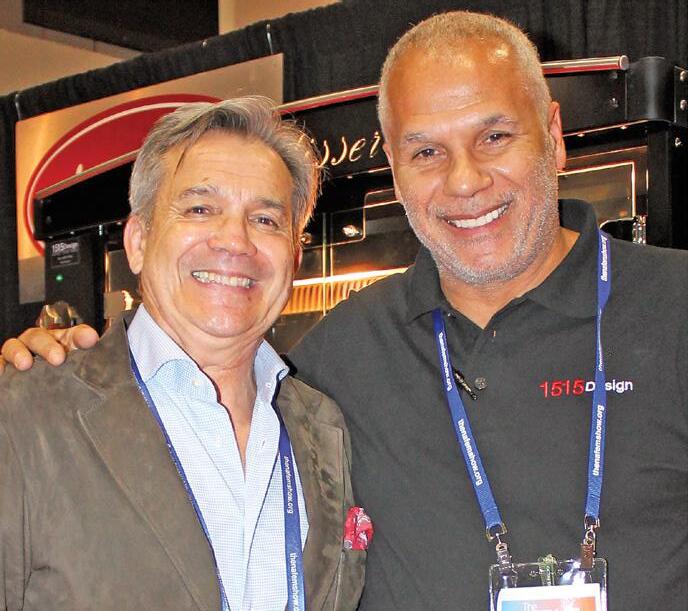

continued on page 72






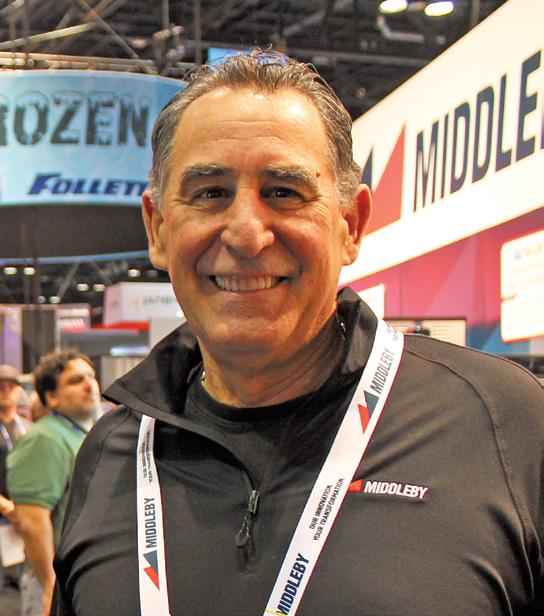


from page 70
help them make the most of The NAFEM Show. “It was rewarding just being able to see people again,” noted David Stafford, president and CEO, Stafford-Smith Inc. “The pandemic lockdowns kept us away from each other for some time. At NAFEM, I met with customers, and walked the show floor with a goal of finding out how to do things better.”



Flynn and her NAFEM team have also crafted a comprehensive educational program. An operator-focused breakout session saw Dustin Cutler, executive director of Dining at Cornell University; Phil Del Guidice, Oak View Group’s vice president of operational excellence; and Eric Eisenberg, director of dining Services at Rogue Valley Manor; debate ‘Labor, Trends and Tech’, moderated expertly by Joe Carbonara of Foodservice Equipment & Supplies. “Our goal is to be a positive disruption in the business,” said Del Guidice, neatly summing up the overall sentiment.
The show once again had a busy social calendar. Nobody knows how to build full scale bases better than Ali Group’s Ryan Blackman who orchestrated the company’s meet and greet at the Hyatt. Middleby feted their team and guests at The Hampton Social. NAFEM’S concert featured country superstar, Brad Paisley.
Among the major trends, in what we are calling the Ramp-to-Robotics is the growth of automation. NAFEM ‘23 brought insight on how automation can solve today’s foodservice challenges. From addressing labor shortages to standardizing convenience, quality and safety, automation technology is constantly evolving and improving. The show floor featured a bevy of touchless kiosks and online ordering platforms.
Much of the automation at NAFEM ‘23 focused on automated equipment with a goal of driving consistent quality. There were a number of commercial griddles on display that include advanced ther-
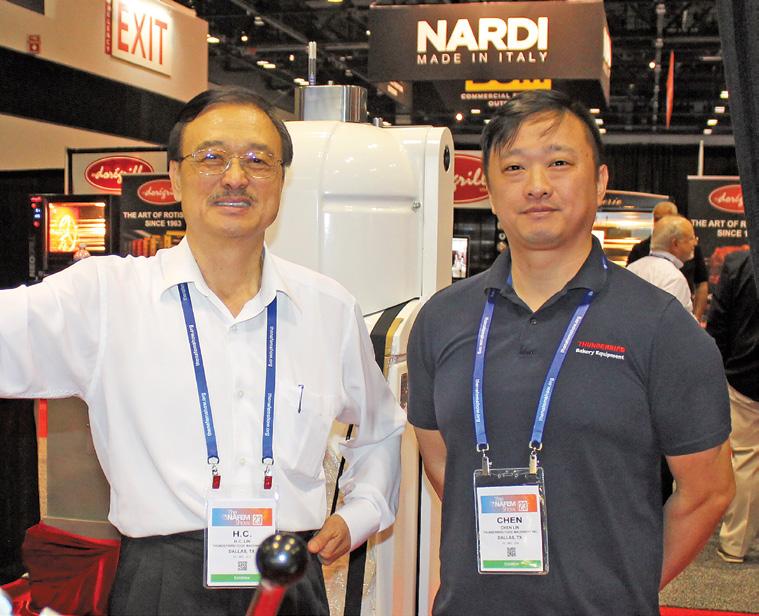
continued on page 114



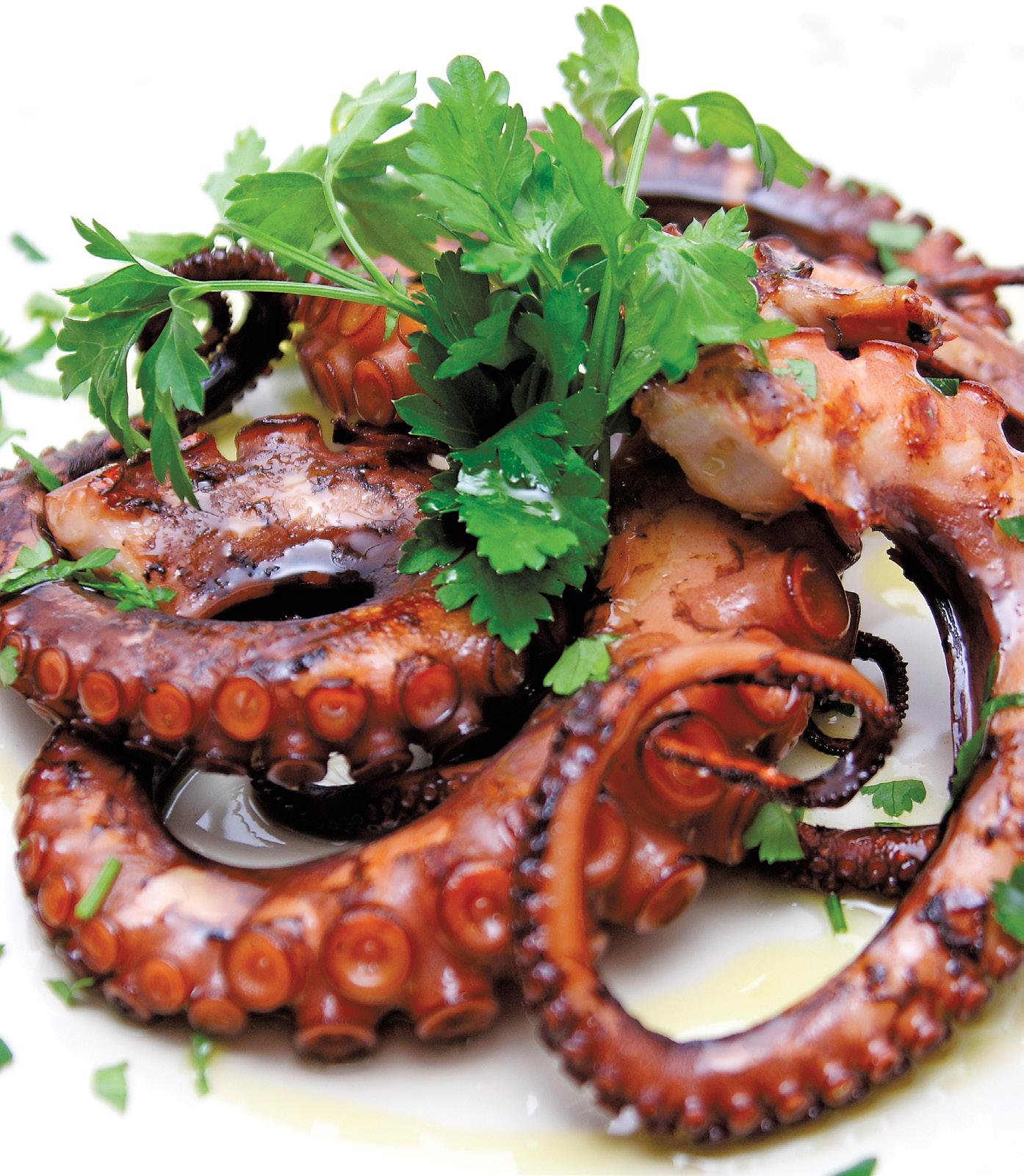

It’s March, which means that for we, the Greeks, it’s ‘Nistia’ or the Lenten period. While all major religions have some form of ritualistic fasting that is intrinsic to the faith, most are affiliated with both a restriction of consumables as well as a time component…However, what we, the Greeks find to be so inviting about Nistia is not only the duration, but the particular restrictions we put in place. For us, these amount to the universe saying, ‘slow down and detox a bit!’, but we understand that for other faiths, the message may be a little different.
Most religious rituals are meant to foster and strengthen the connection with God, or a higher power. In any religion, these rites look a little different…or sometimes a lot different, but the motivation is the same.
Before I dig into the specifics of Nistia, let’s explore what sects of faith subscribe to the concept of fasting, and what it means to them…
Symbolically, fasting is an act of sacrifice, in which one sacrifices food and hunger to God as a mark of devotion and surrender. Fasting purifies the mind, controls passion and the senses and checks emotions.
In Islam, fasting is an obligatory part of the religion. For the entire month of Ramadan (the 9th calendar month of the Islamic calendar, lasting 29 to 31 days) followers of Islam fast from dawn until sunset daily. There are ritualistic meals before dawn, and after sunset, but during the daily fasting period, Muslims are expected to abstain from food, drink, sexual activity, and tobacco, as a means to have them
focus on their spirituality and prayer.
In Judaism, there are six fast days in the calendar year, some considered ‘minor fasts’ which last from sun up to sun down, and the others are thought of as ‘major fasts’ which last for 25 hours (from sundown the day before the holiday to sundown the next day). These fasts have different motivations – to atone for sins, to mourn, to ex-
press gratitude, or as a form of prayer, but all have the same stipulations – no food or drink (not even water) during the fast.
In Buddhism, fasting may be recognized as ‘intermittent’, with food and drink being restricted to certain times of day (i.e. before noon), or restricting the consumption of certain items such as animal products – especially
Chef Maria Loi is an entrepreneur, Greek food ambassador and healthy lifestyle guru. The author of more than 36 cookbooks, she is also the host of The Life of Loi, which premiered on PBS and PBS Passport in December 2022, now available on Amazon Prime and Apple TV. The Life of Loi aims to build an inspirational, educational movement around the Mediterranean diet and lifestyle. Her Loi Food Products, a specialty brand built on traditional ingredients from Greece, includes pastas, beans, botanical herbs, refrigerated dips, honey, holiday cookies, and olive oil sold on QVC, at Whole Foods Markets, and in other stores. The namesake of Loi Estiatorio in the heart of Midtown Manhattan, she also has the Loi Specialty Shop at The Plaza Hotel. Connect with her on LinkedIn, follow her on Instagram and Facebook, and learn more about her food philosophy at loiestiatorio.com/chef-loi/.
during times of intense meditation.
In Hinduism, there are a wide variety of traditions pertaining to fasting, but they break down in to two different camps: Upvaas are fasts intended to fulfill a vow, while Vratas are fasts in observance of religious rituals. Followers may engage in either kind of fast during the week, depending on their spiritual intent. Depending on what Hindu god(s) devotees follow, that determines the preferred fasting days and additional rules they are meant to follow during the week.
In the various sects of Christianity, unlike other major religions, there are no specific fast days, though some followers of the faith choose to take on ‘Biblical Fasting’ in order to focus on their spirituality. During the 40 days of Lent, many Christians chose to abstain from specific foods, such as meat or processed sugar, as a form of sacrifice and commitment to God. However, many followers also choose to ab-
continued on page 76

stain from all kinds of different things, such as alcohol, chocolate, or even social media. In particular, Catholics tend to abstain from the consumption of food and drink on Ash Wednesday and Good Friday, to signify the commencement and the end of the Lenten period.
Now that we’ve briefly explored fasting in the other major religions, what exactly does it mean to the Greek Orthodox?
To begin with, for the Greeks, there are approximately 180-200 fasting days per year - at least half the year. While the Nistia periods used to be purely religiously associated, there is now a growing number of people that believe – and with good reason – that Nistia is a great impetus to detox their systems and eat cleaner, healthier food.
In speaking about cleaner, healthier food, perhaps what is most interesting are the rules when it comes to food consumption during Nistia. Unlike in Judaism or Islam, we do not consider fasting to be the abstention from all food and drink; instead, the Greeks abide by a few specific rules:
• No animal products/byproducts –this means no dairy, eggs, meat, or fish (this does not include honey, however, which is permitted during Nistia)
• No olive oil (though usually just on Wednesdays and Fridays)
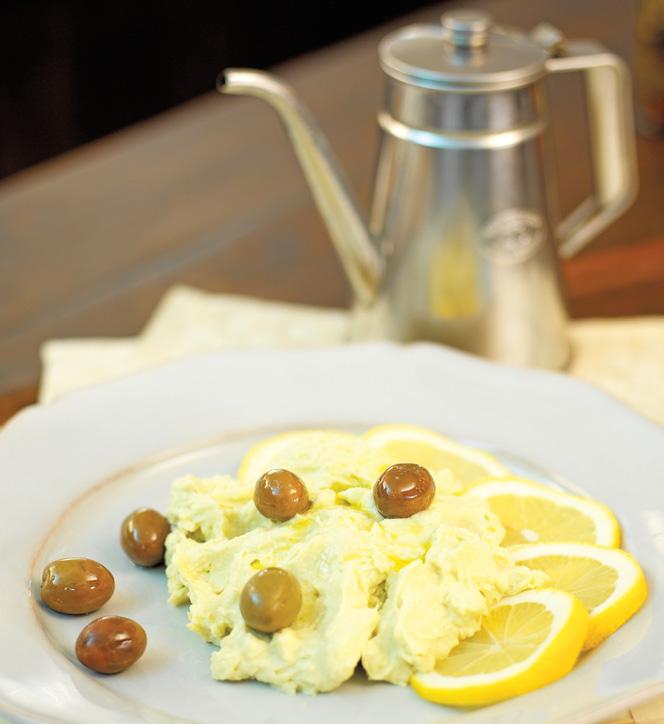
However, the consumption of fish eggs and shellfish (mollusks and crustaceans) is allowed, which can be confusing to some people.
So, in essence – besides shellfish –Nistia has the Greeks following a vegan diet! This then begs the question, what are some of the more traditional Nistia foods that are eaten during these periods?
Lagana – Lagana is a type of flat bread, ellipsoidal in shape, made without yeast (an ‘animal’ itself!). This special type of bread is mainly eaten on ‘Clean Monday’, the official start of Nistia, the Lenten Period. The custom of lagana refers to the “unleavened bread” of the Old Testament. In addition to the traditional lagana we all know, you used to be able to find lag-
ana with petimezi, a syrup made from grape must, but this is not common anymore. Though many places in Greece have their own versions of lagana, one of my favorite, lesser known versions is the traditional lagana of the island of Zakynthos, made with raisins and anise.

Tahini – Nowadays, we’re all pretty familiar with tahini, the byproduct of mashed sesame seeds which can be used in both savory and sweet culinary applications. With tahini we can make tahinosoupa (tahini soup), tahinopita (tahini pie), hummus, and spread it on slices of bread, as a seed butter of sorts. Tahini is also a quintessential ingredient for certain types of halva, staples of Nistia.
Twice a year, my father would travel to the northern city of Thessaloniki, always returning with a large tin of Haitoglou sesame oil, a native brand of oil in Greece, as well as their tahini paste and some of their halva sweets.
Halva – Halva is perhaps the most famous Greek fasting ‘dessert’, which can be found in a plethora of varieties. The halva you can purchase in stores is made with tahini and may contain nuts, raisins, or cocoa, and is sold in different shapes and sizes. There is also a variety known as Farsalon Halva, made from cornmeal or rice flour, characterized by its amber color and caramelized sugar crust. However, beyond the tahini-based halvas, don’t forget the homemade semolina halva, which can be plain, or made with nuts and/or raisins.

Mollusks and Crustaceans – Shell-
fish including lobsters, shrimps, crabs, crayfish, clams, cockles, mussels, oysters and scallops, squid, cuttlefish, and octopus are favorites for periods of fasting. Traditionally, as the ‘meatiest’ of the shellfish, octopus features prominently in Nistia cuisine. Often prepared by boiling in vinegar, then cooked in a pan, stewed, grilled or however preferred, octopus plays a primary role on the Lenten table. It is good choice, as it is low in cholesterol, and a great source of omega-3 fatty acids and B vitamins.
Tarama - Tarama are cod or carp eggs and are, after sturgeon eggs (caviar), one of the most preferred types of fish roe. In the market you can find two main types of tarama: white and red. Red tarama appeared on the market in the 1950s, when at the time, marketers and producers felt that a more brightly colored recipe would attract more consumers than the colorless white preparations made from white tarama. As such, they added pigments and created the red (really pink) tarama, which can still be found today. Because of these pigments, white tarama is considered superior in quality, flavor, and texture.
Bottarga – Using another variety of fish roe, most commonly grey mullet, Bottarga is made using the entire roe sac of a fish, which is salted, massaged to release any air pockets, then pressed and dried – usually in a wax coating. A delicacy all over the world, dating back to ancient times, this salty, delicious treat can be sliced and eaten on its own, grated, or dried further and
made into a powder. Near my hometown, you can find one of the most notable producers of bottarga, Trikalinos, specialists in only the finest quality gourmet products – their avgotaraho (bottarga in Greek) is second to none.
During Nistia, because of the abstention from nearly all animal proteins, it’s important to maintain a balanced diet of beans and legumes, leafy greens, vegetables, nuts and seeds, fruits, and grains and cereals, in order to make sure our bodies get the micro and macro nutrients it needs.
Rest assured, however, that this dietary pattern is not nearly as restrictive as it sounds, and inspires some incredible culinary creativity! In the kitchen, we often depend of animal products to bring our dishes to the next level, but during Nistia, this is not an option – and even our use of olive oil is more limited than normal. This is why we often cook Ladera style, which means that vegetables and/or beans are cooked with a lot of olive oil, with the olive oil being added near the end in order to preserve the flavor and nutrients of the olive oil.
Nistia is a great way to detoxify your body and mind, and focus on the important things in life – though we may abstain from certain foods, we get to experience different ways of enjoying other foods we may not have appreciated before….when one door closes, another window opens…
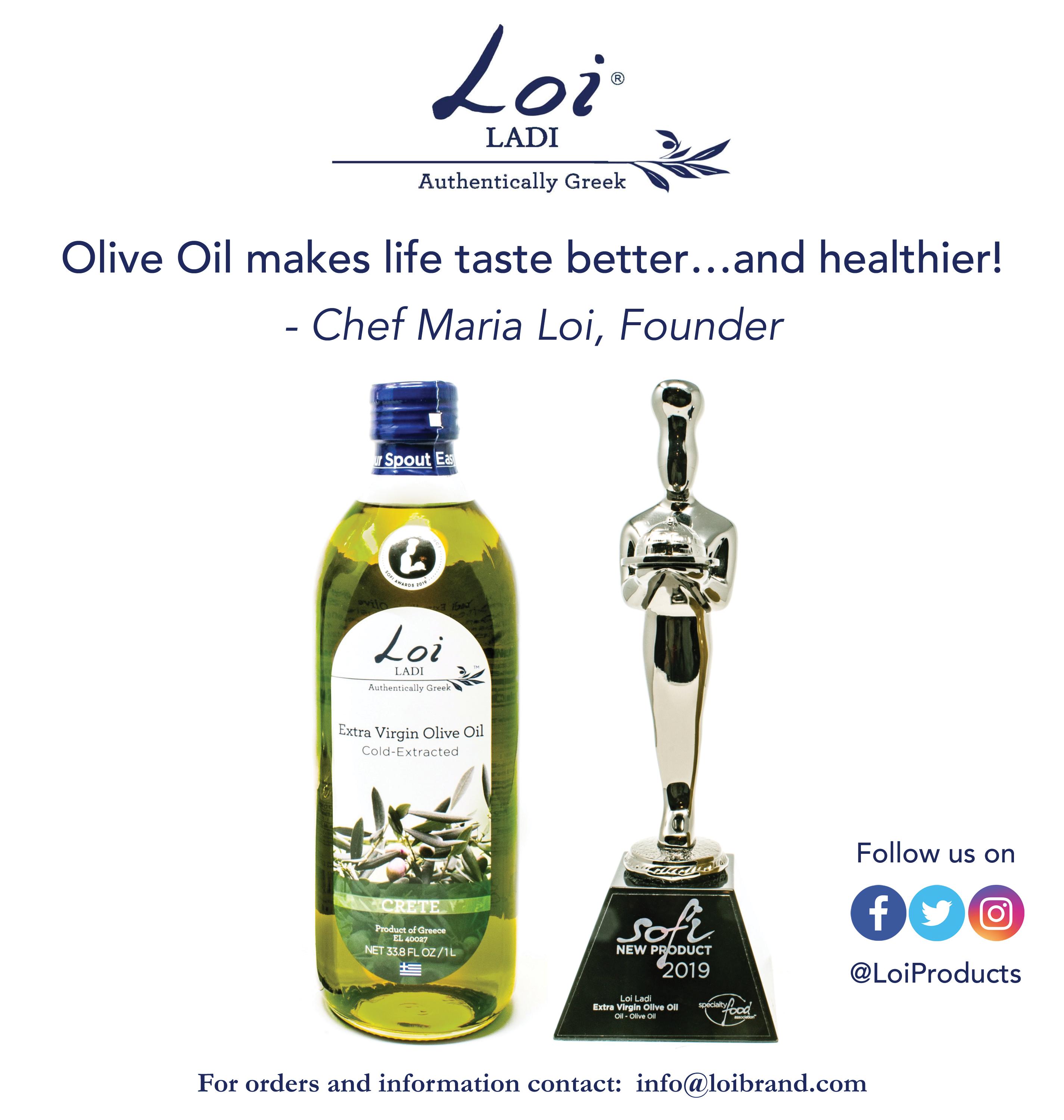
In New York State, employers in the hospitality industry generally must pay for the purchase and maintenance of the uniforms they require their employees to wear in the workplace. Therefore, businesses are urged to familiarize themselves with the associated technical rules and regulations in order to maintain compliance and avoid violations of the law.

Under New York State law a uniform is “required” when an employer mandates that employees wear specific clothing in the workplace or while performing their job. Required uniforms also include clothing that must be worn to maintain compliance with federal, state, city, or local laws, rules, and regulations. An
example of this may be clothing with an employer’s business name or logo. If such clothing is deemed a required uniform, the employer must provide the uniform to the employee free of charge and must provide enough uniforms to the employee for their average workweek. If the employee must purchase their uniform, the employer must reimburse the employee for the total cost by the next regularly scheduled payday. If the employer provides enough uniforms to cover an employee’s regularly scheduled weekly shifts and the employee wishes to purchase additional uniforms in excess of the number of uniforms required, an employer does not need to pay for or reimburse the employee for the cost of purchasing such additional uniforms.
Maintaining required uniforms includes any necessary washing, ironing, dry cleaning, alterations, repairs or any other maintenance needed for the required uniforms to be worn by employees in the regular course of business. In addition to purchasing required uniforms, as noted above, employers are also generally obligated to cover the costs of maintaining employees’ required uniforms. Employers may send required uniforms out to be cleaned or maintain the required uniforms in-house at no cost to the employee. If an employer chooses not to maintain required uniforms, the employer must provide employees with uniform maintenance pay in addition to an employee’s regular wages. The amount of uniform maintenance pay that an employer must provide to the employee is a fixed amount based on the number of hours the individual employee works and may vary according to the county the employee is working in.
As the cost of uniform maintenance pay can quickly add up, employers can avoid the added costs of uniform maintenance pay by choosing uniforms that fall within the confines of the wash-and-wear ex-
Nija M. Davis-Pedlar is an Associate in the Labor and Employment Practice Group at Ellenoff Grossman & Schole LLP in New York City. Ms. Davis-Pedlar has experience representing management in traditional labor relations, employment counseling, and wage and hour claims. Before joining Ellenoff Grossman & Schole LLP, Ms. Davis-Pedlar was an associate with The Realty Advisory Board on Labor Relations, where she aided in defending employers in the grievance and Arbitration process, and partook in the negotiation of collective bargaining agreements on behalf of employers. Nija M. Davis-Pedlar can be reached via email at ndavispedlar@egsllp.com or by phone at 212-370-1300.

ception. Under this exception, an employer will not be required to pay employees for uniform maintenance if all of the following conditions are met:
1. The required uniform is made of “wash and wear” materials;
2. The required uniform may be routinely washed and dried with the employee’s other personal garments;
3. The required uniform does not require ironing, dry cleaning, daily washing, commercial laundering, or other special treatment; and
4. A sufficient number of required uniforms are provided to the employee, or the employee is reimbursed by the employer for a sufficient number of required uniforms consistent with the average number of days per week the employee works.
For example, assuming the above conditions are met, an employer would still be able to require its employees to wear a cotton shirt with the business’s logo on it and not be responsible for uniform maintenance pay. Conversely, if the employer required the employee to
continued on page 122


Focusing on the vital role food and beverage plays in the global cruise industry, Seatrade Cruise has set its sights on creating an allnew dynamic event experience for cruise professionals responsible for food, drink, hotel ops and guest experience.

The world’s first event dedicated to cruise food and beverage, F&B@ Sea, is set to take attendees and exhibitors on an immersive, epicurean journey of the senses, all within walking distance of Seatrade Cruise Global. Supported by Cruise Lines International Association (CLIA) and Florida-Caribbean Cruise Association (FCCA), the event is slated for March 28-29 at Port Everglades’ Terminal 2 in Fort Lauderdale, FL,
representing a huge win for all food and beverage professionals in the cruise sector.
Seatrade Cruise is the industry’s leading platform for collaborating and doing business—and F&B@Sea will undoubtedly present a fantastic forum showcasing innovative trends in drinking and dining. “This premier event promises to serve up a generous helping of inspiration to bring our F&B outputs to the next
level and new ideas to address the supplier-base challenges unique to our industry,” noted Rudi Sodamin, Master Chef, Holland America Line & Head of Culinary Arts, Princess Cruises.
F&B@Sea will feature products, services and technologies from handpicked vendors including drinks suppliers Bacardi, Diageo, Heineken, Rémy Cointreau, Pernod Richard, Stella Artois, and more.
Test and taste a variety of beverages, meat, fish, ingredients, plantbased food and more, through activations, sponsorships, and other onsite experiences or within the open marketplace, filled with market stalls and pop-up bars. There will also be a centrally-located bar and kitchen featuring demonstrations from chefs & mixologists showcasing the crème-de-la-crème of F&B kitchen innovation.
The much-anticipated curated content program will uncover emerging trends – from sustainability to the guest experience, providing answers and practical solutions to questions on cruise food and beverage sustainability, supply chain
continued on page 124
“This premier event promises to serve up a generous helping of inspiration to bring our F&B outputs to the next level and new ideas to address the supplier-base challenges unique to our industry.”
— Rudi Sodamin


Whether it’s dining al fresco at local restaurants or enjoying pedestrian plazas, the way millions of New Yorkers and tens of millions of annual visitors interact with our streetscape constantly evolves.
With that, so do the needs to effectively plan and manage precious public space in our big, complex city. The appointment of Ya-Ting Liu as the city’s first chief public realm officer is not only an excellent selection for this position, but also smart city planning.”

It also represents the next step in Mayor Adams delivering on a key promise from his State of the City address. In this newly created role, Ms. Liu will coordinate across city government, community organizations, and the private sector to create extraordinary public spaces across the entire city and continue to drive the city’s economic recovery.
By signing Executive Order 27, Mayor Adams codified the creation of the position and ensured that New Yorkers continue to have a one-stop shop for all issues related to public space.
We applaud the Mayor’s commitment for New Yorkers to know there is one person at City Hall whose number one goal is to improve their quality of life by creating incredible, new public spaces and ensuring the ones we have are clean, equitable, and safe.
Her opening comments left us very encouraged: “In New York City, the public realm is everyone’s living room. It’s where we eat, play, and gather.” She also spoke about her priorities of delivering two components of Mayor Adams’ “Working People’s Agenda.” One of those two issues is the admin-
istration’s work to deliver a permanent outdoor dining program in partnership with the City Council that works for businesses and residents, building on the massive success of the pandemic-era temporary Open Restaurants program, with clear design guidelines and accessible tools for restaurant owners and communities.
She will also execute on a plan to invest $375 million to create and expand high-quality public spaces in all five boroughs, which includes the Broadway Vision plan, a full reconstruction of Jamaica Avenue from Sutphin Boulevard to Merrick Boulevard, and permanent upgrades to Open Streets in the Bronx and on Staten Island.
Ms Liu also outlined her plan to support the city’s recovery with a focus on quality of life, wellness, safety, and equity. Building on the recommendations of the “New” New York panel and Mayor Adams’ $900 million investment in traffic safety, her additional priority projects will include:
• Keeping city streets vibrant by addressing the longstanding, pervasive issue of unsightly sidewalk construction sheds, replacing them with newly designed structures, and strengthening enforcement against those who leave sheds up for years;
• Reimagining Fifth Avenue from Bryant Park to Central Park as a safer, less congested, pedestrian-centered boulevard that also prioritizes pedestrians, cyclists, mass transit, and public space, in partnership with a wide range of public, private, and community partners; and
• Reclaiming spaces under the Brooklyn Bridge in Manhattan, that have for years been closed to most New Yorkers, for public use.
We are looking forward to seeing how Ms. Liu collaborates with New York City Department of Small Business Services Commissioner Kevin D. Kim. He has been an advocate for Open Streets to outdoor dining with public spaces keeping small businesses open and thriving.
We also found the perspective of the restaurant design/build community very encouraging with the news of Ms. Liu’s appointment. Jesse Lazar, interim executive director, American Institute of Architects in New York City AIA New York. “A fierce public space advocate, Ya-Ting’s extensive experience in urban planning, combined with her dedication to equitable and sustainable design, will be instrumental in creating a more livable and vibrant public realm for all New Yorkers. We particularly look forward to seeing the city’s Open Restaurants program improve under the auspices of this new position, which will review the outdoor dining program in the context of the broader public realm.”
We are excited to see how Ms. Liu’s reputation for out-of-the-box-thinking, passion for well-designed, inclusive public spaces for all, and ability to bring all parts of government together can benefit our restaurant community.

“One of those two issues is the administration’s work to deliver a permanent outdoor dining program in partnership with the City Council that works for businesses and residents, building on the massive success of the pandemic-era temporary.”Ya-Ting Liu

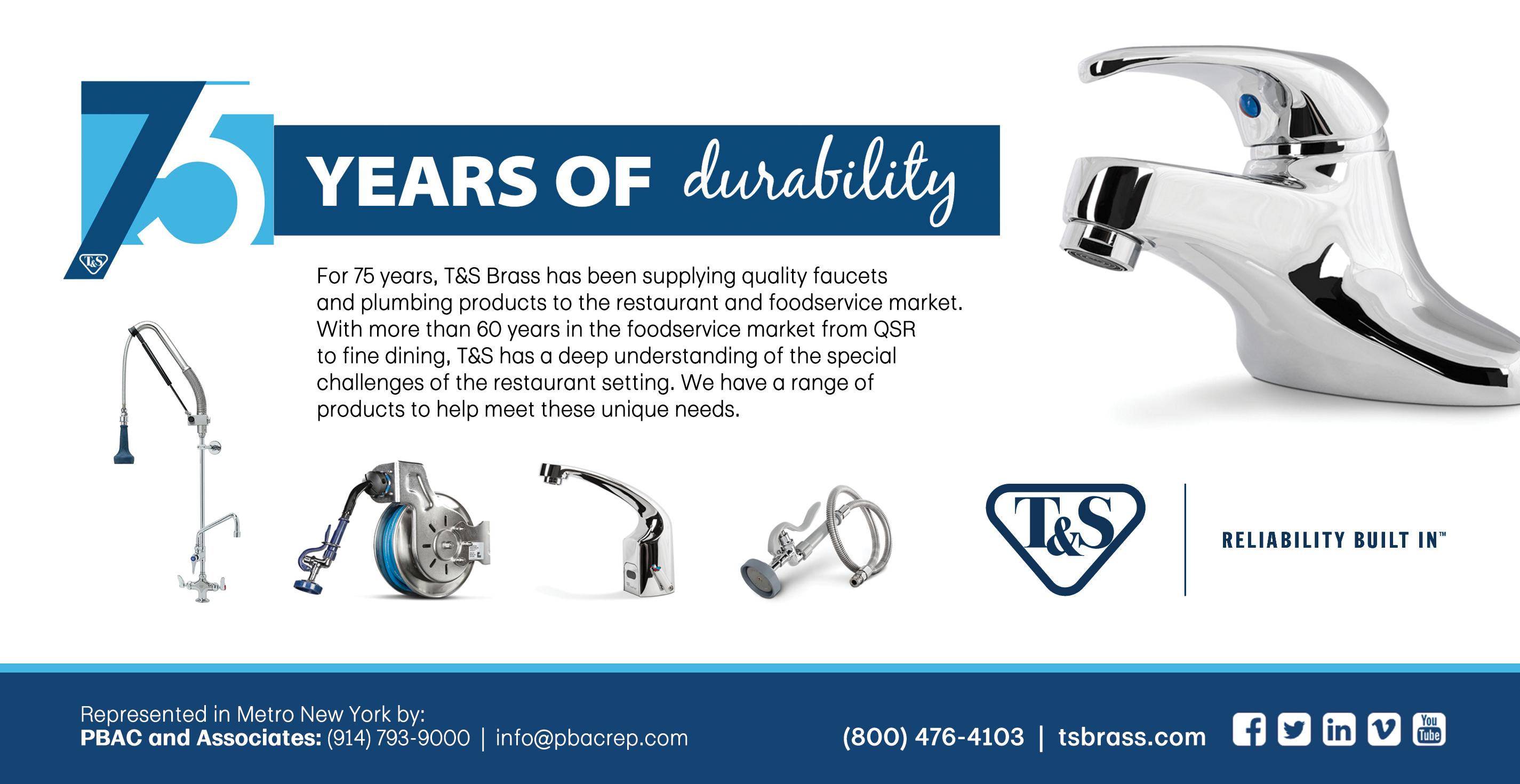

Restaurant marketing is hard. No matter how hard we wish, there is no silver bullet solution. It’s a lot of little moves happening consistently over time that get optimized for performance as you go.
Half the battle is just showing up. Seriously. Restaurant marketing is about top of mind awareness (TOMA). If you can get TOMA with your guests, you get more orders. More on that later …. So what was our secret framework?
First of all, super proud of the work the entire team puts into this. Every single member is important. Read our reviews on Google and you will see that 1 out of 3 guests mention
the service. A few key factors:
1. The food and the service are great. Those are table stakes for all restaurants.
2. Monthly limited time offers. These fuel creativity, awareness, engagement and guest retention. I can’t express to you enough the value of an LTO.
Example: THE PB&JBB - Yes, that has peanut butter, jelly and jalapenos on a Burger.
3. Guest data. We collect guest contact
info on our website, from feedback, online orders, kiosk orders, free WiFi, paid media campaigns, marketing partnerships and loyalty sign ups. If there is a way to get your email, we will.
Best part… WiFi only costs $19 a month. Pays for itself by the time the 2nd guest signs up every month. Ask me how.
4. TOMA + guest communication. We reply to every single review, direct message and text message (via
a hospitality business.
He is now a hospitality marketing consultant, customer and technology evangelist with more than 20 years experience in B2B digital marketing and business development, specializing in hospitality marketing, content, local SEO, reputation management and influencer marketing. He helps technology companies, brands and restaurants to acquire and retain customers. Rev is known as an “expert burger taster,” pens hospitality and marketing tips on his Instagram @revciancio, as well as his LinkedIn Profile. He believes that Pizza is a religion.

Ovation) from every single guest. We send 1-2 SMS messages per month and an email at least once a week.
We post content to Facebook, Instagram and TikTok on average every other day.
5. I will brag here ... we have mastered local search. They say that location is everything and it is, ESPECIALLY ONLINE.
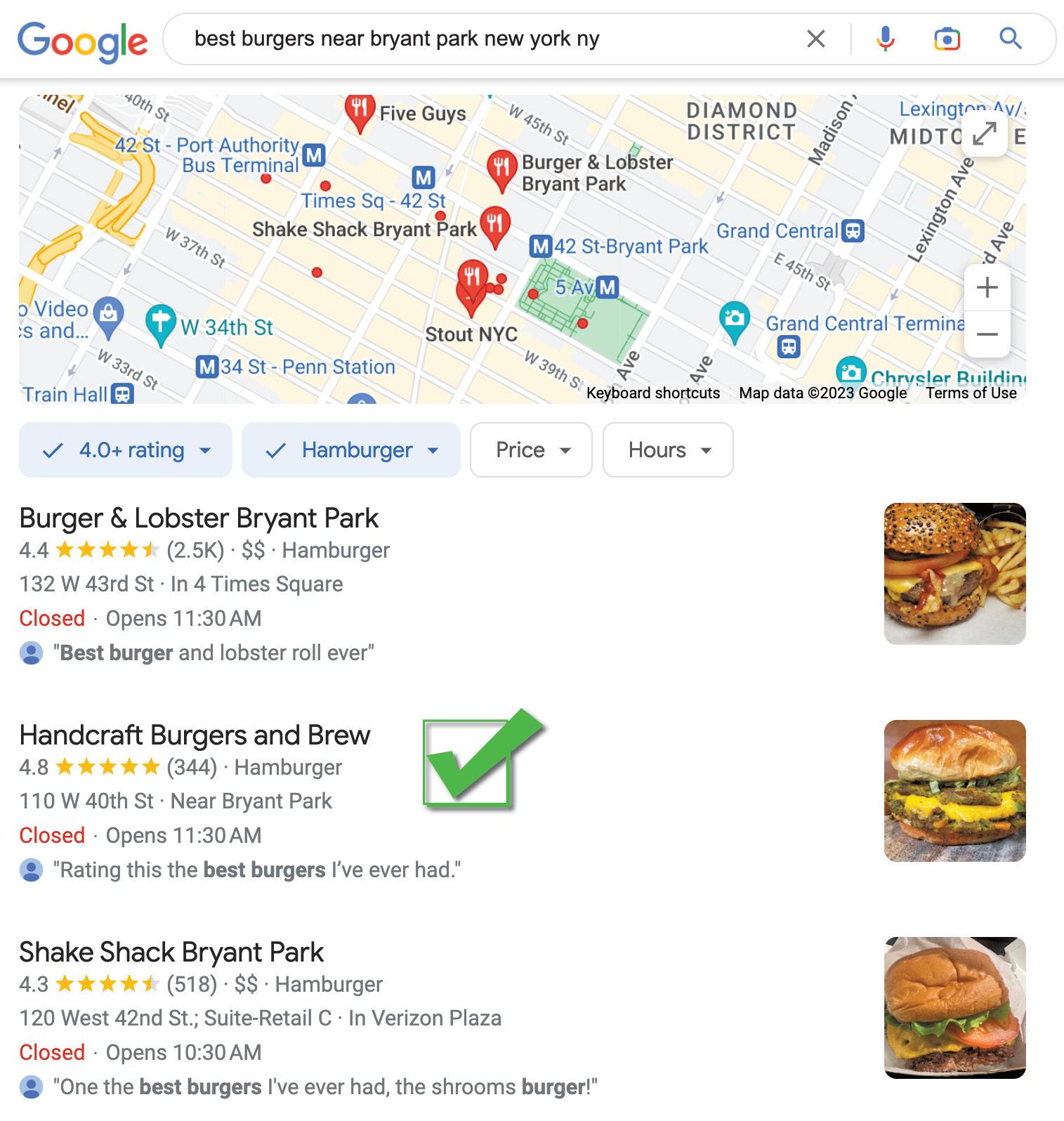
If you can come up at the top of near me searches on Google, Yelp, Bing, Yahoo, Siri< Alexa, etc, you will grow your business.
If you do all of the above, I guarantee you will increase your sales.
Thanks for reading to the bottom. You are my favorite and that’s why I take the time to write and share this kind of info ... I’m here to help you.
If you want more restaurant marketing secrets or have questions, send me a message on Instagram or LinkedIn … or just bring us on board to help with your marketing. rev@brandedstrategic.net
What has led to a 300% increase in revenue from January 2022 vs 2023 at our restaurant





Motion Technology, Inc. has five different models of ventless fryers, they come in various sizes and have been designed to handle a range of deep-frying demands. When determining which AutoFry Ventless Fryer model is the best fit for your business there are several things you should consider.
First, what are your foodservice goals? Before choosing the size of your AutoFry you will want to make sure you have a list of things you would like to accomplish with your foodservice program. Will you be using third party delivery services? Will sustainability be a main focus? Once you have zoned in on your goals you can focus on a plan to put them in motion.
Next thing to consider is the Food Factor! What do you plan on serving? If you are looking to only fry precooked frozen items, any size AutoFry will work for you. However, if you want to offer fresh, raw product, the double basket AutoFry units allow you to fry independently on
both sides. Perfect if you plan to fry raw chicken separately from your French fries.
How much you will be frying is another factor to consider. We know you can’t predict what the future has in store, but by making a rough estimate of how much you anticipate cooking, you’ll have a better idea of the capacity you need for your ventless, automatic fryer. Take a look below to get an idea of hourly capacity rates for each machine and compare them to your needs.
Lastly, you will want to take into consideration how much space your business can dedicate to kitchen equipment. AutoFry can fit into just about ANY tight kitchen space. With three countertop models, the MTI-5,
MTI-10X/XL & Mini-C, AutoFry takes up less than 2ft of your counter space. Even food trucks and kiosks aren’t too small for these models!
On the flip side, the larger AutoFry models are just as versatile. The MTI40C sits on the counter, occupying roughly 3ft of space with double the
output of the smaller models. The MTI-40E is a freestanding floor model that takes up about 3ft of width on your floor. Based on those measurements, you should be able to look at your available space and determine how large or small you’d like your fryer to be.
One thing you don’t have to consider is installing an expensive vent or hood system! All AutoFry models are completely ventless, making them much more convenient to fit in your kitchen!
For more information on how AutoFry can help your business, visit MTIproducts.com



CHEFS’
VIGNOLA IS TOP TOUQUE AT NYC’S CATCH STEAK
Catch Hospitality Group, known for its successful seafood-centric CATCH restaurants with locations in New York, Los Angeles, Playa del Carmen and Las Vegas, know that it takes top talent to maintain consistency and success.
CATCH STEAK New York’s success comes as no surprise with the talented Michael Vignola running the Meatpacking District’s kitchen since 2019. “I was inspired to become a chef as a result of the challenge of building a team,” Vignola explained. “I love the effort and tireless work on a nightly basis our people commit to making special occasions happen.”
Vignola brought a track record of success to Catch from stops at BR Guest Hospitality where he served as Corporate Executive Chef as well as Strip House & Bills Bar and Burger. Chef Vignola was entrusted with the creation and development of the menu, design the kitchen space and
oversee the CATCH STEAK kitchen.
The concept for the steak house was created by Eugene Remm, Mark Birnbaum and Tilman J. Fertitta, the power players behind Catch Hospitality Group. The goal continues to be a classic steakhouse with the fun, sexy vibe of a Catch Hospitality Group property.
The 15,000 square foot theatrical venue, designed by Rockwell Group, took over the former La Sirena space in New York’s., CATCH STEAK has brought a remix of memorable steakhouse motifs in a style that is lighter, brighter and fresher than its category counterparts.
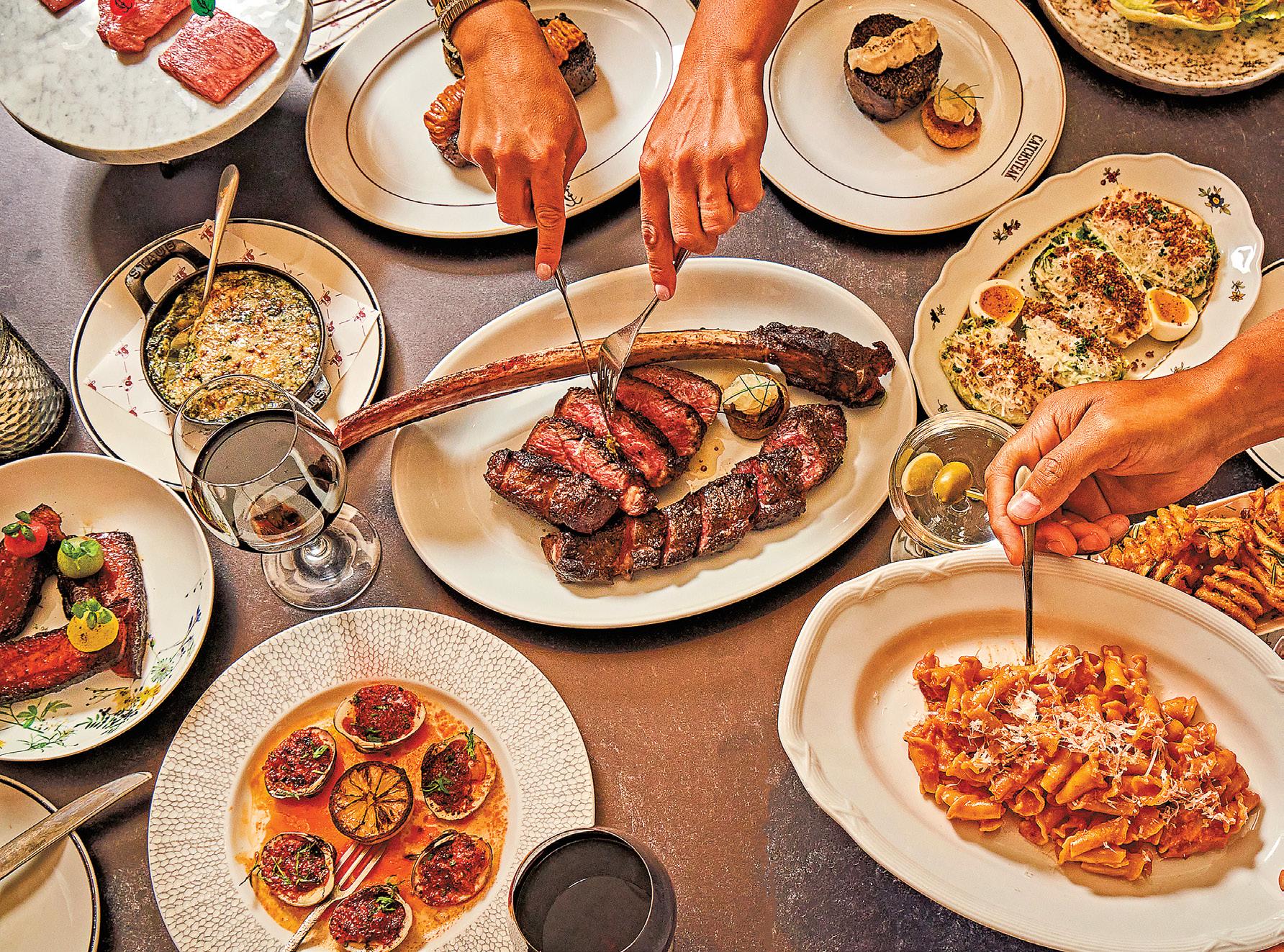
CATCH STEAK has set the tone for a more ap -
proachable steakhouse experience, serving a curated collection of the world’s best cuts and globally influenced dishes in a shareable style.
“Overseeing the creation of the menu at CATCH STEAK continues to be a unique opportunity to be part of a visionary team that truly approaches dining differently, creating authentic and elevated experiences through enhanced food, service and vibe,” Vignola said.
To accomplish that creativity, Vignola needed to find vendor partners that share his passion for the
highest quality fare.
“I love the Chefs’ Warehouse because of its service, excellent products, and the people. The Chefs’ Warehouse stands for integrity and transparency, and both of these qualities are constantly displayed within this company. Our signature dish with the Chefs’ Warehouse is this chili-buttered grass-fed steak. We are using the Chefs’ Warehouse butter, imported Calabrian chiles, and Sid Wainer’s spices in this dish. All the products featured in this dish can be found in the Chefs’ Warehouse catalog.”




Eight of Dallas’ best chefs have will put aside their daily competition for dining patrons to Benefit one of Metroplexes leading charities later this month.
An Evening with Bryan’s House is a first-year fundraiser in Oak Cliff organized by Dallas chef Peja Krstic of Mot Hai Ba. He’s asked seven of his friends to make their best plates, and funds will go toward Dallas nonprofit Bryan’s House, which has a mission of helping special-needs kids and their families with education, therapy and medical care. Bryan’s House serves seven counties in and around Dallas, but nearly 92% of its funding goes to families in Dallas County, according to the nonprofit’s latest annual report.
Notably, the list of eight chefs includes Matt McCallister, the former chef at Homewood, one of Dallas’ best restaurants. Homewood closed in February 2023. Krstic noted: “this lineup is made up of friends and the chefs that I admire and respect a lot that have joined together for a special cause.”
Highlighting the all-star cast is Junior Borges, founder of Brazilian-American restaurant Meridian in East Dallas and vice president of culinary at The Village, where Meridian is the flagship restaurant. Borges moved to Dallas to be the opening executive chef at Uchi and has been lauded as one of Dallas’ best.
Bruno Davaillon, executive chef and partner at Knox Bistro in Dallas and the creator of Dallas French restaurant Bullion,
now closed. Davaillon is the kind of chef that savvy Dallas diners have followed around town ever since he was the top toque at the Mansion on Turtle Creek, one of the highestprofile chef jobs in Dallas.
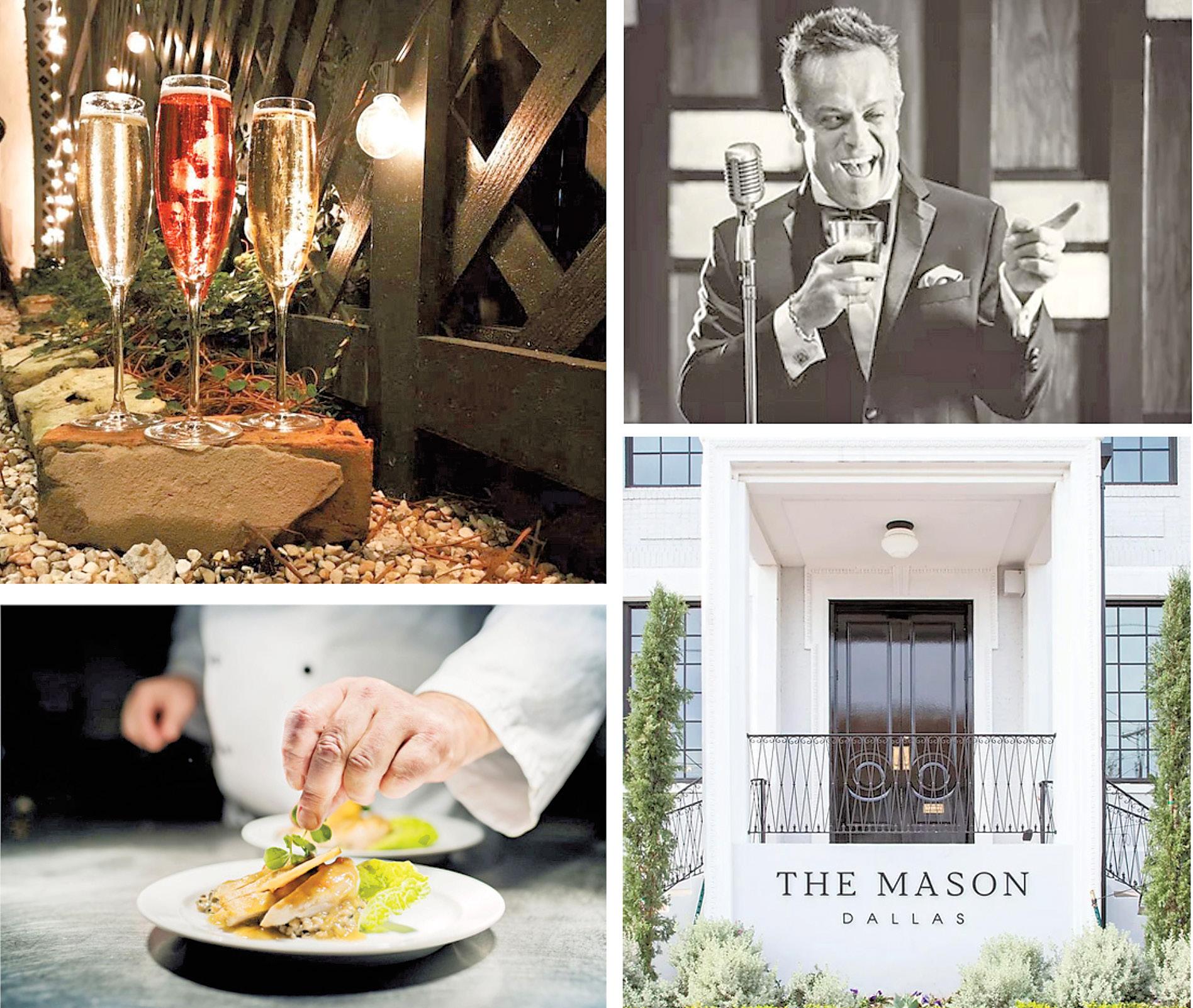
The event will also welcome Regino “Gino” Rojas, creator of Revolver Taco Lounge and a strong presence for Mexican cuisine in Dallas. He’s been on Taco Chronicles on Netflix
and has been up for James Beard Awards at least five times. Diana Zamora, pastry chef at Cry Wolf in Old East Dallas and the creator of Nena Postreria, a cake and cookie company that draws on her inspiration from Mexico and Central America.
John Tesar, chef-partner at Dallas steakhouse Knife and its sibling restaurants Knife Burger and Knife
Butcher. Tesar’s restaurant at the Ritz-Carlton in Orlando won a Michelin star in 2022. He’s twice appeared on TV cooking competition show Top Chef.
Among the notables give their time to the cause will be Omar Flores, the chef and creator of friedchicken restaurant Whistle Britches and Tex-Mex joint Muchacho. Flores has been a chef to watch since he was an up-and-comer in Dallas at erstwhile restaurants Driftwood and Casa Rubia.
Matt McCallister, former executive chef at Dallas restaurants Homewood, FT33 and Filament. McCallister never went to culinary school but has been lauded for his creativity in Dallas kitchens for more than a decade.
Serbian-born chef Peja Krstic picked the chef lineup and is organizing the March 30 event. He was the executive chef at the Standard Pour in 2012, a fun bar with serious food. Krstic took over Vietnamese restaurant Mot Hai Ba in Lakewood in 2015 and later opened a contemporary Asian shop at a food hall called The Exchange in downtown Dallas. Krstic doesn’t plan to make a dish for the seated dinner but says he’ll make hors d’oeuvres. About 80 tickets — each $500 — were once available. Krstic noted that half have been sold. He hopes to make this high-profile dinner a yearly event. “Next year we’ll probably go a little bit bigger,” he noted. “This lineup of chefs is why the ticket is a little bit pricier. It’s very rare to get all these chefs in one spot,” Krstic concluded.
“This lineup is made up of friends and the chefs that I admire and respect a lot that have joined together for a special cause.” — Peja Krstic

Rosebud Restaurants announced that Carmine’s Chicago has been temporarily shuttered for reconstruction late last month. The $4 million reconstruction project is expected to last 15 months, and will, begin with the demolition of the existing building.

The new Carmine’s will measure over 10,000 square feet of dining space and feature an expansive, allweather, outdoor terrace overlooking Chicago’s Gold Coast neighborhood, stunning dining rooms and multiple bar areas on the first-floor entry and terrace. “At Rosebud Restaurants, our customers are always a top priority,” said Alex Dana, founder of Carmine’s parent company, Rosebud Restaurants. “This reconstruction will help us reach new levels of success when we reopen in 2024 by creating an even better, more memorable, dining experience.”
When Carmine’s first opened its doors in 1985, it quickly became a hotspot for celebrities, Chicagoans and tourists alike. Its classic, Italian menu and prime location for people-watching have made it the top choice for many when it comes to dining out in Chicago. “Rosebud has continued to grow amidst all of the changes and challenges we’ve experienced as a city over the last 50 years,” said Dana. “Unfortunately, we’ve seen many of our
greatest competitors struggle to overcome these challenges, and it’s with great admiration and respect to them that we approach new projects and continue to grow the legacy of iconic Chicago institutions.”
Since its first store opened in 1976, Rosebud Restaurants have expanded to include nine locations across Chicago and the surrounding suburbs and are celebrated for their commitment to serving up authentic, Italian recipes, generous portions and exceptional service. The
new Carmine’s building is one of many exciting projects on the horizon for Rosebud Restaurants.
In 1973, 26-year-old Chicago native Dana purchased an existing luncheonette in Chicago’s Loop. Although business at the “store” was good, Dana wasn’t satisfied. Actually, Dana had a different vision for the location: a full-service restaurant. A “joint” that operated from early morning until late at night, a place that offered great food and lots of it, excellent service from
friendly people and warm hospitality beginning at the front door. Being raised in a family of restaurant owners it came as no surprise that a new Chicago legend was in the making.
Carmine’s Gold Coast restaurant neighbors Tavern on Rush, another Rush Street staple that recently closed after a long run. Tavern owner Phil Stefani was pushed out by his landlord. Jim Banks and Fred Barbara plan on remodeling the space and opening the Bellevue this spring.
For nearly 50 years, Rosebud Restaurants have been bringing classic Italian food to Chicago and the surrounding suburbs. Each location has an authenticity and a high level of quality and service that have become an industry standard. Rosebud’s founder, Dana, has built a family of restaurants that are woven into the very fabric of Chicago.
Throughout the Carmine’s reconstruction, customers can enjoy their favorite dishes at neighboring Rosebud Restaurants locations: Rosebud on Rush, Rosebud Randolph, Rosetta Italian, and The Rosebud.
Today, ten restaurants including two steakhouses and eight white table cloth Italian concepts are proudly under the Rosebud umbrella, each filling a unique niche within the community and upholding the highest standards for fine cuisine and superior wine selections.
“This reconstruction will help us reach new levels of success when we reopen in 2024 by creating an even better, more memorable, dining experience.” — Alex Dana

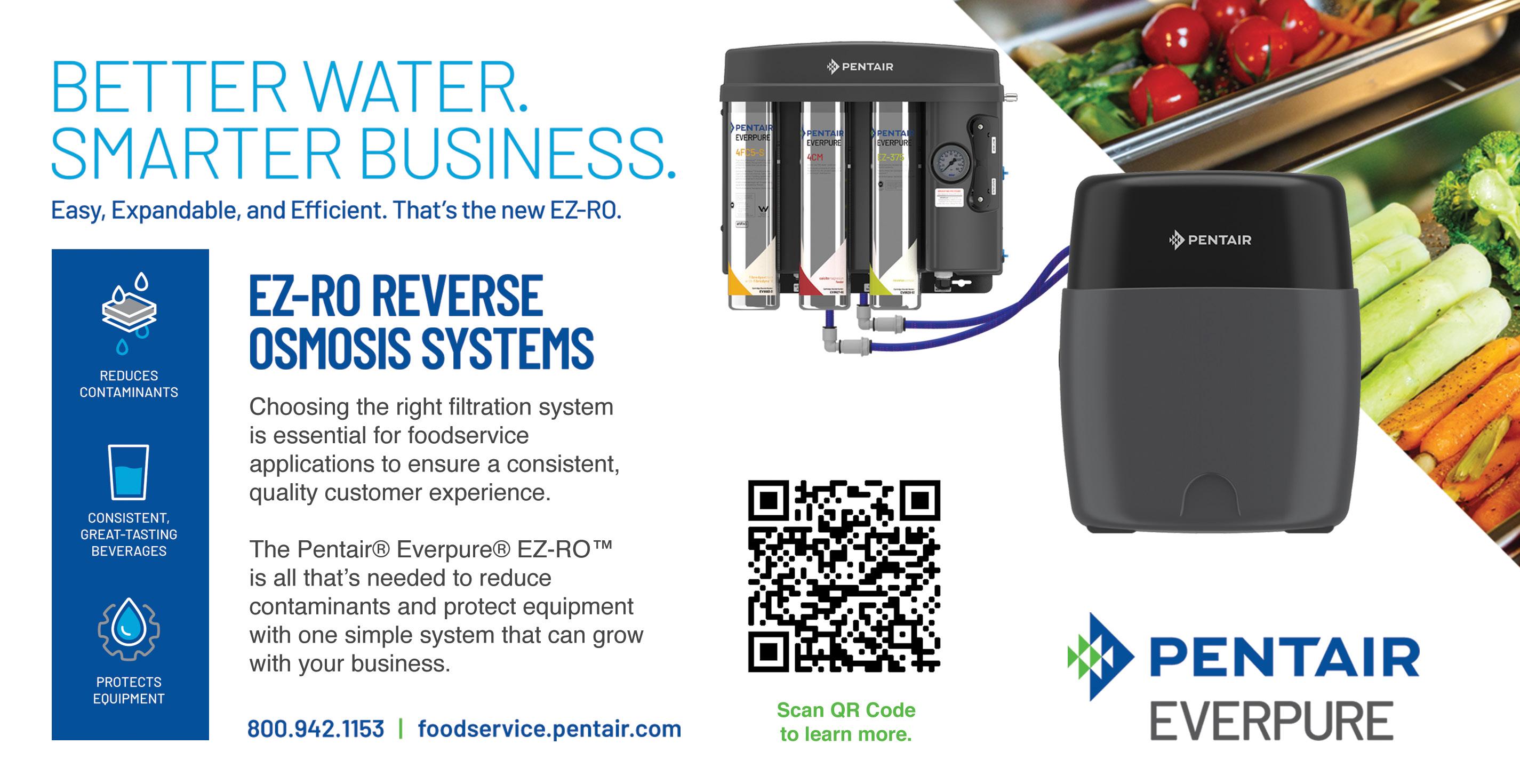
Since the company’s inception, Inno-Pak has focused on providing innovative and user-friendly features to the food packaging world. What began on a folding table in a basement office has grown into a leading innovator in food packaging in the US from a dream of changing the packaging world for the better. Inno-Pak CEO Jon Sill and his team remain committed to constantly finding ways to update the usability, functionality, and sustainability of Inno-Pak products.
Inno-Pak launched with the production of single-use packaging for freshly prepared foods, primarily serving supermarkets. They soon realized that these products were perfect for the food service sector and began to expand. “It’s somewhat of a difficult industry to break into,” Sill noted. “You would think it’s very similar and would be an easy transition, but it took some time to develop.” However, it was clearly worth meeting the challenge. Inno-Pak has grown significant partnerships with several of the largest foodservice distributors in the US, while still maintaining their supermarket market share. They have since built their own distribution facility and 315,000 square foot warehouse in Ohio, and recently opened a new distribution facility in Reno, Nevada.
During the pandemic, while many businesses were struggling with supply chain and distribution issues, Inno-Pak was able to bring a significant amount of product to businesses that couldn’t
get packaging from their usual suppliers. While they still had a few supply chain issues of their own, in many ways the massive increase in takeout and delivery during the pandemic accelerated Inno-Pak’s growth. “It was challenging navigating through that,” Sill said. “Fortunately, we had domestic manufacturing to be able to maximize the opportunity.” Imported products of all kinds became difficult to get—and pricey. With much of their manufacturing based in the US, InnoPak was able to continue to distribute throughout the country, and their sales significantly increased. Beyond expansion of the Inno-Pak brand, Sill and his team have developed a deep understanding of the needs of the communities it serves. With the input of its customer base, they have focused on bringing high quality, competitively priced, sustainable solutions to the marketplace. Their recent acquisition of the Stalk Market brand has accelerated their growth of sustainable packaging space. In many ways, this push towards sustainable packaging has
come from multiple directions. For some customers, it’s very important to them that their packaging is sustainable; for others, cost is the main factor. “Our job is to bridge the gap and create packaging that is functional, sustainable, and competitively priced,” Sill continued.
With sustainability put on the back burner for many restaurant and foodservice operators and the distributors that support them during the pandemic, it has now returned as a priority. Most of Inno-Pak’s customers are now pushing for more sustainable products, and it’s become a main focus for the company. “From a social standpoint, we feel we have to drive it as well. We’re committed to this, and we want to lead in sustainability,” the Ohio based executive outlined. One way that Inno-Pak is accomplishing this is with testing; the company is part of a consortium that focuses on material health testing. This means that all of Inno-Pak’s packaging is benchmarked and tested for total fluorine levels, which indicates if PFAS has been added to the product. Sill places heavy emphasis on the fact that they not only have the testing data, but that customers are aware of the results. It’s a core part of what they do.
The next hurtle for Inno-Pak in their sustainability goals will be scale;
many companies have struggled with producing sustainable products at the scale required. Legislation has accelerated the push for eco-friendly products, but the ability to produce at a larger scale has become a challenge for many manufacturers. Sill doesn’t see this as an issue for Inno-Pak. “There’s a reason our tagline is “Innovation: it’s what we do,” he added. “If anything, our commitment to producing sustainable products will only elevate our position as a leader in the packaging industry.”
Sill understands that many companies produce packaging products. But his vision is for Inno-Pak to offer a wide range of added value services for customers that go beyond packaging production. Some of these services include in-house graphic design and structural design services. “There’s a lot of focus on working with our customers to design and brand product that helps them move from generic packaging to brand building. We are already seeing it with the popularity of our new bakery packaging and takeout design programs. We’ve made significant commitment from IT support to customer service/communication to support these new additions,” Sill concluded.
From innovation in packaging design to innovation in customer support, it’s clear that Inno-Pak will only continue to grow into the forefront of the food packaging industry.
For more information, visit Innopak on the web at innopak.com

“Our job is to bridge the gap and create packaging that is functional, sustainable and competitively priced.” — Jon Sill
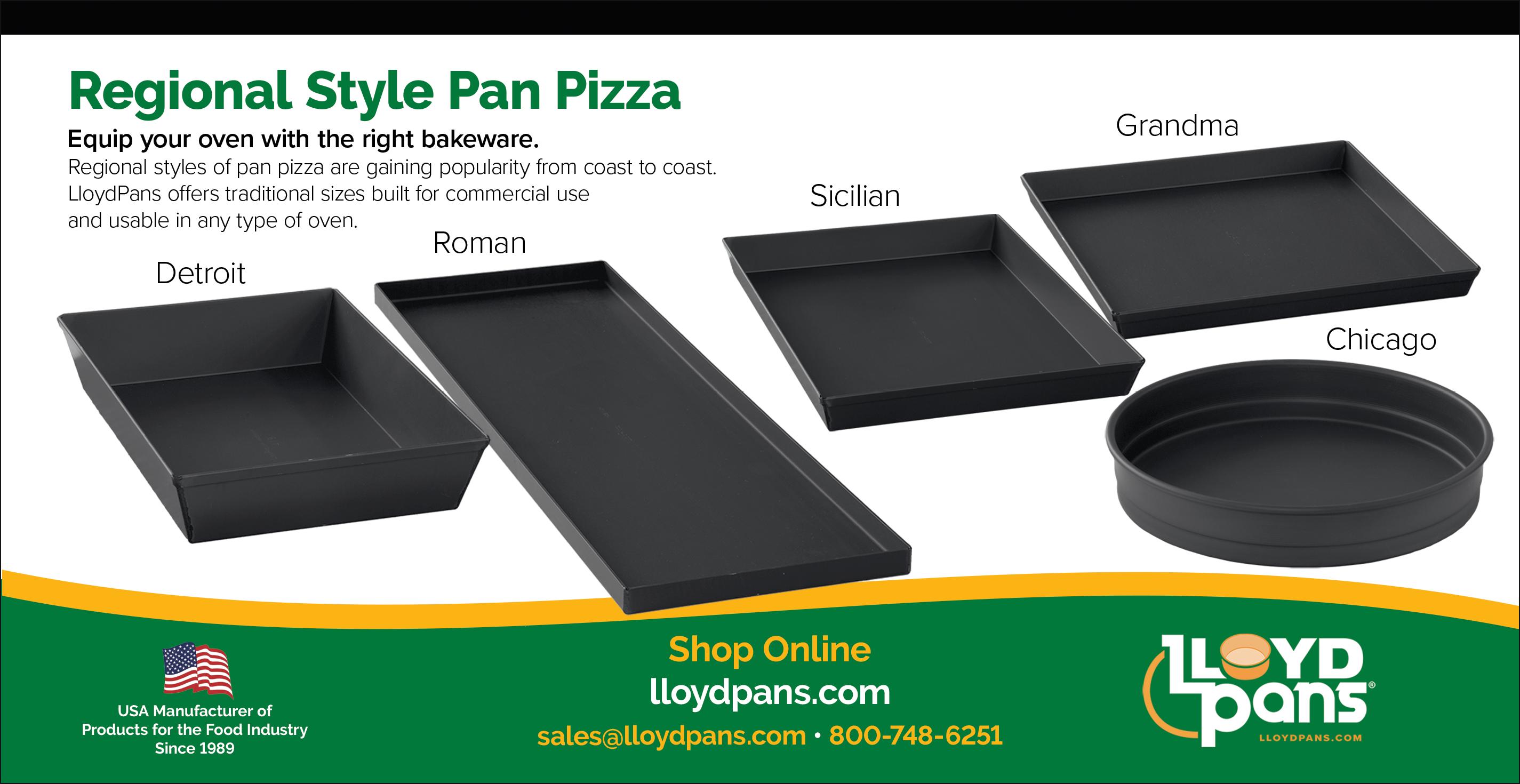

Do you have the SCOOP on any foodservice and hospitality news? Send items to SCOOP Editor Joyce Appelman at tfs@totalfood.com
Easy Ice, the only national provider of all-inclusive commercial ice machine subscriptions, held their inaugural awards ceremony recognizing one food service equipment dealer and one manufacturer representative of the year at the North American Association of Food Equipment Manufacturers Show earlier this month. The brief ceremony took place at the Hoshizaki America booth.
This year’s NAFEM Show marked its comeback after a 4-year hiatus due to the pandemic. Held every other year, the show brings over 20,000 people and over 500 exhibiting companies together for a weekend of networking and education. Easy Ice attendees were excited for the opportunity to connect face to face with some of their customers and partners in the FES dealer and ice machine manufacturer worlds.
“2022 was a challenging year in terms of the equipment shortage,” said Bruce Trecek, Affiliate Program Director at Easy Ice. “It feels great to kick off 2023 on a high note, giving these awards at the biggest event for food service equipment dealers in the country.”
Easy Ice chose Berlin’s Restaurant Supply, based in Charleston, SC, as their Dealer of the Year and Kevin Cox with Cannon Marketing Inc., a Hoshizaki distributor in Kinston, NC, as their Manufacturer Representative of the Year. The winners were recognized for their innovation and customer-first attitude, along with their exceptional collaboration in promoting the Easy Ice subscription as an ice machine rental solution to their customers.
“It’s been a pleasure to work with both Berlin’s and Kevin Cox,” said John Mahlmeister, COO at Easy Ice. “Both demonstrated a willingness to try new things in cooperation with us, which we really appreciate.”
On behalf of the winners, Easy Ice donated $5000 to Feeding America, a charity that supports food banks across the nation, including in all 21 Easy Ice branch and service locations.
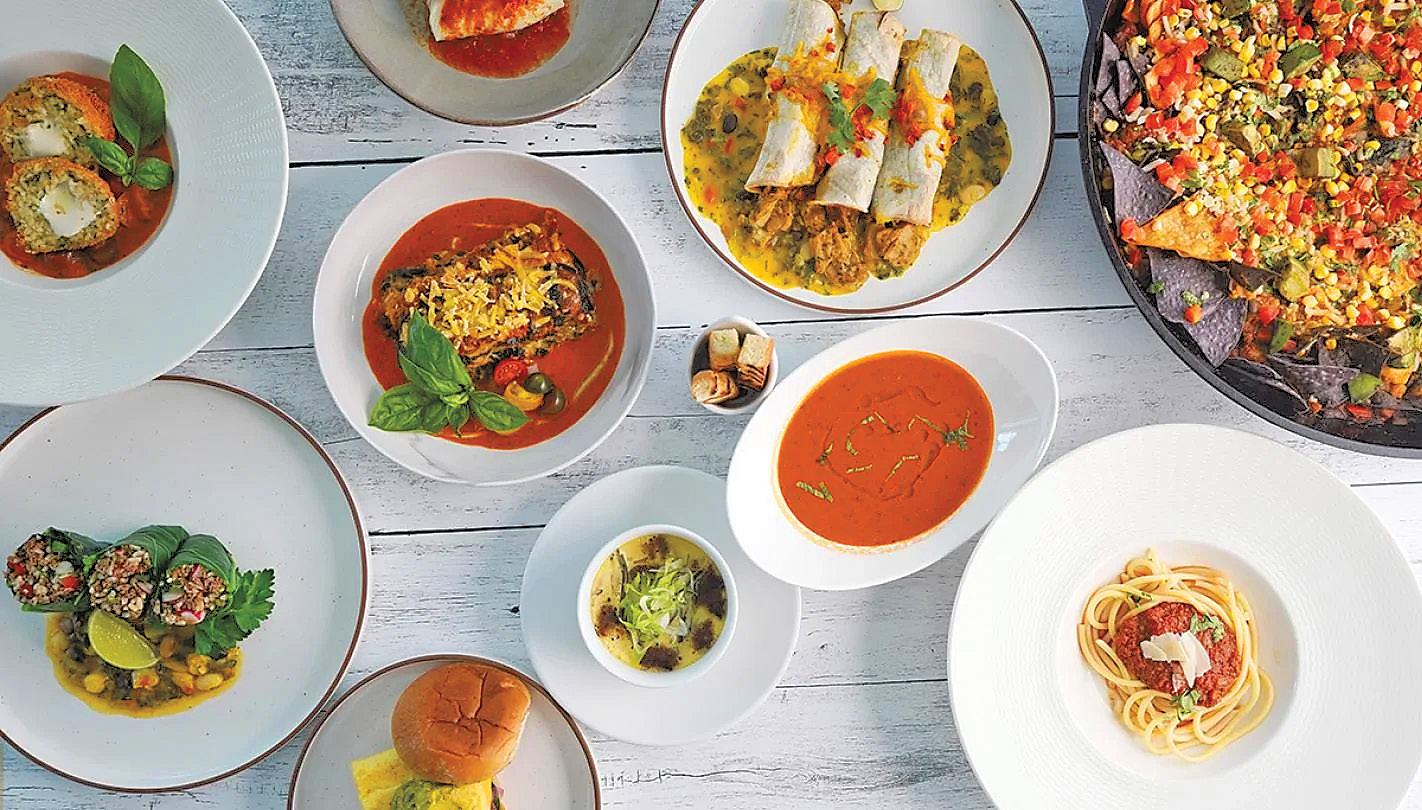
SCOOP heard that Nestlé Professional, Wholesome Crave and The University of Massachusetts Dining Program (UMass Dining) announced the launch of a first-of-its-kind partnership that offers college and university foodservice operators turn-key tips, fullydeveloped recipes and workshops, and collaboration to help speed the introduction of more sustainable, delicious plant-forward offerings on campus menus. The Purpose-Driven Plant-Based Incubator™ was developed in collaboration with four-time James Beard Award Winner Chef Michel Nischan of Wholesome Crave and the culinary team at the University
of Massachusetts, Amherst, the number one U.S. college dining program for six years running according to the Princeton Review.
For 2023, more than 12 other universities have signed up to participate with the Incubator, including the University of Minnesota Duluth, Kent State University, Vanderbilt University, the University of California, Santa Barbara, Montreal’s Concordia University and the University of Wisconsin-Madison. With the current launch partners, the program has the ability to impact over 500,000 student meals a day.
“At Nestlé Professional, we’re committed to helping our partners address the new realities of the foodservice landscape. This Purpose-Driven Plant-Based Incubator™ does just that – it showcases plant-forward recipes while providing guidance on how to reduce operators’ and students’ carbon footprints,” said Perry Miele, president and CEO of Nestlé Professional. “In addition to the Playbook we’re offering, the Incubator program will include hands-on workshops and collaboration to help partners customize their own journey, no matter if they’re a small college with a single dining hall or an entire university system with dozens of foodservice venues.”
The new Incubator, modeled after the UMass Dining plant-forward menu program, was created in response to foodservice providers reporting increased demand for a wider variety of globally inspired, flavor-driven, plant-forward options. The program addresses how best to develop flavorful plant-forward recipes, streamline dish preparation, introduce cooking techniques that enhance flavor, work within budget constraints and simplify operational challenges. There is also the ability to inform students and operators about the emissions footprint of their meal via on-menu carbon labeling. The Incubator is intended to be a space to share insight and knowledge amongst existing and new partners, and to ideate and test new opportunities, recipes and approaches to successfully accelerate the adoption of more plant-based options.
“The Plant-Based Incubator aligns our partners’ shared values to
continued on page 98

make delicious, plant-forward menu options affordable and doable, while leveraging the power of food to make the world a better place for everyone,” said Chef Michel Nischan, founder of Wholesome Crave. “At Wholesome Crave, we believe that everyone, regardless of race, age, ethnicity, or income has the right to eat delicious, nutritious food. Our support for our non-profit Wholesome Wave, and groundbreaking partnerships like this innovative incubator project make that happen.”
“We are excited to collaborate with the world’s largest food manufacturer, Nestlé Professional, and mission driven organization, Wholesome Crave, which ties together the strategic vision of UMass Dining to create a better world. Studies done at the UMass Dining Living Laboratory® find that Gen Z students increase consumption of plant forward ingredients when incorporated with authentic global recipes,” said Ken Toong, Executive Director of Auxiliary Enterprises at the University of Massachusetts, Amherst. “This latest initiative demonstrates how we can continue to use our culinary expertise and state of the art facilities to drive our industry by inspiring students to enjoy a plant forward diet now and into the future.”
“Students, faculty and staff have been asking for more plant-forward options, so we are thrilled to bring them delicious new menu offerings created in collaboration with James Beard award-winning Chef Michel Nischan and our partners at Nestlé Professional,” said Jeff Weissinger, Assistant Director of Residential Operations at Vanderbilt University. “We prioritize serving a wide variety of nourishing food to our diners and responding to their feedback, so we can’t wait to be one of the first universities to participate in this groundbreaking Purpose-Driven PlantBased Incubator. We think the program has the potential to drive scaled change in foodservice across the country.”
Other organizations interested in learning more can reach out to a Nestlé Professional chef at https:// www.nestleprofessional.us/purpose-driven-plantbased-incubator
SCOOP learned that U.S. agriculture officials proposed new nutrition standards for school meals, including the first limits on added sugars, with a focus on sweetened foods such as cereals, yogurt, flavored milk, and breakfast pastries.
The plan announced by Agriculture Secretary Tom Vilsack also seeks to significantly decrease sodium in the meals served to the nation’s schoolkids by 2029,
while making the rules for foods made with whole grains more flexible.
“The goal is to improve nutrition and align with U.S. dietary guidelines in the program that serves breakfast to more than 15 million children and lunch to nearly 30 million children every day,” Vilsack said.
The first limits on added sugars would be required in the 2025-2026 school year, starting with high-sugar foods such as sweetened cereals, yogurts, and flavored milks.
Under the plan, for instance, an 8-ounce container of chocolate milk could contain no more than 10 grams of sugar. Some popular flavored milks now contain twice that amount. The plan also limits sugary grain desserts, such as muffins or doughnuts, to no more than twice a week at breakfast. By the fall of 2027, added sugars in school meals would be limited to less than 10 percent of the total calories per week for breakfasts and lunches.
The proposal also would reduce sodium in school meals by 30 percent by the fall of 2029. They would gradually be reduced to align with federal guidelines, which recommend Americans aged 14 and older limit sodium to about 2,300 milligrams a day, with less for younger children.
Levels would drop, for instance, from an average of about 1,280 milligrams of sodium allowed now per lunch for kids in grades 9 to 12 to about 935 milligrams. For comparison, a typical turkey sandwich with mustard and cheese might contain 1,500 milligrams of sodium.
Health experts say cutting back on sugar and salt can help decrease the risk of disease in kids, including obesity, diabetes, high blood pressure, and other problems that often continue into adulthood.

The plan, detailed in a 280-page document, drew mixed reactions. Katie Wilson, executive director of the Urban School Food Alliance, said the changes are “necessary to help America’s children lead healthier lives.’’
Vilsack emphasized that the plan phases changes in over the next six years to allow schools and food manufacturers time to adjust to the new standards. He said in a recent press conference that the USDA
will also fund grants of up to $150,000 to help small and rural schools make the changes.

SCOOP learned that The Culinary Institute of America has appointed Bill Reidy vice president of Advancement. In this role, Reidy will spearhead the college’s philanthropic initiatives, helping to ensure that the college continues to provide a worldclass education for the future leaders of the food, beverage, and hospitality industries. He will also oversee the college’s alumni office. Reidy brings nearly a quarter of a century of experience leading successful advancement initiatives for institutions, including Sacred Heart University, the non-profit Come to Believe, and New York’s Xavier High School.
SCOOP learned that Galley Group recently announced that the food hall development and management company is now accepting applications from entrepreneurial chefs in the Pittsburgh, PA and Newport, KY markets for the opportunity to launch their own restaurant concepts within Federal Galley, Galley Bakery Square, and the upcoming Galley on the Levee locations.
Since its debut in 2015, the food hall development and management company has provided dozens of chefs the resources to build thriving restaurant concepts within the walls of the Galley Group with minimal upfront cost, maximum brand exposure and dedicated ongoing support.
Chefs with a culinary background who are creative, driven and innovative, and who are ready to launch
continued on page 100
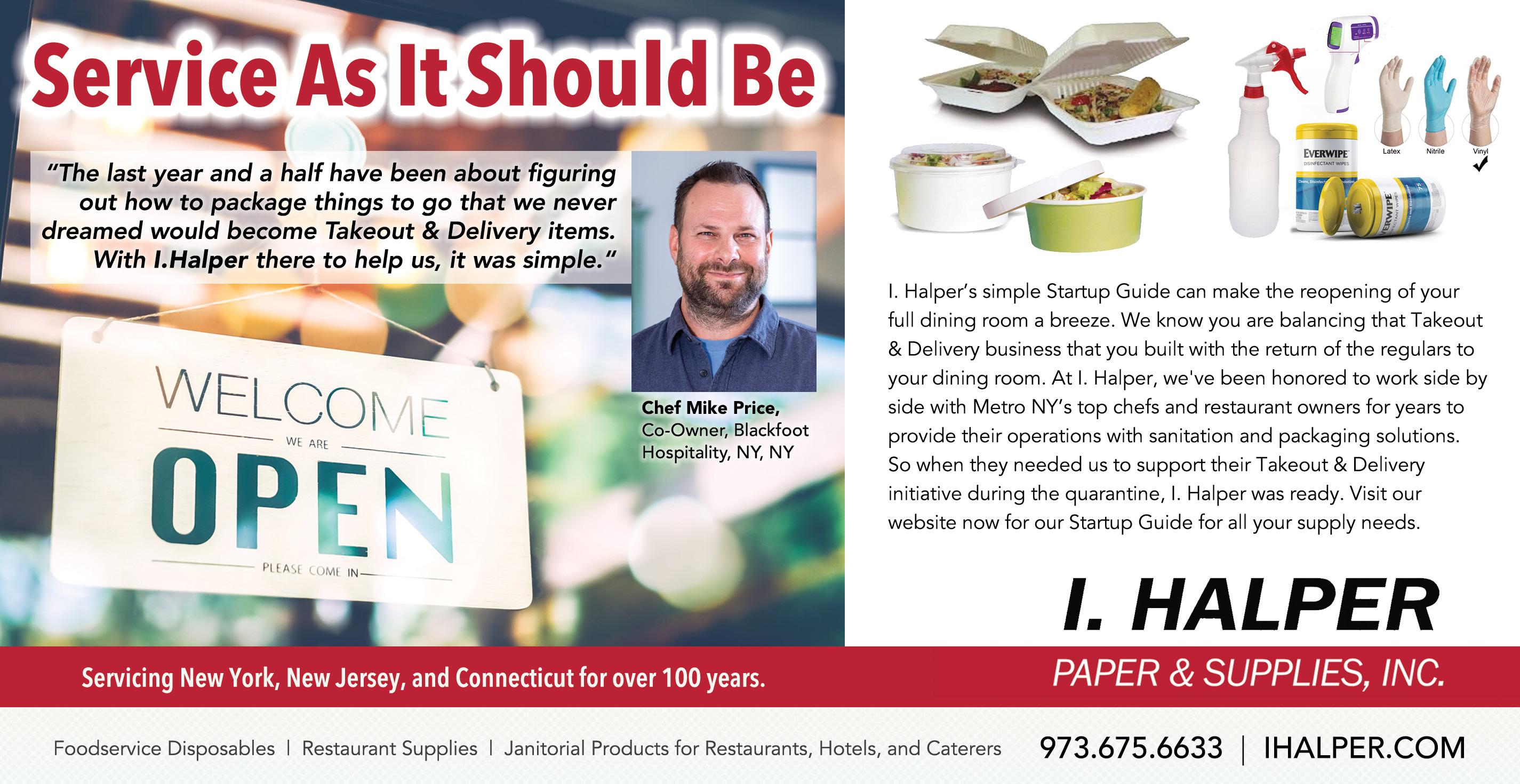
and hone their own restaurant concept, are encouraged to apply by emailing press@galleygrp.com. Interested chef applicants must include a professional resume, restaurant concept description, sample menus and pricing for brunch, lunch and dinner services, and branding materials, such as a logo.
Each Galley location features four chef-driven restaurant concepts with fully built out kitchens, a full bar with an expansive beverage menu, and firstcome, first-served communal seating for guests. Galley Group features three locations across the country, including Federal Galley and Galley Bakery Square in Pittsburgh and North Loop Galley in Minneapolis. The brand’s fourth location, Galley on the Levee, is set to open in Newport, KY in Summer 2023.
The Galley on the Levee will follow a similar blueprint to Galley Group’s other food halls and feature four restaurants and a signature bar. Drawing inspiration from its successful track record, the group anticipates incorporating flavors including American, Asian, Italian, and Mexican, but is open to new concepts from local chefs to determine the best mix for the neighborhood. The bar will be operated by Galley Group and serve local craft and domestic beers, craft cocktails and select wines.
SCOOP is sharing that applications for the 20232024 James Beard Foundation Scholarships are open til March 31, 2023. This year they’re accepting applications for several scholarships, tuition waivers, and grant opportunities. Scholarships include the Debbie Lewis Women in Wine; The JBF Caviar Chefs of Tomorrow Scholarship Fund; The JBF Mondelēz International Scholarship Fund for Equity in Leadership; Andrew Zimmern Second Chance Scholarship; JBF National Scholars Scholarship and The JBF Visit San Antonio Culinaria Scholarship Fund.
To learn more about the program, full list of scholarships and application process, visit jamesbeard. org/scholarships. All scholarship application materials must be submitted by March 31, 2023.
SCOOP also heard that JBF announced the six recipients of its 2023 America’s Classics Award. A Restaurant and Chef Awards category, the America’s Classics Award is given to locally owned restaurants that have timeless appeal and are beloved regionally
for quality food that reflects the character of its community.
This year’s honorees join the ranks of more than 100 restaurants across the country that have received the Award since the category was introduced in 1998. They will be celebrated at the James Beard Restaurant and Chef Awards ceremony on Monday, June 5, 2023 at the Lyric Opera of Chicago.
The 2023 James Beard Foundation America’s Classics Award winners are:
• Texas Region--Joe’s Bakery & Coffee Shop, Austin, Texas. Owner: Paula Avila
• South Region--La Casita Blanca, San Juan, Puerto Rico. Owners: Jesús Pérez Ruiz, Mildred De León, Leonardo Pérez De León, Jesús Pérez De León
• Pacific and Northwest Region--Manago Hotel, Captain Cook, Hawaii. Owners: Britney and Taryn Manago
• Northeast Region--Nezinscot Farm, Turner, Maine. Owner: Gloria and Gregg Varney
• Mountain Region--Pekin Noodle Parlor, Butte, Montana. Owner: Jerry Tam
• Great Lakes Region--Wagner’s Village Inn, Oldenburg, Indiana. Owner: Dan Saccomando
SCOOP heard that the first Top Chef Canada winner and AAA Five Diamond Award winning Chef Dale MacKay is gearing up for a huge 2023 as he competes in the upcoming new season of Bravo’s Top Chef: World All-Stars premiering on Thursday, March 9th. Padma Lakshmi, Tom Colicchio, and Gail Simmons will be back hosting Season 20 of the Emmy, James Beard and Critics’ Choice Award-winning series which will feature 16 winners and finalists from 11 different Top Chef versions around the world competing for the ultimate World All-Stars title. This time the chefs will return to the kitchen to battle it out throughout London before moving on to the grand finale in Paris. This epic showdown marks the
first time the flagship edition of Top Chef has gone abroad for an entire season.
ATLANTA:
Chef Marcus Samuelsson will be opening Marcus Bar and Grill in the former Adele’ space next door to Biggerstaff Brewing Company this Spring.
The Ritz-Carlton, Boston has announced that Jim Lyons has been promoted to executive chef. In this role, Lyons will oversee all the hotel’s food and beverage programming, including menu creation and execution for meetings and events, fundraising galas, and weddings. Lyons previously served the property as executive sous chef starting in 2021, when the hotel resumed operations following closure from the pandemic.
- Rich Vellante, has moved from the Boston-based chain Legal Sea Foods, and is now chief culinary officer of that city’s Broadway Hospitality Group.

Marché Bacchus has announced that James Beard Award-Winning Chef Bradley Ogden has joined the team as its Culinary Director. Awarded Chef of the Year by the Culinary Institute, Restaurant of the Year and Best California Chef by the James Beard Foundation, Chef Bradley will bring his talents to the northwest part of the Valley.
- El Fish Marisqueria is the latest venture from Chef Julian Medina and Restaurateur Louis Skibar. The expansive menu focuses on local seafood with a Mexican flair, bringing a unique, family-friendly offering to the Upper West Side neighborhood. The bar program was developed by Gustavo Zamora, El Fish Marisqueria’s Bar Manager, who was previously the Head Bartender at AtlaNYC, Cosme’s sister bar.
- April Bloomfield will be returning to the city’s restaurant scene with restaurateur Gabriel Stulman to open a Fort Greene restaurant.
- The chef behind two-Michelin-starred Korean restaurant Atomix, chef Junghyun “JP” Park will be teaming up with the Korean restaurant group Hand Hospitality to open Seoul Salon this spring in the former home of Starry Night, a late-night Korean restaurant known for its karaoke.
- Stratis Morfogen’s Pappas Taverna has opened on Bleecker Street with executive chef and partner Chef Todd English.
- The city’s Parks Department hopes to award a 10-
continued on page 102


year lease at the Loeb Boathouse to Legends Hospitality — backed by Yankees Global Enterprises; Dallas Cowboys owner Jerry Jones; and an investment firm with ties to Airbnb, Spotify, and Credit Suisse — which also oversees concessions at Yankee Stadium. The proposed contract still needs approval, but Legends would oversee the restaurant, snack bar, and rowboat rental venue at the boathouse with menus that list $23 mushroom toast and a $25 burger.
- Daniel Boulud has a new location for Cafe Boulud, it will reopen in the former Vaucluse space, that had been a Michael White restaurant. He’s also opening a 16,000 square-foot French steakhouse and marketplace. The private club Casa Tua will take over the former Cafe Boulud space.

experience in fine dining and sports entertainment hospitality to what will soon become Miami Beach’s most talked-about venues.
-Award-winning chef and restaurateur Tom Aviv brings Branja to Miami’s Upper Buena Vista. Dishes reflective of Aviv’s Israeli background will be on the menu. Since he became a household name after winning MasterChef Israel in 2016, he has launched multiple unique restaurant concepts in Israel and Morocco. His launch of Coco Bambino, located in Tel Aviv’s popular Carmel Market, was an immediate success thanks to its Israeli dishes with an Italian twist.
Jester Concepts has brought the highly acclaimed, award-winning Butcher & the Boar back to life in a new location in the North Loop with Executive Chef, Mike DeCamp and Chef de Cuisine, Ian Gray. Expect continued legacy, smoked meats, one of the most extensive collections of bourbon, craft cocktails and unparalleled hospitality. Like all Jester Concepts, the restaurant houses multiple concepts under one roof; Butcher & the Boar’s main bar, dining room and private events spaces, the playful and progressive cocktail lounge know as the Char Bar, and a forthcoming
version of the beer garden.
Kura, the Japanese chain featuring conveyor belt sushi, with 44 locations around the U.S., has opened in Fort Lee and Jersey City. This fast-food franchise is as automated as it gets, with customers joining a waiting line electronically just outside the front door; orders for other Japanese food like noodles, soups, and tempura are placed via a touch screen once you are seated; and a robot named KuraB the Kurabot delivers beverages. Plans are in the works for a location in Flushing, NY.
-JBJ’s Soul Kitchen has opened in Jersey City on the campus of New Jersey City University. It’s the second campus location following one at Rutgers University Newark that opened last year. This is the fourth location of Jersey rocker Jon Bon Jovi. The restaurants are run by Jovi’s nonprofit established in 2006; there are no prices on the menus at any locations. At the Jersey City outpost, visitors are asked to contribute $12 for an appetizer such as cucumber salad or Caribbean corn soup or a main like seared salmon or stewed chicken.
-Chef Freddy Vargas leads the kitchen at Richard Banson’s new Virgin Hotels NYC.
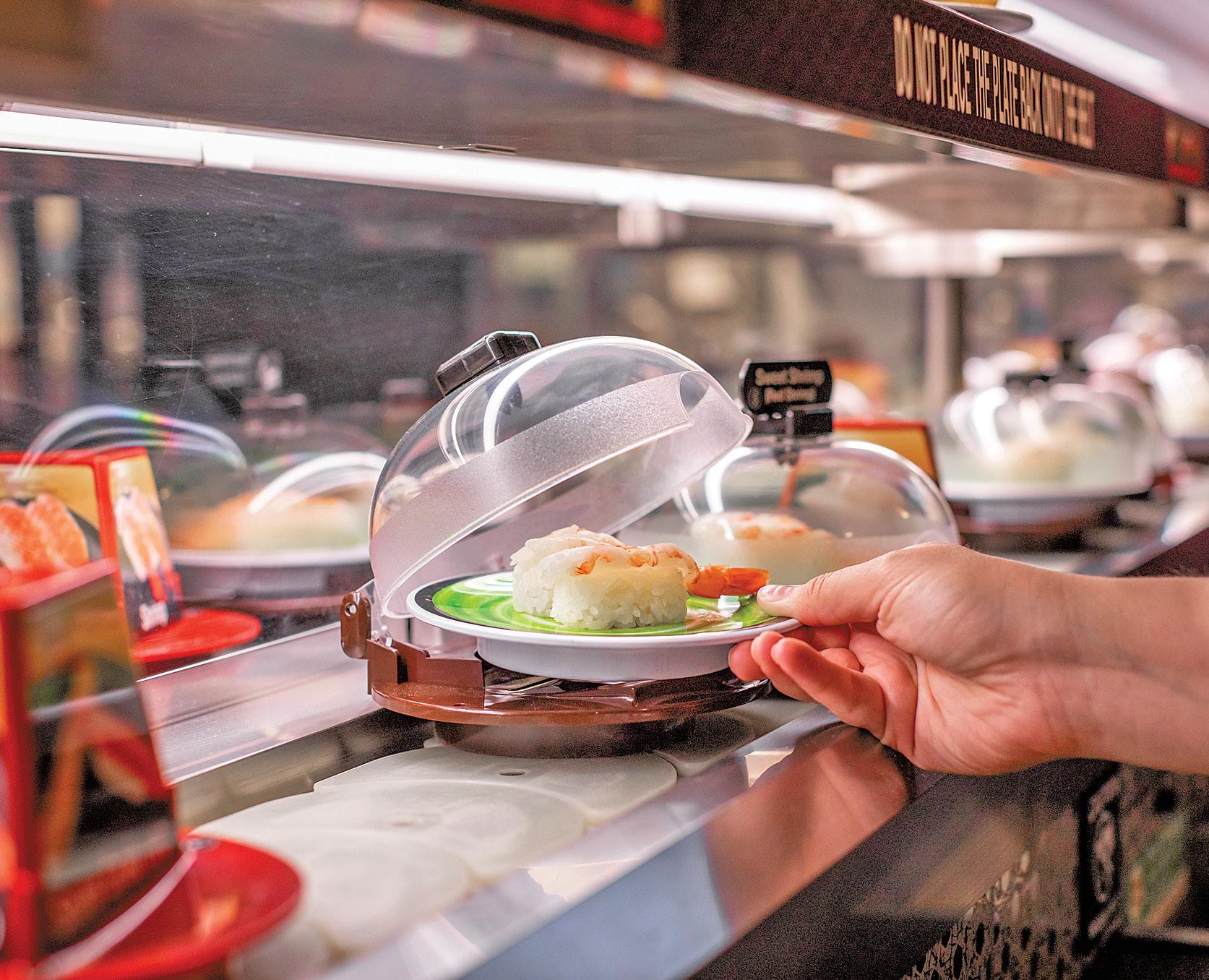
-Jennifer Vitagliano the co-owner of The Musket Room has opened Raf’s in a nearby space with the same chefs, Mary Attea on the savory side and Camari Mick for the sweets.
-Quality Branded latest restaurant Bad Roman replaces Landmarc at the Shops at Columbus Circle with the menu overseen by Executive Chef Nick Gaube and Chef de Cuisine Fernando Mayers.
MIAMI:
The Miami Beach Convention Center (MBCC) named Samantha Cruz as Executive Chef of Rum Room and Venu, Sodexo Live! As executive chef of these concepts, both located in the 1916-built historic Clubhouse, Chef Cruz will bring 12 years of
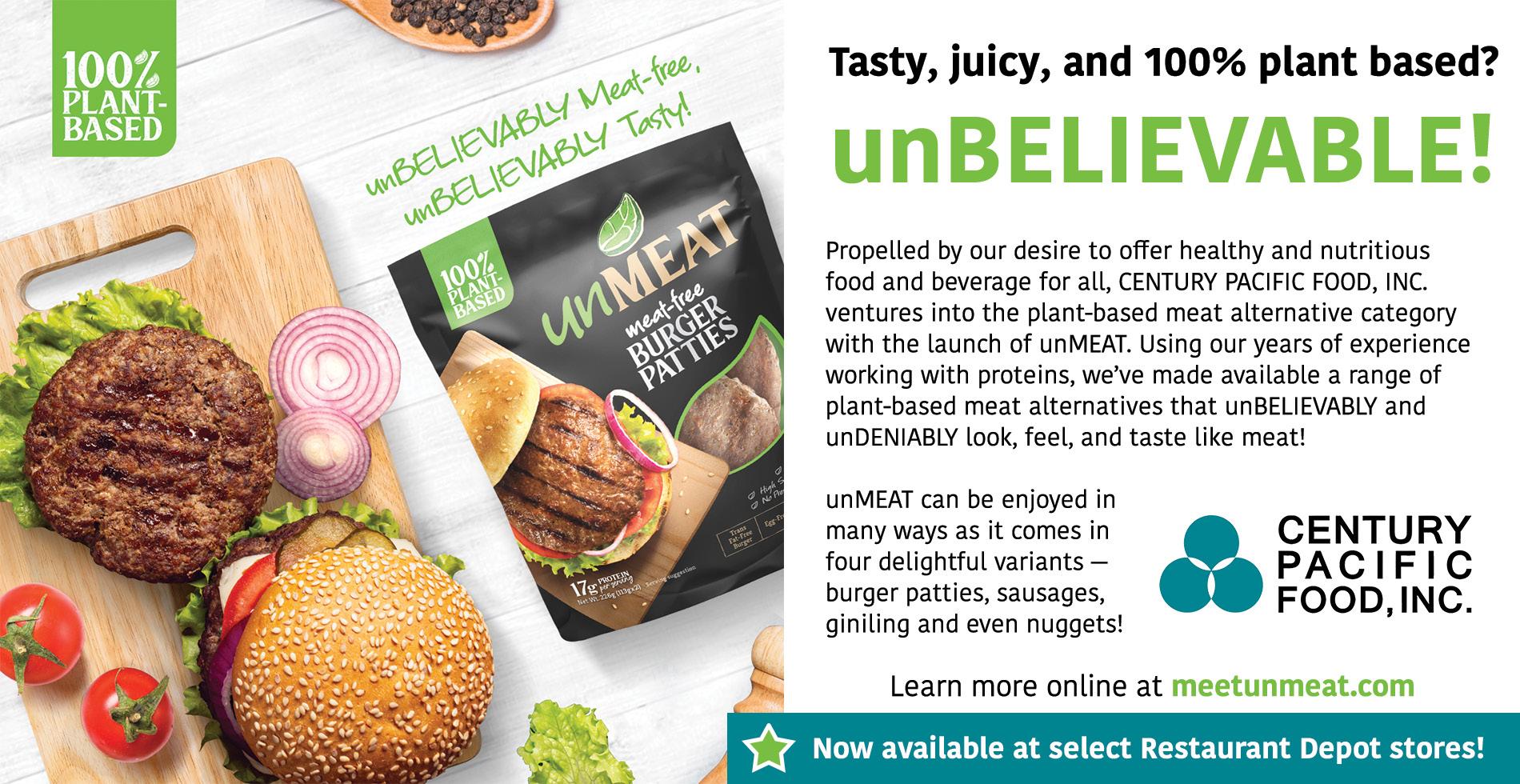

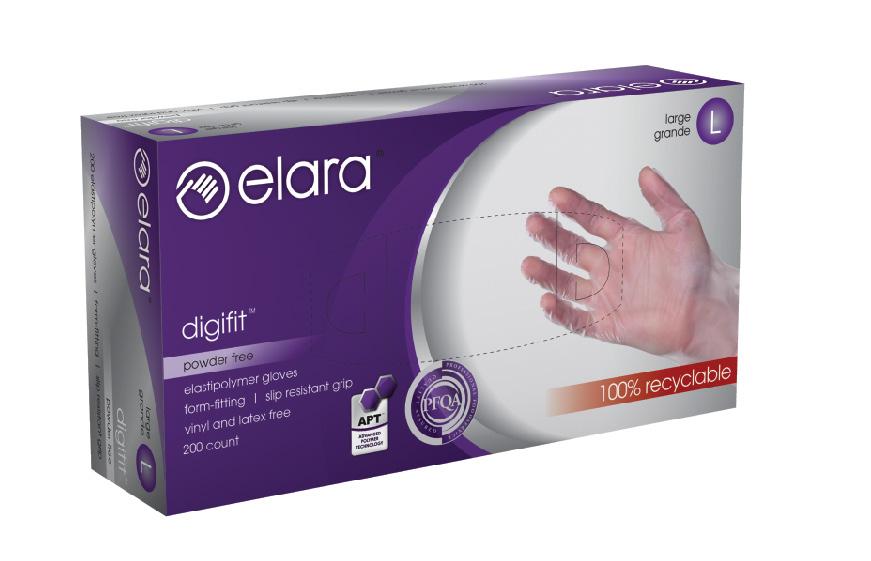
lars wines as being the leader in quality wines that are certified Kosher.”
He continues, “The selection of kosher wines from around the world is constantly expanding, with new wines this pre-Passover season alone from New Zealand, South Africa, Israel, and France. The quality is on a constant rise, and so is the number of grape varieties kosher wines are made of. Israel, nicknamed the start-up nation, has even managed to get its wine industry on the world map with innovative wineries such as Nana Estate, located in the Negev desert. Nana has pioneered revolutionary viticultural practices to grow quality grapevines in an arid desert climate. It has become a source of inspiration to wineries worldwide and the agricultural industry as everyone is now looking for solutions to address the growing challenges posed by global climate change.”
Being able to tell that new to market story and hit a customer’s value system simultaneously is a boon for any bar or restaurant looking to ramp up a potential clientele base and build guest loyalty. While Geller notes that it is important that the wine is judged on its quality and value, not on its kosher status, he recognizes the value of identifying wines as kosher as he comments, “Restaurants often recognize they may have kosher consumers who are dining with non-kosher clientele and will order that “kosher’ wine on the menu if it indicated. Often, we suggest that a simple k or OU be placed next to the listing. Kosher consumers will recognize it but those that don’t care will simply browse the wines based on the pedigree, price, etc.”
Eric Brass, founder of Tromba, a highly regarded tequila which just happens to bear a kosher certification, notes that the certification isn’t always a necessity for a brand or venue, but it really can help draw business. He explains, “Having kosher offerings allow an account to offer a significant variation of brands to their customers, especial -
ly those who are looking for brands that reflect their beliefs. A reliable kosher brand that is certified gives consumers signs of health, quality, and integrity as well as having a client base of devoted consumers. I wouldn’t say there is a specific profile of accounts that are inclined to take in a product that is kosher, however it can be crucial to doing business for several accounts with specific needs/consumer base and specific areas.”
In those places where it isn’t crucial, it is simply a bonus. One NYCbased bartender who has a strong familiarity with kosher wine and spirits knows that her fellow bartenders are missing out when she said recently that most bartenders would have no idea if a spirit was kosher or not. That’s a shame. And knowledge they should have at hand. It is easy to obtain, and the benefit is obvious; the knowledge and promotion of meeting guest needs can mean an increase in profitability and exposure to a wider swath of potential guests across the board.
Especially in a resort setting. Linelle Wright, Assistant Food and Beverage Manager of Cinko Asian Latino Grill at The Grand Hyatt Baha Mar remarks, “With Grand Hyatt Baha Mar having a kosher restaurant, we have more cultures visiting us than ever before.” She continues to share the tangible impact this new offering has, “Now that we have a kosher restaurant in the restaurant we are experiencing 50% observant Jews [joining us], and during Jewish holidays we have 90% or more, which also increases, our rooms occupancy as well.”
Making someone feel welcome in your space is all it takes. Whether you’re Jewish or not. It is just good business. In New Orleans Second Vine Wines, a Black-owned wineshop and tasting space that is strategically focused on the producers offered, shares the guest philosophy of Baha Mar. They also attribute their ongoing growth in part to a selection of kosher offerings. General Manager Roxy Eve Narvaez
notes, “It is simply representative of access. As a community shop that sells wine, we are intentional about having wines that meet community wants and needs. When they find those wines it’s possible they’ll find a connection that brings them back. That feeds into our sustainability as a business.”
Sustaining a profitable business is every owner’s goal. Maybe calling out your kosher wine and spirits offerings - or at least having some on hand – will build a more robust customer pipeline. And build loyalty. Invest and see.
When Claire Marin founded Catskill Provisions Distillery in Callicoon, NY in 2010 she was a trailblazer in the farm distillery move -
ment as one of only five female distillers in the country. She recently rebranded her products undere the Pollinator Spirits label in homage to the bees in her distillery’s apiaries that provide the honey which is infused in all of the spirits.
The latest offering is Crimson Amaro, an herbaceous spirit inspired by traditional Italian Amari. The base is Pollinator Vodka that is then infused with a secret blend of more than 15 botanicals and naturally colored with Cochineal. Like the rest of the Pollinator Spirits line Crimson Amaro is hand filled, sealed, and labeled and free of artificial flavors, colors and GMO grains.
Bottle photos courtesy of Royal Wine
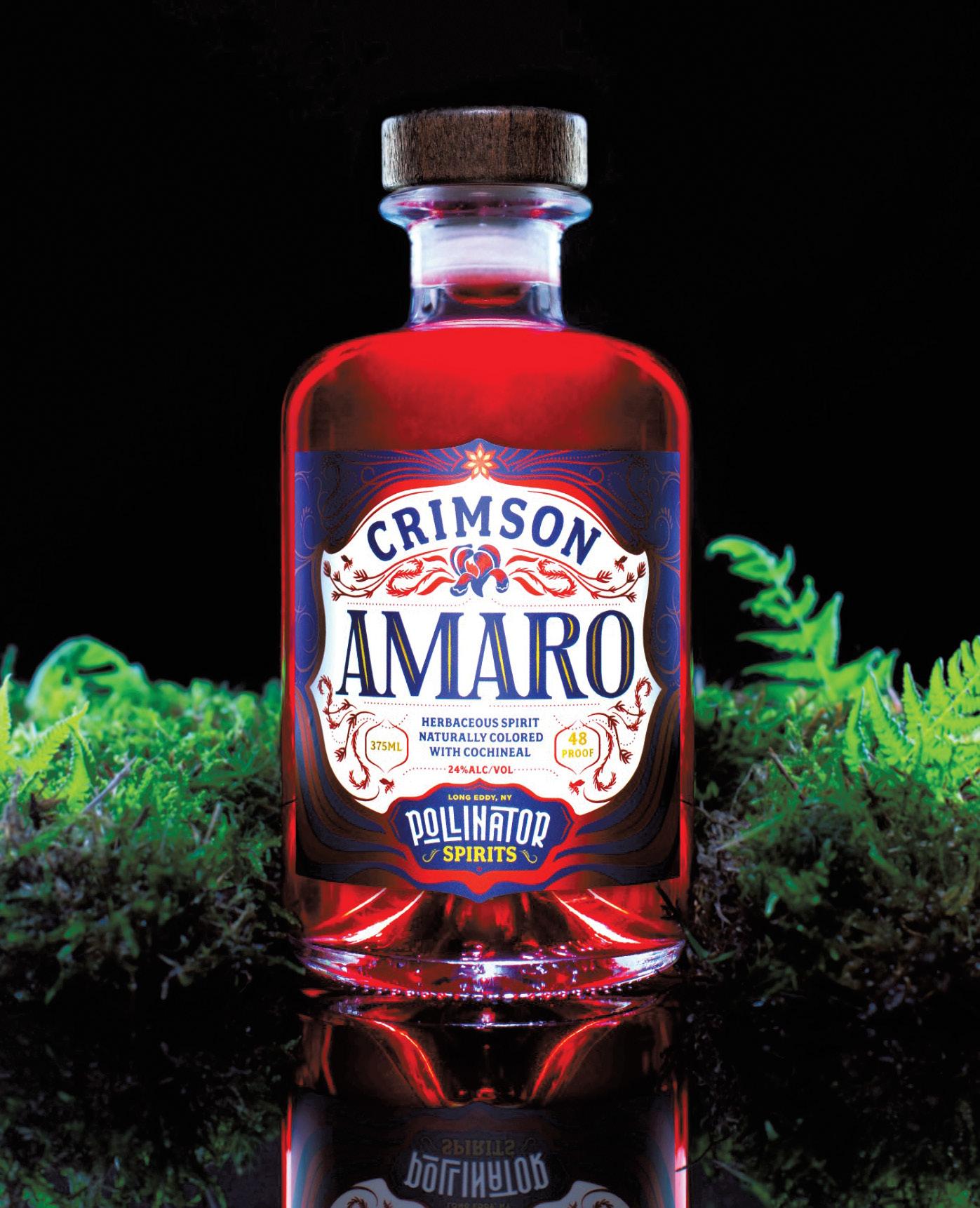

who I am today, showing how important mentorship is in this profession. From there, I spent some time traveling the world, really diving deep into various cuisines and cultures. After traveling, I connected with Danielle Kuhn, the owner of Scratchboard Kitchen. We opened Scratchboard in April of 2020, and have been working hard and thriving ever since!
I’d love to learn more about Scratchboard Kitchen, can you talk me through the concept and what the restaurant specializes in?
Scratchboard Kitchen is a special little haven to come and feel comforted, nourished and welcomed. We have set out to create food that has a nostalgic, indulgent yet feel good spirit, while focusing on seasonality and farm fresh flavors. We have also created a comfortable and fresh atmosphere, unique cocktails and lattes.
Our mission for food and beverage is using local and high-quality ingredients, so that you can feel good from the inside out when you dine with us. This restaurant is truly a labor of love and care, so much soul has gone into our restaurant and it is a truly unique spot in our community.
Scratchboard Kitchen opened at the beginning of the COVID-19 pandemic. Can you share how you successfully launched a new restaurant during this challenging time? What were some of the biggest challenges that you had to overcome?
Opening a restaurant is incredibly scary. Match that with opening a restaurant during an unprecedented time in the world, and that is even more frightening! The first two or so years of our restaurant operations were filled with an intense need to be flexible because the regulations were changing daily. In the first year, it felt as if we re-opened the space multiple times simply shifting from a full take out model, to a hybrid take out/dine in, back to take out, etc. We were simply rolling with the punches and doing what we had to do not only to be successful but to service our
community. In our minds, the most important thing we were doing was providing comfort to the community. In that first year, while operating the restaurant and providing comfort for the community we also fed countless front-line workers, homeless shelters and those in need. With that, I believe our success came from our ability to be flexible. We adjusted our concept countless times, rolled out nightly dinners and lunch specials and did things out of the norm to make sure we would achieve our goals that first year. The most challenging part of opening a restaurant during Covid would have to be ensuring that our staff and guests felt safe. The reason we do what we do in restaurants is to make others happy, and provide an unforgettable experience. Doing this during a time where we didn’t know what the next day would hold, was extra challenging but forced us to hone in on our current skills and become even better leaders under this pressure.
What are some lessons learned from previous roles that helped prepare you for becoming an executive chef? How did these lessons shape how you lead Scratchboard Kitchen?
Scratchboard Kitchen is my first restaurant as an executive chef, so like any other job where you are ‘promoted’ there are new skills to learn. Adapting to this bigger role during an uncertain time in the world made it even that much more challenging. I am a goal oriented person, and am driven by challenges, so I was ready for this next step in my career.
During my time with Chef Keller, I was a sous chef at one of his restaurants. My boss and mentor at this restaurant, Chef Matt Alba, prepared me for this role more than I knew at the time. The leadership skills Chef Alba instilled in me matched with the life lessons he taught me while working under him, resonated with me years later when I took the helm at Scratchboard. I think the most important part about being an executive chef, is not about the actual cooking, but about the ability to lead and delegate
with respect. It’s about treating every single human that works with you as a dignified employee, and as equally important members of the team. As Chef Alba taught me, anybody can cook, it’s the other skills that take you a step further.
Can you share the inspiration and process of crafting new dishes that reflect each season?
My inspiration comes not only from the seasons, but a lot of it comes through nostalgia. I look for what evokes feelings and memories, while making the dinner feel fulfilled and magical at the same time. After being involved in fine dining, I also realized my style is a bit more rustic, and my mission is to just make the tastiest food while upholding that finesse I learned in those Michelin starred kitchens. If I can put a smile on your face through my food, I will sleep happy.
Tell us about how you source ingredients for the menu. Who are you partnered with and how do you maintain these relationships?
I first start with the local farms. Being trained and having worked in California the majority of my career, purchasing from farms was just the norm. Coming to Chicago, this practice is a little less common, and rightfully so with the lack of year round supply from the farms because of the winter seasons. With that, it is my goal to purchase as much as I can and as often as I can from the farms, despite the cold months. I also try to pickle and preserve items during the summer months to get us through the winter. For example, my current grilled cheese contains a blueberry spread that I preserved using the Japanese umeboshi preservation technique. This is a salt preservation method, so it makes the berries a perfect match for the inside of a grilled cheese.
I maintain my farm relations through having a first name relationship with the farmers and keeping open communication with them. After sourcing from the farms, I then
look for quality. I search for the highest quality ingredients. I truly believe a quality ingredient makes a difference in the final product.
With all of the challenges many other restaurants are facing (tied to staff shortages, supply chain disruptions, inflation etc.), can you tell us how Scratchboard Kitchen manages to overcome these challenges?
There will always be challenges in a restaurant, no matter when we are open or what illness is being spread. This was something I was taught early on in my career. Part of our job is to meet the next challenge with a great attitude and use our leadership skills to help the team through to the next set of challenges. With that, the most recent and most difficult challenges for us has been the staffing shortages. As a leader, I know that when this occurs it is my job to step into those roles that need to be filled. Right now, I am working a station online while expediting and running the kitchen in order to make sure our operations are up to par. As leaders, we do what is needed to make it to the next day.
As for inflation, this is something that every restaurant is experiencing, and it is obviously challenging. Having to continuously raise prices is not something any restaurant wants to do, but at some point, it is something we have to do. With this, it is all about flexibility again. Learning to adapt your dishes and tweak a little here and there, will be the best thing to do.
Danielle (Scratchboard’s owner) and I are both goal oriented and driven people. We have ongoing conversations on what is next and how to make that happen. Right now we are working to get Scratchboard in a comfortable place to make our next set of dreams come true.
As for the immediate future, we are starting dinner service next month, and I cannot wait to share more of my cuisine with the community! Also, catch me compete on Beat Bobby Flay on The Food Network.


cheaper than that, expect to end up in the $2000-$6000 range.
If a $6,000 specialty ice machine isn’t in your budget, don’t give up just yet! Renting the ice machine instead of buying it can make your specialty ice goal a reality. Many business owners who already own a standard ice machine find that renting a specialty ice machine makes more sense than forking over the money to purchase instead. Renting is not only easier on the wallet, it also provides flexibility. If, after a year or two, the specialty ice proves to be less popular than you hoped, simply terminate the rental agreement without feeling like you wasted several thousand dollars on a machine you’ll no longer use.
All-inclusive ice machine subscriptions are both the most cost-effective and the most convenient way to add a specialty ice machine to your back of house. In addition to the ice machine, this kind of rental solution covers professional maintenance, repairs, and emergency backup ice. That spares you from spending a large amount of money upfront and also saves you money on ice machine upkeep over time. If your subscription provider employs technicians with solid ice
machine expertise and keeps a diligent maintenance schedule, you won’t have to worry about your specialty ice machine failing on you frequently or wonder if it’s being well-cared for.
Competition is fierce in the restaurant and bar industry. Setting your business apart takes creativity. Why not make one of the simplest moves toward distinction and add specialty ice to your alcoholic beverages? It’s easy with an all-inclusive ice machine subscription.

John Mahlmeister is the chief operating officer and co-founder of Easy Ice. Co-headquartered in Phoenix, AZ and Marquette, MI, Easy Ice is the national leader in the full-service ice machine subscription industry with warehouse and distribution facilities in Chicago, Dallas, Kansas City, Orlando, and Denver. Since its founding in 2009, Easy Ice has rapidly grown the number of ice machines under management to over 30,000 units across 47 states. The Easy Ice commercial ice machine subscription programs include installation, cleaning, preventive maintenance, repairs, and backup ice. For more information, please visit EasyIce.com.
from page 60
Digital delivery will lead to greater engagement especially with Millennials and Gen Z employees compared to handing them a stack of booklets and manuals.
Some operators may consider offering training selectively based on an employee’s position, tenure, or pay grade. The truth is that every employee deserves training. The ROI comes with staff retention, better performance, and improved morale that extends to recruiting. Even with dramatic increases in minimum wage, research shows that the key to keeping great team members is a combination of compensation, culture, and opportunities for growth.
Keep in mind that there are laws that dictate mandatory training for how cleaning chemicals are handled. Your chemical supplier can assist you with compliance. There are increasing instances of food allergies and everyone on your staff that prepares or serves food needs to have a basic understanding of what can make people sick how to ask the right questions.
Because restaurants are busy public places, emergencies happen. Having a First Aid Captain for every shift that has been trained in the basics of CPR and the Heimlich maneuver is wise. Emergency drills will help the team members know what to do if there is a health or safety crisis.
Encourage staff to be aware of hazards and correct them before an accident can occur. This includes boxes that are stacked too high, trip hazards, water on the floor, or equipment that is not working properly.
A renewed focus on sustainability creates another training topic. If your restaurant has sustainability initiatives, focus your education on “why” and “how” rather than simply “what.” This will help team members comprehend why certain products or processes are used and how
it will benefit the triple bottom line of planet, people, and profit. Give your team the opportunity to get involved in sustainability efforts. They will likely share those initiatives with customers and even potential employees who’s values algin with yours.
At Imperial Dade, our goal is to help our customers simplify the training process. There are several ways that we can help. The Imperial Dade Cleaning Institute offers both in person and virtual programs that range from general cleaning to floor care. The IDCI features certified training professionals across the country that provide programs specifically tailored for customers’ needs. We have also partnered with outside professionals to offer food safety training. We are excited about an upcoming complimentary food safety webinar that will be presented this spring with Chef Robert McKeon.
Our HyProtection Zone Program addresses high-touch surface disinfection and hand hygiene strategies. This is a turnkey program for FOH staff who are now often tasked with cleaning.
We provide complimentary training for customers that are working with 3-compartment sinks and automated dish machines on the proper use of the chemicals that are involved in dish and ware washing.
Imperial Dade also has a comprehensive YouTube channel with 400 short videos. These videos address everything from how to mop a restroom floor to troubleshooting a dish machine. The channel is available to the public.
We are here to help with your training initiatives. Contact your local Imperial Dade location or visit our website at imperialdade. com to schedule a complimentary consultation.
The key to keeping great team members is a combination of compensation, culture, and opportunities for growth.
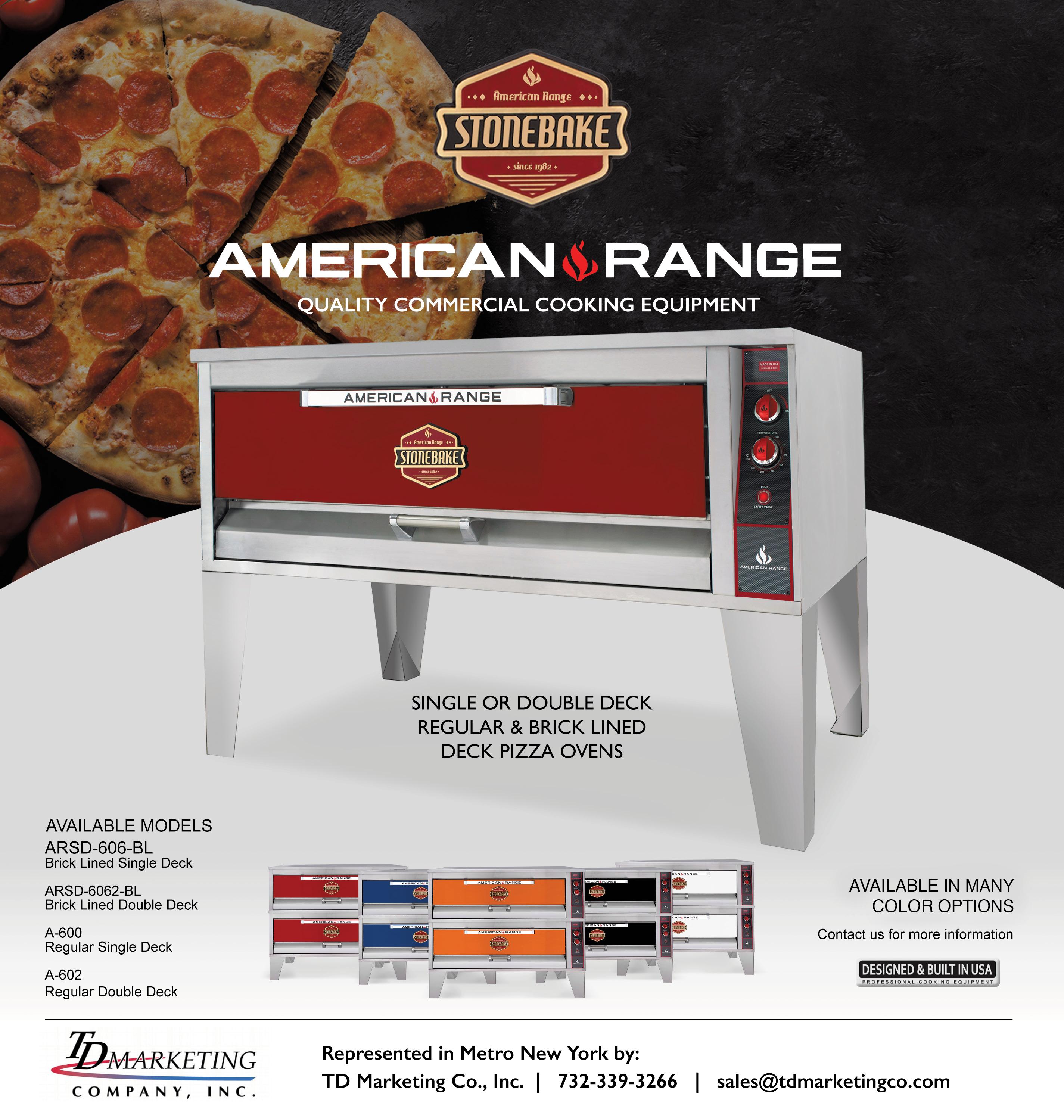
from page 8 IRFSNY 2023
cation for restaurants, foodservice, specialty beverage and café owners.
You have a big advantage in that you operate shows in Florida and California as well. What are you seeing as key national issues for your attendees and the vendors that support them?
Our education program is focused on the most important topics, including the labor shortage, technology trends, experiential dining, menu efficiency, and so much more. We partner with NYSRA to address local challenges and we work with leading national organizations including the National Restaurant Association, the Plant Based Foods Association, Monday Campaigns, Bacardi Center of Excellence, Restaurant Strategy Podcast as well as the California Restaurant Association and the Florida Restaurant & Lodging Association to keep our finger on the pulse of the most important national issues to address with the most highly regarded speakers.
O ne of the big changes in our industry has been the growth of Takeout & Delivery through the Pandemic. How can this show help the attendees continue to build that segment while welcoming back the in-restaurant patron?
Operators are looking for a range of products from technology to take out containers to serve their customers in the food to go space, and the show provides opportunities to discover those products. Our education program has several informative marketing and technology sessions that will offer solutions on the growth of takeout and delivery and bringing back in-person customers including Boosting Catering Sales, 2023 Food and Beverage Trends to Prepare For the Future, Thriving in an Increasingly Complex and Challenging Restaurant Industry, Social Media Moves to Get Guests to Spend More, Designing Restaurant Wine Programs, and The Future of Hospitality.
The food side has seen a number
of trends including the growth of plant-based foods. Can you share how the show floor will offer new menu ideas?
We know a main reason our attendees visit the show is to see new food products and we are thrilled that we will be highlighting many new plantbased options as well as so many other categories including produce, meats, gelato, bakery items, cheeses, starches, sauces, gourmet items, and much more. We also will be offering sessions on Plant-Based All Over The Place, How Healthy Options Are No Longer a Trend But a Necessity, and The Plant Based Foods Association will present How To Integrate PlantBased Foods Into a Menu. Our RapidFire Competition will focus on Meatless Monday Single Skillet. Chefs are invited to bring their favorite dishes minus the meat that is made in one pan to showcase the benefits including controlling the cooking process, the speed in cooking, and the savings on current labor shortage.
Please share the highlights of your educational programming.
The newly designed complimentary education program will feature four education areas on the show floor, where non-competing sessions will be offered in a variety of learning formats.
• The How-To Theater will feature instructional presentations on pressing topics including How To … Start a Restaurant, Get People Back to Work, Work with Influencers, Integrate Plant Based Foods, Pass Restaurant Inspections, and more.
• The Business Solutions Stage sessions will focus on marketing and operational topics such as choosing the best technology, food safety, food and beverage trends, legal requirements, and more.
• The Conversation Corner will be a casual gathering place for moderated conversations so attendees can learn from each other, share experiences and hear from experts in an all-new format. Topics will focus on supply chain issues, catering successes, regulatory updates, healthy
food alternatives, DEI, growing beverage program, and more.
• The Center Stage and Restaurant Experience will feature cooking demonstrations and the Hip Sip Bartending and Rapid-Fire culinary competitions. We have several exciting chefs who will be presenting culinary demonstrations and conversations with an international flair including Chef Maria Loi from Greece, Chef Barbara Sibley from Mexico, Chef Renee Blackman from Barbados, and Chef Michelle Bernstein from Latin America. Conversations will be moderated by our Center Stage Emcee Brian Connors, Director | Bacardi Center of Excellence, Florida International University, Chaplin School of Hospitality & Tourism Management.
• Center Stage will also include a Let’s Talk Womxn Panel, during Chef Sibley’s demonstration, where leading women restaurateurs and entrepreneurs will discuss the importance of collaboration for their businesses. The Raise the Bar panel, preceding the Hip Sip Competition, will offer insight on controlling costs, simplifying menus, and increasing consumer spending through guest experience all playing crucial roles in ensuring a profitable beverage program.
There seems to be this feeling that “I don’t need to go to a show anymore. I can see everything on the internet.” But you can’t taste, touch, test drive, etc. Thoughts?
If the pandemic taught us anything, it’s the importance of bringing people together and staying united to overcome challenging times. Virtual tools helped us stay connected over the past three years, but nothing beats face-to-face meetings. And when it comes to business events like trade shows, meeting face to face with prospects is paramount for attracting and retaining customers. And tradeshows like the International Restaurant & Foodservice Show provide operators with the opportunity to see, taste and compare products that are impossible to do online.
What’s the next step for a manufac-
turer that would like more info on how to exhibit? Any thoughts on an ROI for an exhibitor?
Even in NYC, Tradeshows remain the most cost and time efficient way to meet with buyers hands down. Even if you could get an appointment to visit all the buyers who will be attending the Show, imagine the time and costs associated with visiting each one, one by one. This is a oncea-year opportunity to drive sales in the NY tri-state area.
What does that audience look like?
• 37% new attendees – at the show for the very first time
• Top categories – independent restaurants, multi-unit restaurants, commercial and institutional foodservice
• Regional buyers – 80% coming from NY, NJ, CT and PA – if you serve these markets, this is a must attend event!
• Big names such as Amazon, Buddakan NY - Starr Restaurant, UA Companies and Union Square Hospitality Group will be looking for product for the companies on our show floor.
What is the next step for the industry professional that would like to exhibit or attend?
The good news is that we have many ways for a company to participate in the show – as an exhibitor, as a sponsor, as a thought leader. For information on exhibiting and sponsorship opportunities contact Paul Pedrow, Sales Manager at paul.pedrow@clarionevents.com or LaShara Parham, Senior Sales Executive at lashara.parham@clarionevents. com. Paul and LaShara want to get to know a company’s products/services and design an option that will best serve their needs. Attendance is for the trade only. Attendee registration is now open at https://www. internationalrestaurantny.com. Take advantage of our new Team Bundle registration offer for six people from the same organization – save big and make attendance decisions when you are ready.

course image. I leave that up to specialized golf photographers like Larry Lambrecht, Jacob Sjöman, and Evan Schiller.
Look for photographers that specialize in food photography and do your homework. Find out if their clients are happy with their services, word of mouth is essential. Local does not always mean better. Hire for talent every time.
Reasons to hire a great food photographer to support your great culinary team.

1. Members of upscale private clubs can eat wherever they want. Their palates are advanced. When you produce low-quality food imagery, that can be enough for them to go off-property to eat, or worse, join a club that values the food and beverage department as much as the golf and other facilities.
2. Younger golfers demand higher-quality cuisine. This means that you need to hire executive chefs and other culinary team players who match this demand to attract more members to the club, and you will need to support your team by showing off their work with great food photography.
3. My first impression as a nongolfer was how clubs attract new
members, especially the ones who have never played golf. Golfers already play, so there is no point preaching to the choir; you need other avenues to get them to the club. Food is one of them. If a club has an excellent food and wine program and a great golf program and other facilities, that could be the drawcard that brings the club to their attention, and then they might also take up the game—more reason to hire a skilled food photographer.
4. Food is a conversation topic. The last thing you want as a private golf or country club is to have members, guests, and media trashing the club’s choice of cuisine. Poor food photography can show the lack of attention to the food and beverage department, and this is not an excellent way to attract culinarians to work in the industry.
5. Hiring a reputable food photographer has many other perks. Savvy food photographers are very good at marketing; you will likely have your club featured in their marketing and online social media campaigns as well as your own at no extra cost.
To contact Diana DeLuca regarding food photography consulting, please email her at diana@ golfkitchen.com.
from page 30
need to review their new hire package and employment agreements to ensure that they comply with The Speak Out Act and the Ending Forced Arbitration of Sexual Assault and Sexual Harassment Act or 2021. Employers should also review their sexual harassment policy in anticipation of New York State finalizing updates to its Model Sexual Harassment Policy. The state recently issued proposed updates to the model policy which includes a provision on supervisor responsibilities, a new section on bystander intervention and addresses gender identity issues and remote work. Once the new model policy is finalized, em -
ployers must revise their employee handbooks to ensure compliance. Our MSF team can certainly help you with those updates.
We are also entering into a new era of COVID-19 protocols and policies. In November of 2022, NYC lifted its Private Employer Vaccine mandate, marking a new era of COVID-19 protocols and policies. However, restaurants in New York State must continue to comply with COVID leave laws, which remain in effect statewide, and New York’s paid family leave law, which now covers siblings. In all states, employers should keep a pulse on statewide and local changes and update their
employee handbooks accordingly.
In addition to employee handbooks, I encourage restaurant owners to assess their workplace posters to ensure that the new “Know Your Rights” Workplace Discrimination is Illegal” poster issued by the Equal Employment Opportunity Commission (EEOC) is posted in the workplace, which updates the previous “EEO is the Law” poster. Additionally, as of December 2022, New York employers must provide employees with all workplace posters electronically in addition to placing them in a clear location in the restaurant.
Whether you’re revising a policy, onboarding a new employee, or de -
livering a to-go cocktail, the small moments matter. By attending to new laws as well as everyday transactions, restaurateurs can avoid the overwhelm of last-minute policy changes; not to mention, the legal woes that arise from forgotten details.
At MSF, we help our clients sift through the weeds and implement changes strategically throughout the year, to the benefit of both restaurateurs and employees. An informed, empowered, and respected staff is a restaurant’s most powerful asset, and will allow restaurateurs to sustain a healthy workplace for years to come.

mostats that automatically regulate griddle temperature, ensuring that foods of different thicknesses cook properly. Connected sensors in equipment like combi-ovens and rapid-cook ovens help determine when food is cooked perfectly. Both features help reduce food waste and improve energy efficiency.
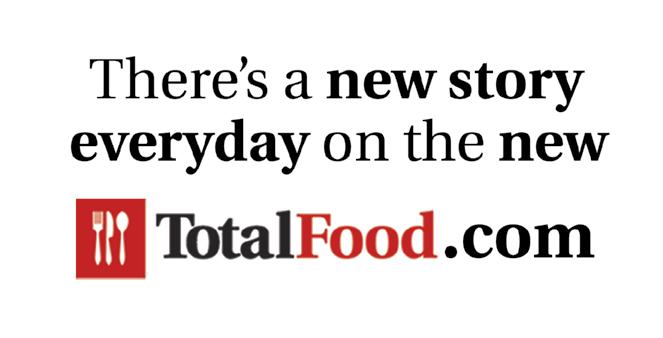
Automated technology driven food storage and holding solutions were on display. Sensors in some refrigerators and freezers can detect whether food is being kept at appropriate temperatures to prevent foodborne illness, reducing food waste due to premature spoilage. Cook & hold ovens can be programmed to automatically record cooking times for easier food safety documentation.
The show also portrayed robotics in a different light. Automation also can help remove a kitchen staff from potentially dangerous cooking activities like frying. Automated controls and cooking processes in frying equipment reduce the need for human workers to complete this hot and greasy job, decreasing safety risks overall.

NAFEM ‘23 also brought a focus on standardizing safety and sanitation. The show aisles featured new equipment solutions can completely automate safety and sanitation processes for consistency – and peace of mind. Some of the more popular technologies include automatic dishwashers or sanitizers, touchless cooking equipment, safe -
ty monitoring equipment, temperature gauges and more.
It should be really interesting to see just how radically different the industry looks when NAFEM reconvenes in 2025. The show is slated for Feb. 26 – 28, 2025 in Atlanta, GA at the Georgia World Congress Center.

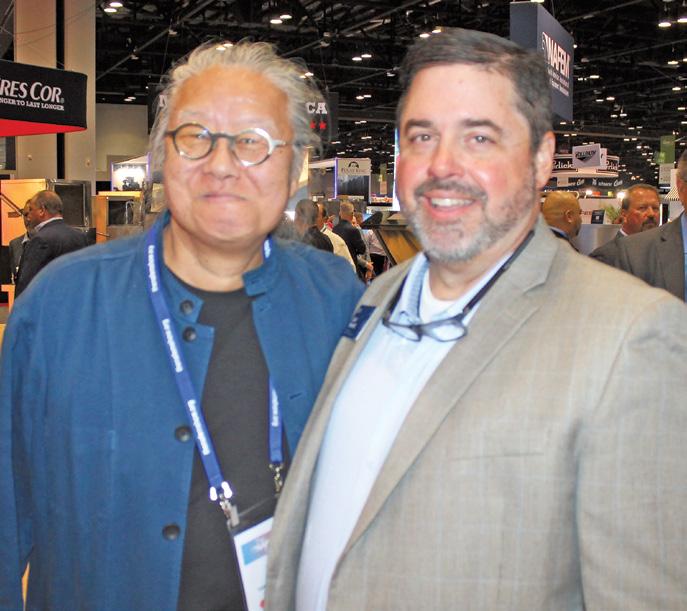


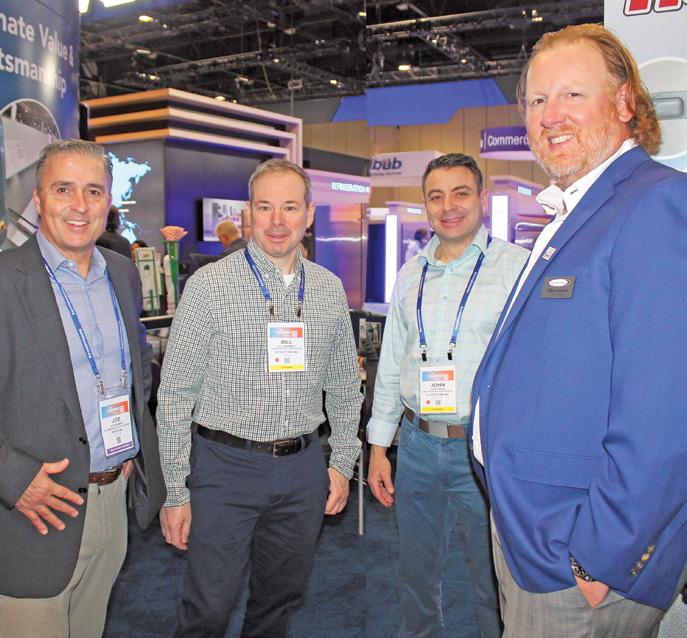
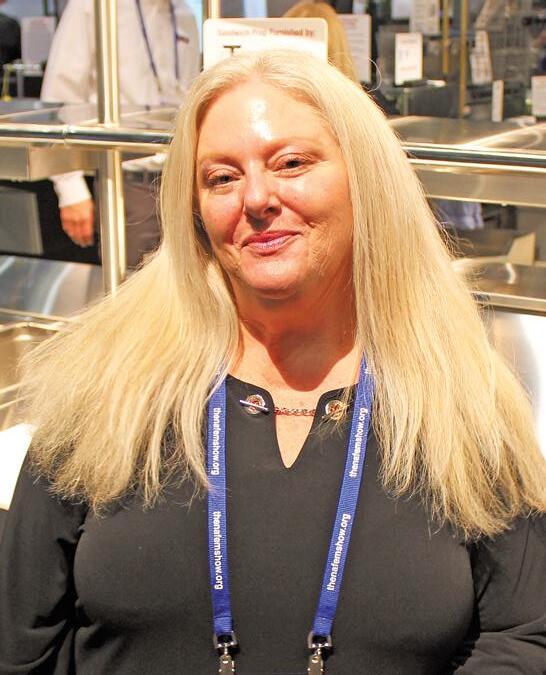
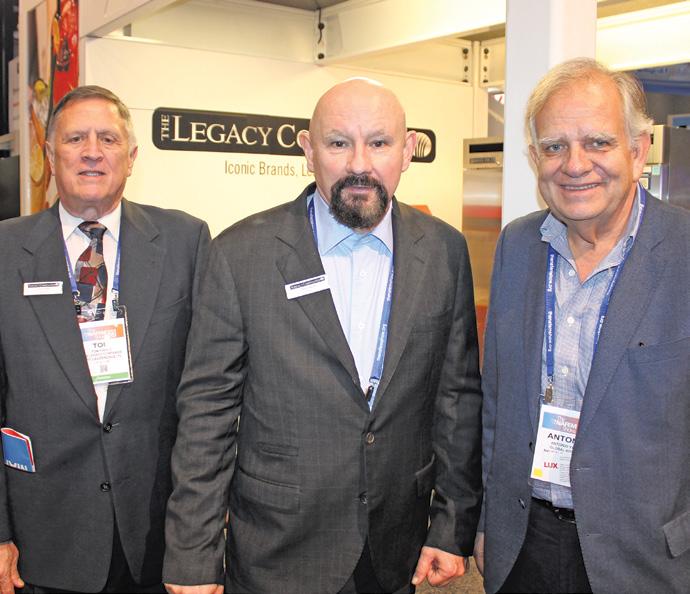

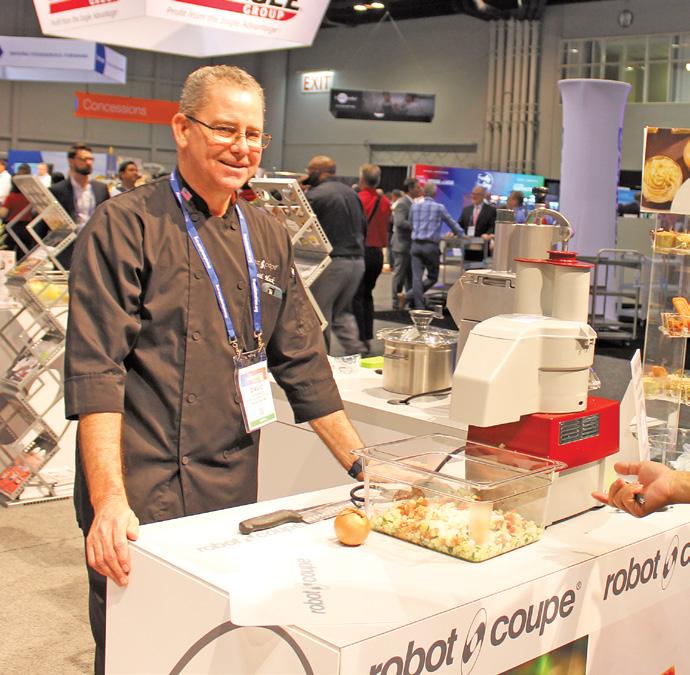

Founded in 1948, NAFEM is a trade association of 500+ commercial foodservice equipment and supplies (E&S) manufacturers – a $14.3 billion industry. These businesses, their employees and the products they manufacture, support the food away from home market – which includes more than one million locations in the U.S. and countless more around the world.

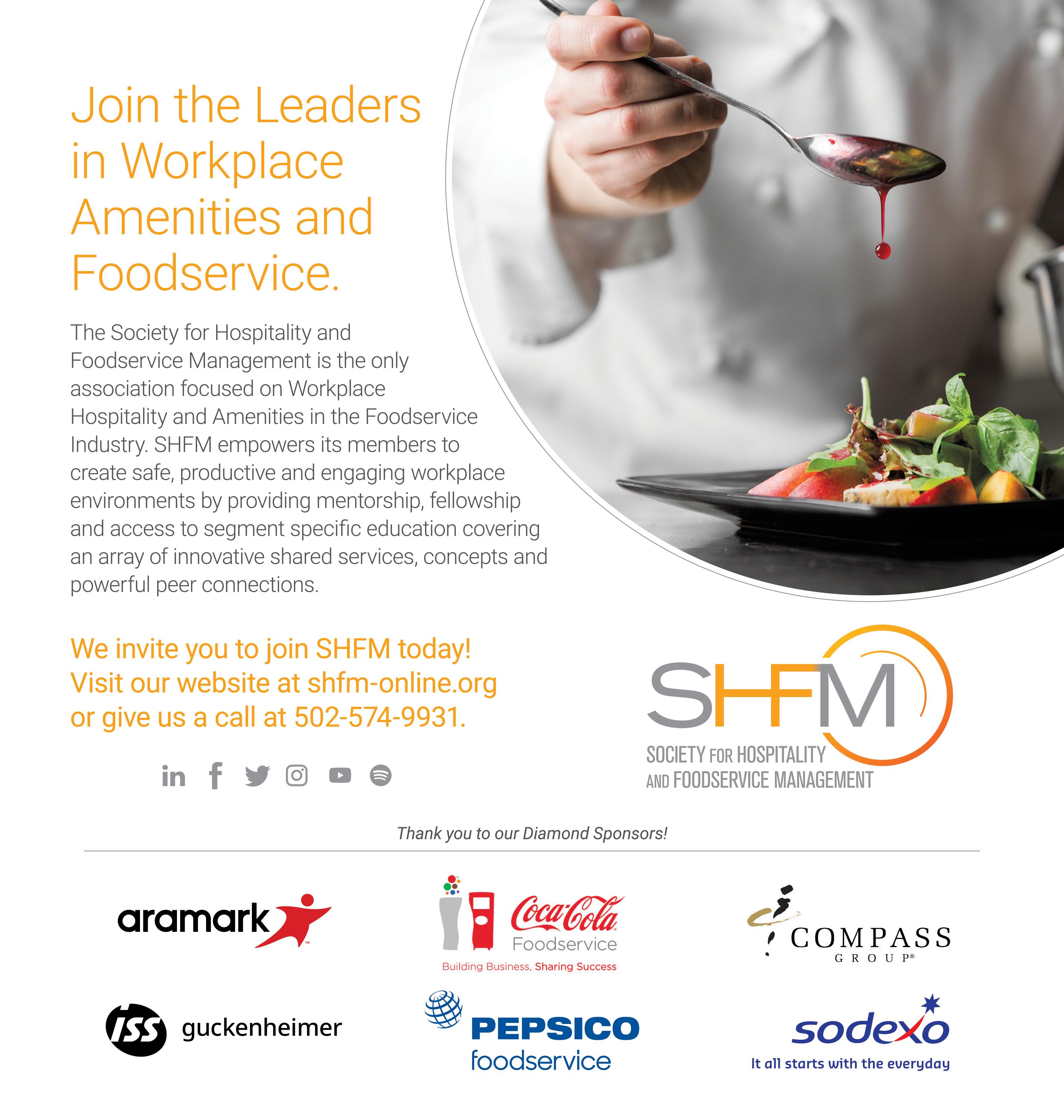
have not been tampered with once it was packaged. We revolutionized the marketplace when we introduced Safe-T-Fresh® with our patented tear-strip technology almost two decades ago. Today, we offer hundreds of shapes and sizes with this extra level of safety and security, so there is always a packaging solution that will fit the individual needs of the retailer and consumer.
Inline has also been on the forefront of green and sustainable solutions. Walk us through that evolution?
It all circles back to our long-standing commitment to innovation. As we look to pioneer new ideas and new technologies, green and sustainable initiatives dove-tail perfectly with our goals. It’s been a multi-faceted approach over the last decade. From installing over 2600 solar panels to help power our Shelton, CT headquarters and manufacturing facility, to developing single-serve packaging options that eliminate food-waste and increase shelf life. We made sure our products are easily recyclable, where recycling is available. We are continuously educating consumers on the importance of putting packaging back into the recycling stream. But the most significant advancement is our “reborn” initiative. In 2020, We were the first food packaging thermoformer to use post-consumer content derived from Advanced Recycling (recycling at the molecular level). All of our products currently use 10% post-consumer content, which will increase as more supply becomes available. Our material, rDPET™, has the lowest carbon footprint thanks to its patented energy efficient manufacturing process, and by using less virgin materials, we are promoting a circular economy that keeps packaging out of landfills.
How did the explosive growth of takeout and delivery through Covid impact your product mix?
Food safety is not a new concern for us. Our tamper-evident technology has been a sought-after feature for two decades. But since COVID,
we’ve seen across-the-board growth in the demand for pre-packaged goods, particularly those with extra layers of security, like our extensive portfolio of Safe-T-Fresh options. However, our recent launch of SafeT-Chef now gives takeout and delivery producers even greater options, as it is the first tamper-evident, tamper-resistant polypropylene packaging product line for hot applications. As consumers continue to look for convenient packaging that offers the food safety they desire, our extensive catalog of products means retailers will have the right packaging solution available to meet the demands of their consumers.
You’re in a crazy competitive marketplace. How do you keep from being commoditized and not just shopped for price?
Our reputation for quality, clarity and innovation sets us apart from the rest of the marketplace. It has a longevity and a history of delivering packaging solutions that provides safety, promotes merchandising, extends freshness, and continues to expand with a growing variety of shapes and sizes to meet every need. Our customer service is also unmatched. Our Innovation Center and Automation Teams are staffed with experts bringing years of experience to creating solutions. Bring us your packaging problem or challenge, then let us solve it.
How does customization and printing enable you to differentiate from the competition?
Many of the products in our catalog are the result of customers bringing a problem, and then our Innovation Center team developing a solution. Multiple compartments to mix and match foods, add-ons for dips and dressings, rigid sides for better merchandising and stackability, are just a few examples. What comes to us as a challenge for one customer needing a custom solution, results in a new feature or product line that the entire marketplace benefits from.
This year, we are seeing a number of rollouts for PFAS free product? What has Inline’s strategy been?
PET and PP products that we manufacture do not contain PFAS. We go even further with active monitoring for the latest scientific developments. This includes stringently and proactively complying with all regulations by the FDA for food-grade packaging as they apply to our manufacturing processes.
2022 was marked by real supply chain issues. How have you been able to keep your customers happy?
Remember, we started as a basement operation in the 1950s. Over the course of six decades, we have faced our fair share of challenges. These have included: expansion across the United States and internationally, developing long-lasting and quality relationships with both suppliers and customers, mergers and acquisitions, multiple new product line releases, and most recently, a transition into

incorporating sustainability initiatives as part of our corporate identity. To put it simply, we look at challenges as opportunities. We know that by combining our deep roots with a culture of innovation and adaptability, we will always find a way to continue providing the products and service our customers expect. These core values are what sustained this company for over 50 years and why we are able to thrive throughout these recent challenges and will continue to do so in the years to come.
What is the next step for an operator/ distributor that would like more info on the Inline product line?
They can start by visiting our website at InlinePlastics.com to browse our extensive product catalog, see the latest releases and features, and connect with our sales, automation and R&D teams with any questions. Our customer experience team is always available.
ticularly at weekends, to highlight, and promote, such events. By also providing their patrons with the ‘on premise’ means to wager on those live sports events, from the comfort of the bar, this clearly provides, for the bar-owner, an additional opportunity for increased dwelltime, extra footfall, high levels of fan-engagement and improved F+B spending patterns.
One of the best-proven ‘on premise’ means are self-service betting terminals (SSBTs), which enable the retail sports betting consumer to self-select and strike their own sports bets. This is done through a networked terminal, typically consisting of a touchscreen, barcode scanner, under-counter unit housing a contactless card reader, cash acceptor and receipt printer.
With the ability of SSBTs to offer and support a wide variety of bet types and markets – and to do so in multiple languages and with a variety of payment mechanisms – operators typically find gross win margins from bets struck on SSBTs to be well above average due to the nature of player betting patterns and above-average selection of higher margin multiple/parlay bets by the player.
Since the introduction of retail SSBT units in New Jersey in 2018, one SSBT provider saw its operatorclients recording a 15% gross win margin on bets accepted through the terminals, contrasting the more normal 7% experienced through alternative betting channels, such as a mobile sports betting app. For operators, SSBTs are an important element of the retail sports betting landscape, with multiple options for retail placement, and location.
In particular, SSBTs have good scope to be customized to deliver a user-friendly, easy-to-understand interface with extensive menu functions for markets and bet-types. For novice bettors, especially, SSBTs helps remove the uneasiness of acknowledging to a human clerk that one is unfamiliar with how to place a bet. So, as they’re convenient, un -
obtrusive, immediately to hand and easy-to-use, consumers really like them, too.


Montana has also passed sports betting legislation, similar to that passed in Washington DC, in which sports betting would be potentially available through its roughly 1,400 retailers; over one-in three of Montana Lottery’s existing, active retailers are already located within the bar and restaurant sector.
Founded in 1976 in Ocean City, Maryland, The Greene Turtle has
become the local community hangout for all ages, serving great food and drinks in a fun, casual atmosphere built on the excitement and unity of sports. The brand’s high level of customer service, culinary menu and locally sourced beers ensure that The Greene Turtle remains near and dear to customers’ hearts. With a flair reflective of its Maryland origins, The Greene Turtle’s food is not your typical “sports bar” fare. The extensive menu features bowls, tacos, crab cakes, desserts
and more.
For more information, please visit thegreeneturtle.com and follow The Greene Turtle on Facebook, Instagram and Twitter.
from

first book, Regan addresses personal and family issues that are highlighted by dislocation and isolation, as well as tensions of American culture that play out in the small towns and woods around them.
One of her gifts as a writer—or perhaps it’s a skill she has honed through determination and hard work—is her ability to identify and pursue what’s important to her, even as she recognizes that she has to find a way of working with those who think otherwise. In Fieldwork, that insight is a source of illumination, even if it cannot solve every problem.
Editor’s
Podcasts- Listen and subscribe wherever you get your podcasts, including on Apple Podcasts, iHeart, Spotify, Stitcher, Google Podcasts, Audible & more.
A perennial Top 30 show on Apple Podcasts’ Food & Drink charts. Dan Dunn is also the resident drinks expert on The Adam Carolla Show (Guiness World Record holder for the most downloaded podcast), and is a judge for the world-renowned San Francisco World Spirits Competition and the ASCOT Awards.

Recent celebrity guests on the show include Pitbull, Matthew McConaughey, Allison Janney, Bryan Cranston, Nick Jonas, Christie Brinkley, Steven Soderbergh, Dan Aykroyd, Tiffani Thiessen, Miles Teller, and Nathaniel Rateliff.

Julia Turshen is a writer and chef and has spent the last several years striving to help create more equity and representation within food media with her community fundraising cookbook, Feed the Resistance and her website, Equity at the Table.


from page 18 WARING
blends. And the charging station recharges the drive in under 2 hours, so you can power up at the end of the day and be ready to resume unsurpassed blending performance in the morning.
Time is money, and the Ellipse™ saves you a lot of both, boosting productivity and profitability. In fact, the Ellipse™ gives foodservice
operators and chefs the power to process their entire menus in a fraction of the time and enjoy consistent blending results no matter what the recipe. The system is engineered to ensure superior performance, resulting in higher sales and freeing staff for other tasks to streamline operational efficiency.

From the thickest smoothies to
robust sauces, the Waring® Commercial Ellipse™ Blender is a must for maximum output with minimal work and waste. The Ellipse™ blending system is a powerful new tool that will revolutionize your mixing experience. With better consistency and speed, this blender will save you time, money, and frustration in the kitchen.
“We’re excited to bring a blender to market that elevates blending to an unprecedented level of speed, power, and efficiency,’” said DeBari. “The Ellipse™ is truly a revolutionary breakthrough that dramatically reduces blending times, eliminates bridging, and exponentially expands culinary possibilities for chefs and foodservice operators worldwide.”
PLANT BASED
from page 52
Tell us about FRESH Med, which you co-founded with your wife Julie in 2016.
FRESH Med came out of a need and belief that medicine needed a FRESH start. Medicine needs more health care, that’s why my wife and I created FRESH. FRESH is a model of care which starts by addressing the 5 ingredients in your recipe to health. FRESH is an acronym for Food, Re -
laxation, Exercise, Sleep and Happiness. In 2018, we launched FRESH Med U our online e-learning platform to allow people and companies access these simple concepts to establish these important pillars of wellbeing.
As a Meatless Monday Culinary Ambassador, how do you see Meatless Monday as a good strategy for
chefs to get more people interested in plant-based meals?
As the late Sid Lerner, co-founder of the Meatless Monday movement, said, “Monday is the day all health breaks loose.” Meatless Mondays are win-win, on the slowest day of the week in the restaurant, chefs can create more plant-based meals and make money. Meatless Mondays are good for both your personal health
and planetary health.
Learn more about FRESH Medicine at https://www.freshmednyc. com/ and FRESH Med U at https:// www.freshmednyc.com/fresh-medicine-university-wellness-program
For Meatless Monday foodservice resources, visit us at https://www. mondaycampaigns.org/meatlessmonday/foodservice

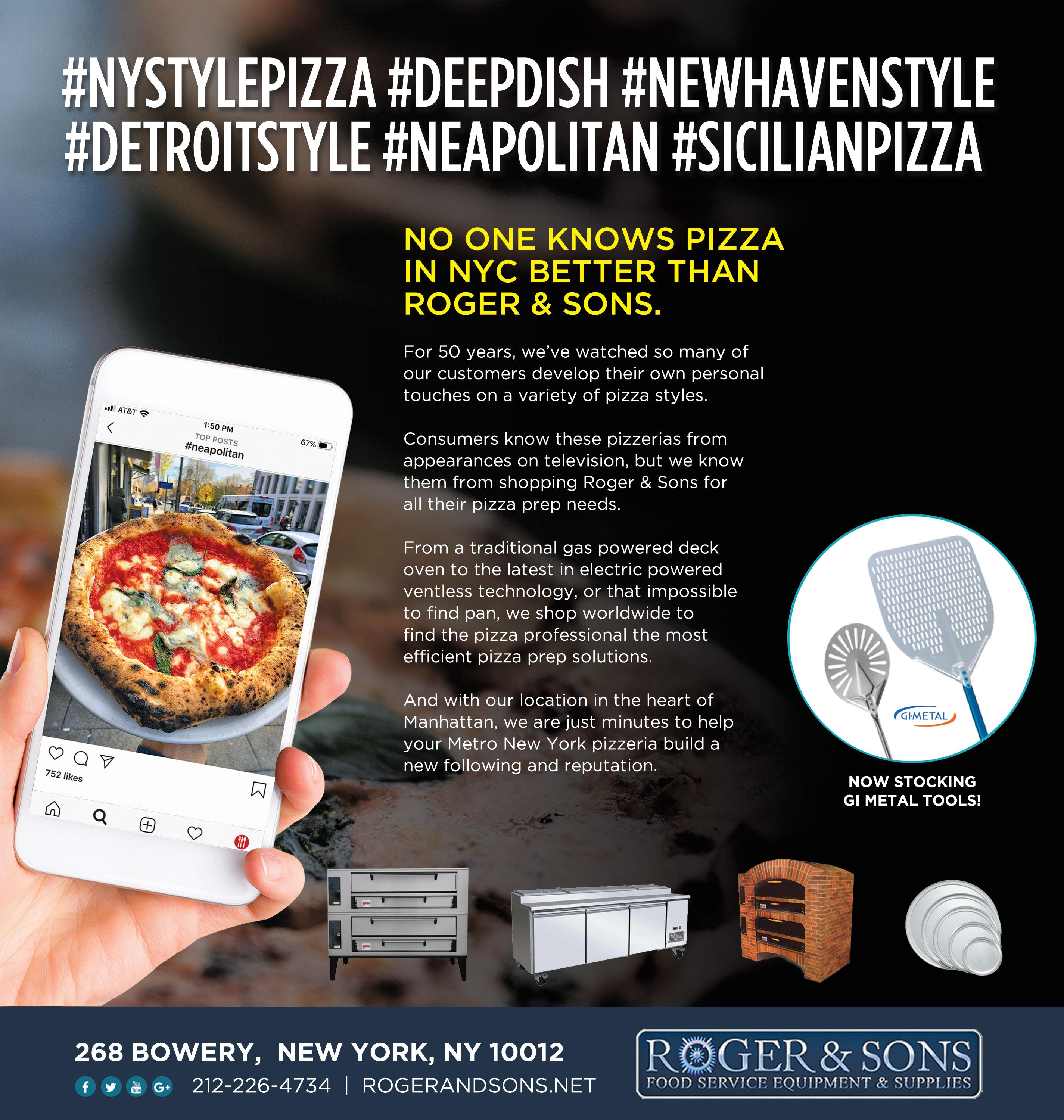
from page 20
As a result, there are two scenarios in which both the restaurant and the marketplace can benefit:
1. The restaurant continues to use its own fleet of drivers with a system that enables them to overflow excess deliveries, at a reduced rate, to 3rd party fleets when their own drivers are at full capacity. This scenario means that a restaurant can fulfill all orders without worrying about expensive fees or poor customer engagement. With this, the marketplace also has the opportunity to capture new order volume and fulfill overflow orders that once may have not been available to them.
2. The restaurant continues to exclusively use 3rd party delivery fleets for fulfillment but incorporates a system that helps them to manage orders, track performance, and avail of discounted delivery rates.
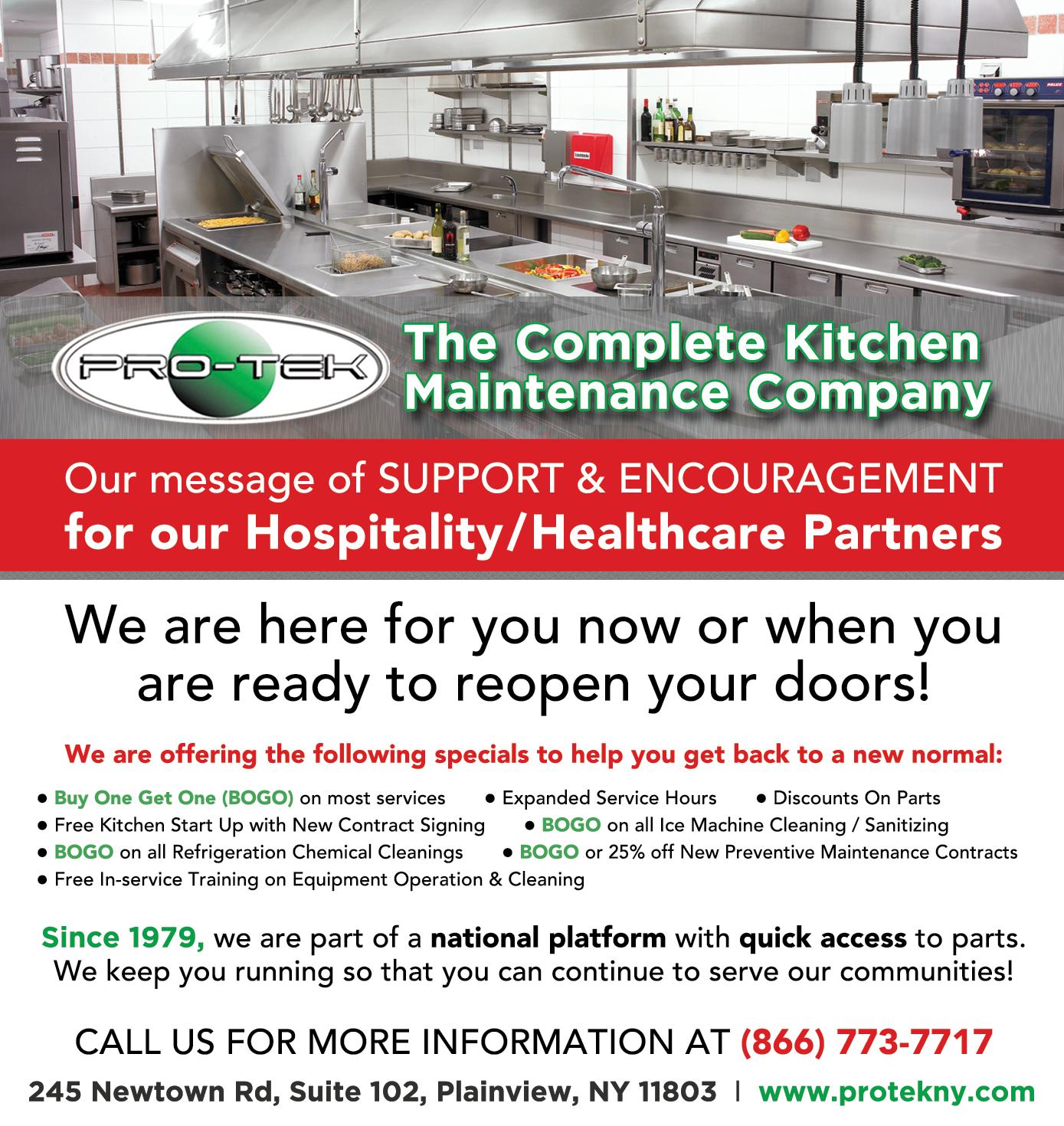
This alternative scenario structure allows restaurants to continue benefiting from the convenience of marketplace delivery in tandem with driving down their delivery
from page 34
Take beginning inventory plus purchase that gives you what you could use. That’s your total product available. Subtract from that your ending inventory at the end of the week. This will tell you how much product actually left the shelves for the money that’s come in.
Whatever left the shelves includes what was sold, stolen, wasted, or spoiled. Use means it’s gone. The math is blind. It just knows that you started with this much product, you purchased this much, you ended with this much and the difference of that is what you used. The formula has no idea if it was stolen, wasted, spoiled, or you sold it or you took it out the back door.
Now you can see very quickly how your food cost goes up because of theft, over portioning, because you
costs. It also ensures the continued need for marketplace apps while offering them the chance to become the priority fleet for that restaurant brand.
In summary, the relationship between marketplace apps and restaurant operators is complicated.
Both parties depend on one another but in order for the relationship to remain structural, both sides need to be profitable.
For restaurants that are looking to increase profitability, the solution is to list with all marketplace apps but be selective with how you manage the delivery aspect of those orders by using the right delivery management software.
By availing of low-cost delivery, gaining greater visibility over the delivery process, and taking back ownership of customer engagement, restaurants can drive down their costs and make their delivery channel more profitable.
If you’re interested in learning more about making delivery more profitable for restaurants, visit our website (www.vromo.io).
from page 78
wear a silk shirt with the business’s logo, that would require the employee having it dry cleaned, and thus the employer would be responsible for the associated uniform maintenance pay.
Another way employers can avoid the expense associated with uniform maintenance pay is to establish a dress code policy rather than requiring specific uniforms. Under a less formal dress code policy, employees would be allowed to wear ordinary clothing of a specific color or style rather than a specific shirt or pair of shoes, for example. To that end, when establishing and implementing a dress code, employers should be mindful to avoid specific name brands or requiring employees to purchase clothing from specific clothing stores or retailers, as this may trigger the rules and regulations associated with a mandatory uniform requiring an employer to purchase and maintain such items. An example of a dress code would be re-
quiring all front-of-house employees to wear black pants and a white tshirt, as opposed to black Levi’s 510 jeans and a white V-neck t-shirt from the James Perse store which would likely be deemed a required uniform.
Employers are also urged to consider having their employees’ uniforms laundered by an outside service. This option may be less burdensome for both the employee and the business, as the employee would be able to get dressed at work and turn their uniform in to be washed before the end of their shift, which would avoid having them carry their uniform with them to and from work and taking the time to wash it themselves. Also, the business would not need to concern itself with computing the appropriate amount of uniform maintenance pay based on the hours the employee worked. Lastly, the cost to the business of using a commercial cleaning service may be less than the total costs of uniform maintenance pay.
threw away product, because you took it out the back door, anything other than selling it.
Your use – the product that left the shelves – divided by your food sales gives you your food cost percentage. With a 30% food cost (just for an easy example, no meant to dictate what your food cost should be), that means for every dollar that comes in, you used 30 cents in food product. Hopefully you sold it, but it could have been stolen, wasted, spoiled, or taken out the back door yourself.
While many get upset that the price of cheese has gone up 15 cents on a pound, and you want to just yell at your distributor, how you operate your kitchen has more to do with why your food cost is high, not your distributor.

and labor shortages.
The industry has recognized that cruisers are increasingly searching for authentic culinary experiences that complement their travel, especially in the expedition market where travelers are continually looking to travel (and eat) off the beaten track, and experience food like a local. With that in mind, F&B@Sea will feature insightful panels such as “Creating Authentic, Local Experiences on Shore” featuring Adam Sachs, Seasoned traveler and world journalist and Director of Silversea’s Sea and Land Taste Program (S.A.L.T.), to help create a unique position to offer shore experiences for foodies that immerse them in local culture.
One of the food and beverage trends cruise lines are tapping into, is guests’ growing interest in sustainability and locally sourced products. The “Intricacies of Responsible Food Sourcing” session will facilitate an
open discussion between cruise line executives and representatives from NGOs to discuss the future of food sourcing and how cruise lines can continue to work to ensure sustainable sourcing in the future.
Attendees can also join “A Look at Chef-Driven F&B Programs at Sea”- a session focused on how cruise lines are bringing well-regarded, chefdriven food and beverage concepts to sea. Travel Journalist David Yeskel, Celebrity Mixologist Rob Floyd, Sami Kohen of Princess Cruises and Chef Rudi Sodamin of Princess Cruises and Holland America Line will anchor the panel. They will explore marketing benefits that can drive bookings and will analyze the inherent challenges in launching those brands to a shipboard environment.
Whether on land or on the high seas, signature taste remains king. Virgin Voyages Director, Food and Beverage Experience and Strategic
Partnerships, Charles Steadman will anchor: “Creating Unforgettable Experiences to Delight the Senses”. This session offers an opportunity to take a step back and see the holistic picture behind food and beverage, pertaining to the design, feel and even smell of the spaces created for your guests.
Understanding that the execution of memorable onboard dining depends on the ability to source the highest quality ingredients, F&B@ Sea, will feature: “Cruise Line Supplier 101” with a pair of the industry’s leading buyers detailing how a potential food/beverage or equipment and supply vendor can untap the growing cruise market. MSC Cruises Managing Director of Procurement & Logistics, Paolo Raia, and Norwegian’s Michelle Solorzano will take potential vendors inside the industry’s $2 billion annual spend on F&B. This panel will be led by CLIA.
Business is back, cruising expectations have changed, and customer confidence has skyrocketed. One thing is certain, cruising is on an upward trajectory. The first-ever F&B@ Sea offers food, beverage, hotel ops and guest experience professionals a unique opportunity during this pivotal time for the industry.
For more information on attending or exhibiting, please visit https://www.seatradecruisefnb.com/en/home/register-now. html?utm_source=ABEPREST&utm_ medium=Comarketing&utm_ campaign=MTM23SFB-AB-PPCdisplay_nonCL
from page 22
blood mary. Slide famous onion rings or tater tots onto a skewer, add it to the blood mary, and you’ve created a unique dish – and potentially reduced food waste.

In their pursuit of the perfect blood mary mix, Red Gold isn’t wasting any time. On an ongoing basis, they’re listening to the needs of their customers, which include upand-coming eateries as well as food chains and renowned restaurants: most notably, in New York City, where Bloody Marys originated at Carmine’s, and other famous restaurants including Boston, MA based Legal Sea Foods view Sacramento® tomato juice as the “gold standard” for their Bloody Marys and other dishes, said Halt.
One of the most common questions is how to properly serve a Bloody Mary, which Halt summarized: “You want to use a tall, clear glass,” he said, “so you can see the brilliant red of the tomato juice.” The traditional round glass works
well, although “cut glass” shows off the body of drink.
Regardless of the glass, Halt recommends serving Bloody Marys in a standard 16-ounce size with the garnish of choice. When it comes to this time-tested drink, the fruit stems from the foundation, while the “fun” is subject to food makers’ discretion: be it the garnishes, alcohol, or glass style. Whether they stick to celery or pile on the sliders, restaurants serve a great cocktail – and potentially, a hearty breakfast – when they use Sacramento® Bloody Mary mix.
To support operators in the restaurant industry, Red Gold uses a network of food service brokers, who are trained to answer any questions about Red Gold products and applications.
More information is available on how to add the next generation of Bloody Marys to your menu on the web at https://redgoldfoodservice. com/ or by calling 866-729-7187


from page 48 VIOLIFE
a queso recipe he masterminded that is used by numerous chains nationwide.
Gochin praises Violife’s product line as both broad and versatile, enabling chefs to have a perfect dairy alternative in every culinary situation. Violife’s line of cheese products, alone, demonstrates the brand’s dedication to including options that suit a variety of palates, including alternatives to cheddar, mozzarella and colby jack cheeses, which come in an easy-melting shred form, and cheddar and provolone alternatives that come in slice form. Violife also offers blocks, including grateable parmesan, a delicious, crumbly feta that Gochin describes as a “cross between traditional goat cheese and feta,” and tubs of smooth and creamy vegan cream cheese. Gochin cites Violife’s plant butter and plant cream as the stars of their vegan offerings: “the Plant Butter is a one-to-one replacement for dairy butter and is made from pea protein, so it has a higher heat resistance and shelf life and is cheaper than its dairy counterpart.” Similarly, Violife’s heavy whipping cream alternative, which is lentil-based, whips effortlessly to stiff peaks and requires less reduction when cooked in sauces.
Gochin, who draws from his experience as a commercial chef, explained, “Our Violife professional products are very much chef-driven and perform well in all of the recipes I’ve made over the course of my career. The perfect pizza cheese, for example, has a higher heat tolerance
and better stretch, which is what all customers and chefs are looking for on a pizza.”
The company’s ethos is not geared towards one demographic segment or culinary specialty: “We target anyone using butter and cream – or any dairy products – because Violife products taste delicious, deliver that cheesiness and creaminess consumers want, and perform incredibly well,” Gochin detailed. What’s more, the Violife portfolio of products was carefully designed to exclude common allergens such as nuts, gluten, lactose and soy, and is certified kosher, which enables foodservice professionals to offer diet-flexible options to their customers. By creating experiences that can be enjoyed by both the omnivore, the flexitarian, and the vegan, Violife accommodates a greater number of guests without compromising on flavor, and helps boost customer retention and social media engagement. “At the end of the day,” Gochin stated, “there’s nothing worse than steering the Titanic – if chefs can swap out dairy with our products on a one-toone basis, it saves a lot of headaches, stress, and recipe reinvention.”


Clearly Violife is a brand that creates delectable products with their customers – both chefs and consumers – in mind. Violife’s line of products helps to create a memorably delicious culinary experience for all.
For more information regarding Violife®, its product line, or purchasing, visit https://violifefoods.com/us/











